
How Much Is a Sailboat? (Average Cost of Buying & Owning)

Last Updated by
Daniel Wade
June 15, 2022
You've probably spent an afternoon at a busy marina, right? And whether you've sailed with a crew or are simply attracted to the leisurely lifestyle of sailing along the coast, being the proud owner of a sailboat is a dream of many. But what is the average cost of buying and owning a sailboat? This comprehensive guide will help you understand the realities of buying and owning a sailboat.
If you've spent time on a friend's sailboat or enjoyed a few weekends with a sailboat rental, you certainly know that having your sailboat can be an incredible experience. Having your own sailboat can give you the freedom to enjoy sailing, exploring, fishing, and watersport while creating fun memories with friends and loved ones. If anything, sailing is an activity that you can indulge in and enjoy anytime you like.
Most of us have been told that you need "Mt. Everest" sort of money to own a sailboat. This is just a widespread misconception that can take the wind out of your sails, so to speak, before you even hit the waters. Although owning a sailboat does cost money, it's quite affordable than most people think.in addition to the cost of buying your sailboat, there are other costs and expenses to consider. It only makes sense that you know all the costs involved in boat ownership so that you come up with a better plan and budget.
So what's the average cost of buying and owning a sailboat? The price of owning a sailboat may vary depending on several factors such as the size of the sailboat, its model, whether it's new or used, and how often you use the sailboat. For example, a new Islander 36' can cost nearly $150,000 while a used one can cost you around $40,000. Again, the price of a new 26' Catalina can cost you around $80,000 while a used one can cost you about $20,000. The annual maintenance cost can range between $2,000 and $3,000 for most boats while the total annual costs can be somewhere between $3,000 and $7,000.
In this comprehensive guide, we'll show you all the costs you've ever wanted to know when it comes to buying and owning a sailboat. This will at least ensure that you spend less time worrying about the costs of owning a sailboat. Instead, you'll spend more time having fun, exploring the world, and having fun with friends and family.
Table of contents

The Initial Purchase Cost
The most obvious cost involved in buying a sailboat is the initial purchase cost. The price of the boat will vary depending on a few factors such as the type of the boat, the size, whether it's new or used, its condition, and many more.
In most cases, buying a used boat is a lot cheaper than buying a brand new boat. Keep in mind that buying a brand new boat is almost comparable to buying a brand new car. You'll not only pay a huge premium but its value will depreciate immediately after you buy it. More importantly, you should first consider the types of activities you want to use the boat for and how often you'll be hitting the waters.
When buying a used boat , the rule of thumb is to prudently look for a 2 to 10-year-old boat. This is a great way of saving on the initial purchase cost. You should, however, check if it's in perfect condition. For example, you should get an expert to check the viability of the hull, drivetrain, and even the engine if it has any.
If you don't have enough cash to buy a sailboat outright, you can consider various financing options that are available out there. You can either choose to use your bank of a specialized marine lender. Keep in mind that factors such as your income, credit rating, and the value of the boat may be considered. These options can make boat ownership quite affordable, though you may have to pay some down payment.
Normally, brand new boats will come with warranties but this may not be the case when buying used boats, especially from an individual. You should, however, make sure that you get a warranty of some kind to cover you in case of anything negative. You should ask for maintenance logs and receipts for parts or repairs.
Buying a Brand New or a Used Sailboat
In addition to the typical costs of owning a boat such as maintenance and mooring, which we will discuss later, buying a brand new or a used sailboat come with potential hidden charges. They include:
Surveying or Inspection Cost - It's generally advisable that you have the boat inspected before purchasing it. This, of course, is crucial whether you're buying a brand new boat or a used boat. So in addition to the cost of buying the boat, you should also have inspection fees that could be around $1,500 for inspection fees and around $800 for the survey.
Buying a boat without proper inspection can be detrimental especially if it turns out that the boat is in bad condition. It would be really short-sighted on your part to buy a boat without proper inspection especially if you take into account the fact that marine mechanics are very complicated and costly. Normally, inspection should be carried out by a profession but here are some of the things to look at.
- Check the sails, batteries, and the engine
- Pull out the dipstick and check the engine
- Check the boat's hull
- Make sure that the safety gears of the boat are in tip-top condition
Even though pre-purchase boat inspection can be grueling especially if you're looking at many different boats, it's of great importance if you do not want to waste your hard-earned money by purchasing a lemon. You should, therefore, always consider paying for a thorough and professional inspection even if it means you'll lose $1,500 and end up not buying the boat.
With that in mind, you should be prepared to pay for inspection whether or not you'll make the final decision to purchase the boat. For instance, you can carry out an inspection, get unsatisfied, and choose not to buy the boat. In such a scenario, you'll be short of $1,500 and still walk home without a boat.
Add-ons - Generally speaking, a boat should come with essential add-ons such as sails, anchors, life jackets, and rigs. But what if the particular boat that has captured your attention doesn't have this essential add-on? Well, you may have to go into your pocket and buy these add-ons. However, make sure that you use such add-ons to negotiate for a lowered price.
Depreciation - Needless to say, the cost of a brand new boat will depreciate immediately after you buy it. In other words, it's not possible to sell the boat at the same price at which you bought it.
Although it's generally said that the value of a boat depreciates quickly after purchase, it's quite difficult to predict the rate of such depreciation. Figures will, of course, vary depending on various factors such as the style and age of the boat. To give you a rough idea, new boats may lose around 40-50% of the initial purchasing cost in the first 8 or 10 years.
This depreciation rate will reduce about 5% annually after 10 years, though the condition of the boat may have a significant bearing on the value of the boat. You may have to replace things such as the sails, electronics, batteries, and canvas after every 5 years. But with proper care and maintenance, these parts can last longer and save you from unexpected expenditures.
Moorings and Storage of the Boat
The cost of mooring your boat may vary based on the nature of the marina, the facility, and the region. However, it's easy to quantify these costs, even though you'll have to do some considerable legwork if you want a budget-friendly option. You can easily find a mooring costing about $500 for a 30ft boat but the same space can cost well over $6,000 in prime locations.
In addition to working within a budget, the most important thing is to ensure that your boat is securely moored or stored, especially against pilings, banging, spillage, or breaking free. Without this, you could end up having to deal with avoidable repair costs.
Insurance, Registration, and Taxes
Insurance is not a major expense, particularly when compared to other costs. In fact, it's relatively cheaper and should be a problem. The cost of insuring a boat will depend directly on the value of the boat. Generally, the insurance cost maybe about 1.5% of the boat's value. For example, if the value of your boat is $30,000, the insurance cost may be about $450. Believe it or not, the insurance cost of your boat is a lot cheaper than the insurance cost of the car despite the significantly lower value of the car.
In terms of taxes, this may vary depending on your state. For example, South Carolina charges about 10.5% of the boat's yearly value while Rhode Island has no boat tax. The registration cost may also vary from state to state but may cost about $250.
Maintenance Costs and Repairs
Just like any automobile, owning a boat comes with monthly and yearly maintenance costs. The costs may, however, vary depending on the type of the boat, its size, the rate of use, and your geographical region (such as saltwater and freshwater).
Needless to say, a new boat will cost a lot less in terms of maintenance than a used boat. There are engine maintenance costs, hull maintenance, winterizing, rigging inspection, sail assessing, and many more. Generally, the yearly maintenance cost can be 10% of the boat's value. For example, maintaining a boat worth $30,000 would be $3,000 per year. You may also have to consider some unexpected repair costs in case there's unplanned damage on your boat.
Operating Expenses
There will, of course, be operating expenses every time you run your boat. For example, you'll have to fuel the boat if you aren't planning on using the free winds to sail. On top of the fuel costs, there are other costs but this may depend on the type of your boat. For example, you may have to buy fuel additives to eradicate ethanol problems if your boat has a carbureted engine. If your boat uses some sort of electricity, you may want to consider expenses such as electricity bills.
So how much should you budget for operating expenses? This may be difficult to say as it can vary greatly. It may depend on the amount of time you spend on the water and how often you go sailing. It's, however, advisable to budget beforehand to at least have an idea of what to expect.
15 Popular Sailboats and How Much They Cost
While there are a lot of great sailboats out there that can be quite affordable, others can be very expensive. But even with that, there are a lot of great boats that are affordable and can serve you well. Let's look at these 15 popular sailboats and how much they cost.
1) Catalina 30 ($18,000)
Depending on the year of production, a Catalina 30 can cost around $18,000. Having been around since 1972, the Catalina 30 is known for its great performance both when racing and cruising. This is a boat that will never let you down when sailing or racing. Well, that's because it brings forth a perfect blend of comfort, durability, and speed. If anything, buying a Catalina 30 would mean that you're the proud owner of one of the most popular sailboats of all time.
The Catalina 30 is very affordable and comes fairly equipped as a very basic but reliable boat, though you can significantly improve its functionality if you customize it. There are so many Catalina 30s in the globe that it shouldn't be a problem finding one that suits your budget in terms of the initial purchase cost and maintenance cost.
But like with any boat, you should be willing to compromise when it comes to certain features. However, you can significantly improve it if you spend some amount on improving it. All in all, a Catalina 30 is one of the most affordable and easy to maintain boats in the world.
2) Islander 36 ($22,000 and above)
Built from 1971 to 1985, the Islander 36 was and remains one of the longest-lived 36-footers in the U.S. market. With over 1,000 units built during that period, this was a sailboat that was designed by the widely revered Australian boat designer, Alan Gurney. It's possible to find a worthy Islander 36 for $22,000 or slightly above that. This is perhaps because it goes against the normal norm of using a balsa deck. Instead, the Islander 36 is designed with plywood, which increases weight and elegance but can be prone to rot.
In the past, the Islander 36 looked conservatively modern given that it had a flattish appearance. But by today's standards, the Islander 36's hull is very ideal for both racing and cruising. It has a moderate beam and perfectly carried aft so that it doesn't squat excessively even when the boat is fully loaded.
This is a boat that is easy to sail single-handedly, especially with an autopilot. It has superb speed and points well into the wind. It also offers plenty of space and the utmost fun when sailing in windy conditions. In terms of maintenance, the Islander 36 is made with very durable parts that make it a lot easier to maintain. It also has one of the best values, especially if you want it for coastal sailing.
3) Contessa 32 ($30,000-$50,000)
Designed in 1970 by David Sadler and Jeremy Rogers, the Contessa is a very capable and larger alternative of the Contessa 26. With over 750 units built, the Contessa 32 remains one of the most popular cruiser-racer sailboats of all time so it's not a surprise that its cost can be quite hefty.
This is a seaworthy vessel that's superb for offshore voyages even when the weather seems to be extreme. In other words, the Contessa 32 has become widely revered thanks to its ability to endure rough seas and harsh weather. That's not all; a Contessa 32 will never disappoint you in a race.
In essence, the Contessa 32 is a great boat that will give you the confidence of sailing far and wide even single-handed. This is an incredible upwind boat that's impeccably behaved and easy to maneuver, though it can be a bit difficult to handle when sailing downwind. If you own a Contessa 32, you'll never crave anything else as it's durable, easy to maintain, and will serve you across generations.
This is not just another fiberglass boat. It's a great boat that may seem expensive given its initial cost but has unmatched curricula vitae. This is a worthy sailboat that means that you'll be joining a cult of the few.
4) Pearson 34 ($14,000-$30,000)
Pearson is one of the well-known producers of sailboats in the world. Since the 1980s, the Pearson 34 has been magnificently sailing the blue waters thanks to its superb sails, electronics, and equipment.
This is, without a doubt, a real eye-catcher that's highly comfortable for day sailing, weekends, and extended voyages. In terms of pricing, the Pearson 34 is fairly priced though it may seem quite expensive when compared to most sailboats on this list. However, that may not be true especially if you consider the many features that come with the Pearson 34.
This is a sailboat that can be easily handled by two people, which is one of the main reasons that it remains competitive in the market today. This boat has plenty of room but has some shortcomings such as small tankage of 22 gallons. Its 6 foot daft can also be an issue but this isn't an issue in a keel version.
In short, the Pearson sails are great and are easy to handle though you'll have to make sure that it's perfectly maintained, which can be quite costly.
5) Nordic 40 ($130,000 and above)
Designed by Robert H. Perry, the Nordic 40 is thus far the biggest and the most expensive boat on our list. This is an excellent offshore sailboat that's willing to take on many challenges with a special aura.
In addition to being quite roomy, the Nordic 40 has a deep-draft fin keel that gives it a superior windward ability. It has large fuel tanks and fresh water tanks that will ensure that you're sufficiently fueled for your voyages.
This is a thoughtfully designed sailboat that should offer the utmost comfort for your bluewater escapades. It will allow you to confidently cruise through your chosen grounds with ease while turning heads. Given that it's a pretty large boat, you should be prepared for some hefty maintenance costs. All you have to do is make sure that you take good care of it if you're lucky enough to find one to purchase.
In short, the Nordic 40 should be in excellent condition at all times. Make sure that the sails are in top condition and upgraded at all times. If you want to enhance your sailing experience, make sure that the interior is also upgraded to modern standards. All in all, this is a gem that you'd be very lucky to call yours.
6) Peterson 44 ($73,500-$230,000)
Designed by Doug Peterson for Jack Kelly Yachts in 1976, the 44 is a dedicated cruiser that can sail perfectly in any type of wind. With only 200 units built, finding this unbeatable sailboat is quite difficult but not impossible. For those who have owned it, they have nothing but lots of praise for this moderate-displacement blue-water design.
With a low-profile center cockpit, the 44 remains an eye-catcher not just physically but also aesthetically. The long-fin keel with a cutaway forefoot and after-body is essential in reducing wetted surface. The 44 is easy on the helm with a servo-pendulum wind vane that makes handling quite controllable. It's even much better if you use autopilot with many owners reporting that heaving-to with a reefed main and staysail set is the best option, especially in heavy weather.
30 years since it debuted, the 44s still play the seas. Ask any owner of this beauty and he/she will tell that the boat's performance is impressive and among the best. Both Jack Kelly and Doug Peterson were from San Diego and many of these units were sold on the West Coast.
Today, this is a classic that many owners are very proud of. This is a fine sailboat that was designed for long voyages given its ample accommodation and comfort. It is also more solid and very dependable.
7) Nor'Sea 27 (Less than $30,000)
This 27-footer sailboat designed by Lyle Hess is one of the most ocean-capable and quite affordable sailboats that are still in production today. This is a very compact sailboat that can be moved safely and easily by trailer from one area to another or across any ocean.
Do not get duped by its small and compact size; this is a very solid sailboat that can withstand even the worst of weather conditions. In addition to a lapstrake fiberglass hull, this boat has sturdy bulwarks, a full keel, and a round stern that gives it the utmost seaworthiness.
The Nor'Sea should just be evaluated in terms of features. It should also be evaluated in terms of its sailing performance and comfort too. This is a versatile boat that is of high quality. It is a tight little boat that is spacious and can be easily transported. The cost of the used models may vary considerably but this may depend on the age of the boat, condition, and quality of finish. Given that this is one of the most transportable boats, it will be sold together with a trailer. As such, you shouldn't overlook the cost of replacing a trailer as it can cost as much as $9,000. So if you need an affordable and compact boat to circumnavigate the globe, the Nor'Sea 27 may be a good option.
8) Cal 34 ($19,000-$30,000)
Designed by Bill Lapworth, the Cal 34 is a beautifully balanced boat that will make sailing quite delightful. This is a very dependable boat that has a solid reputation not just for its rugged design but also for its incredible sailing characteristics.
Although Lapworth was not the inventor of light-displacement cruiser-racers, he puts his stamp on this design. This is one of the most successful sailboats that have had various configurations from 1966 to 1979. This model has an enviable reputation as one of the best-designed sailboats in the industry. Its performance is superb and can mix with the best racers even though it's typically a cruiser.
It has various extras that make it safe and comfortable. For example, this boat comes with a cockpit cushion, sound system, outboard, and superb ground tackle. This is, without a doubt, a worthy sailboat that will serve you well for many years to come as long as you maintain and service it properly.
According to owners, the Cal 34 requires a good breeze to get it moving. This is because it has a trapezoidal fin keel that brings a more wetted surface than most modern fin keelboats. It has a lot of efficient features such as better sail handling layout, efficient rig. Wheel steering, diesel engine, anchor locker, a more useful interior layout, and bigger water capacity.
When buying an older model, keep in mind that most parts are now obsolete and can be difficult to find. So if the boat is not properly maintained, you may find yourself a boat with hard-to-find parts.
9) Catalina 38 ($25,000-$75,000)
With its reputation, it is not surprising that the owners of the Catalina 38 agree that sailing windward is like sailing on rails while it does magnificently well in light air. Debuted in 1978, this racer-cruiser was designed by Sparkman & Stephens. Although it's currently out of production, there are about 365 units built from 1978 to 1990.
Down below, the Catalina 38 is designed molded hull liner and teak trims and veneers like the ones used in drawer facings, doors, and bulkheads. Like most boats designed as IOR warhorses, they tend to be unstable downwind and this is a major drawback that you should consider when buying the 38. To deal with this, you shouldn't overpower or sail it extremely hard given that it's unstable and can topple over.
As a recreational keelboat built mainly of fiberglass, the Catalina 38 has nurtured loyal following with many owners praising its design, quality, and performance. This is a classic boat that's rare and considered some sort of vintage, so you'll be very lucky to get your hand on it. All in all, the Catalina 38 will perform consistently and magnificently for many years to come provided that you're lucky to get your hands on one of them.
10) Hunter 33 ($55,000-$95,000)
Although the Hunter 33 originally debuted in 1977, there's a new model that was introduced in 2011. This new model doesn't have the old-fashion features of the original Hunter 33 but is selling quite well given that it's devoted to pursuing innovations. In addition to being quite modern, this is an affordable (by its standards) boat that combines ease of handling, comfort, and incredible performance. This is a model that seems determined to make sailing less complex and more fun.
Despite such an overall impressive quality and performance, you can purchase the Hunter 33 for less than $100,000. More importantly, the boat is solid on the water. The hull is solid and is strengthened to ensure that it doesn't suffer from any impact. Thanks to its upgraded quality construction, excellent design features, and comprehensive standard gear package, it's very likely that the Hunter 33 is on its way to becoming another bestseller from one of America's well-known boat brands.
11) Tayana 37 ($34,000)
The Tayana 37 has a real love story that may be so captivating to any boat lover. This boat was done in the 1970s by Robert Perry who is still considered as arguably one of the most prolific boat designers to ever grace the world. When designing the Tayana 37, Perry wanted it to be a cruising sailboat with a more traditional touch in terms of appearance and features.
The Tayana 37 was, therefore, designed with a moderately heavy displacement, a very efficient cutter rig with a modern touch, and a long waterline. Perry's main intention was to market the Tayana 37 as a boat with a double-ended hull that could keep the displacement moderate while performing efficiently.
In essence, Perry was inspired to design the Tayana 37 as a typical Taiwanese boat, so it's important to read much about the Tayana 37 before buying it. When compared to other boats of her size and type, and displacement, a well-equipped Tayana 37 stands well above the rest. You'll, of course, have to handle it properly and well-maintained. This will be a great retirement sailboat, especially if you're experienced and planning to sail as a couple.
12) Contessa 26 ($18,000)
Like her bigger sister that we discussed earlier, the Contessa 26 was designed by David Sadler and Jeremy Rodgers in the 1960s. This is a sailboat that goes against the norm by showing that a boat doesn't have to necessarily be fast or have a groundbreaking design to be considered legendary.
With a posse of young adventurers, Contessa 26 captured the hearts and minds of many sailors across the world. This not only made it legendary but ensured that it had a place in the memories of many sailors. That's not all; the Contessa 26 held its place as a strong and seaworthy boat. In addition to performing excellently well in transatlantic races of yesteryears, the Contessa 26 was good-looking. It has a narrow beam and a low freeboard but with a large cockpit for such a small boat.
Although its upwind performance is wanting, you won't require much wind to get it moving but will be guaranteed of surviving nearly any storm. As one of the most popular British sailboats, Contessa 26 remains one of the most affordable sailboats in the world. You can get a perfectly maintained Contessa 26 with as little as $18,000.
13) Bristol 40 ($29,000-$49,000)
Designed by Ted Hood in 1970, the Bristol 40 remains one of the best cruising sailboats of all time. This is a reliable and attractive passagemaker that can be summed as being an eloquently excellent offshore design that looks perfect but very slow.
But whatever it misses in terms of speed, the Bristol 40 compensates in its construction. With an excellent hull that is also bulletproof, it is perfect and very stable with a long keel that always receives high grades from owners.
The Bristol 40 may not be a modern design but you'll find it quite appealing if you like traditional sailboats. It has long overhangs, low freeboard, a lovely sheerline, an undistorted hull shape, a narrow cabin trunk, and a narrow beam that's typically associated with the gorgeous sailboat of the past.
This is an exceptionally gorgeous sailboat that's carefully refined and very popular with fantastic owners who are always willing to pay high prices just to be proud owners of a sailboat design that has been around for over 3 decades. This can be a great option if you like the traditional looks of past sailboats. It's perfect for coastal cruising but may let you down for offshore voyages.
14) Island Packet 31 ($35,000-$50,000)
If you've been looking for a gorgeous sailboat that's perfect for shallow water sailing, the Island Packet 31 is one of the best options. This is a boat that's designed with the kind of shoal-draft required to safely navigate shallow coastal waters.
Let's be very honest. The Island Packet 31 is not the fastest boat and surely not one of the fastest boats out there. Fortunately, this small-sized boat isn't designed to win races. Instead, it's designed for leisurely cruises around the coastal areas. That's why it delivers ultimate comfort and interior volume, as well as a smooth and soft motion when sailing.
It has a solid fiberglass hull that's finished with a high-end end-grain balsa core deck to prevent rot and delamination. We have to note that her seaworthy credentials aren't among the best but it can be a solid investment if you're looking for a good-looking boat that may serve you perfectly in shallow waters.
But before investing your hard-cash in buying this beauty, make sure that every gear is working perfectly. For instance, look at the wind indicators, the halyards, and every other part. You certainly do not want a gear that isn't working as this may cost you an additional $1,200.
15) Tartan 37 ($23,000 Upwards)
If you look at the gorgeously pleasing and modern lines of the Tartan 37, you'd find it quite hard to believe that this model was designed way back in 1976. Designed by Charlie Britton in collaboration with Sparkman & Stephens design team, Tartan 37 remains a beauty that is functional and reliable, especially for offshore cruising and racing.
The Tartan 37 remains a popular choice for several reasons. With a carefully hand-laid hull, this boat is molded as a single unit. Various high-stress areas such as the mast step, engine bed, thru-hulls, shroud terminals, and keel sections are cored with solid glass and end-grain balsa to make them extremely strong.
In terms of performance, this boat is a great performer in the off wind and will hold its own among the best. It has plenty of rudder contributions as well as incredible control especially when in full motion.
The Tartan has great value but this may depend on several factors such as condition, year of manufacture, and equipment such as electronics. So when buying a used Tartan 37, make sure that it's in a good and capable condition. All in all, the Tartan 37 is a reliable and proven sailboat that should fit the billBottom Line.
Bottom Line
Owning a sailboat is not an easy adventure but nobody said it's impossible. You certainly do not have to be a millionaire to own one! The most important thing when it comes to owning a boat is knowing the type of boat that you desire, how much it costs, and the many but affordable costs that revolve around owning a boat. If you plan appropriately and have a reasonable budget, then buying and owning a boat should be an enjoyable adventure.
As such, you shouldn't have the idea that owning a boat is a costly endeavor. They come at various prices, so you should go for something that you can afford. And whatever type of boat you own, it's important to have an idea of the costs of owning one. More importantly, make sure that these costs are kept in check.
Go out there and enjoy the winds!
Related Articles
I've personally had thousands of questions about sailing and sailboats over the years. As I learn and experience sailing, and the community, I share the answers that work and make sense to me, here on Life of Sailing.
by this author
Buying a Sailboat
Financial and Budgeting
Most Recent

What Does "Sailing By The Lee" Mean?
October 3, 2023

The Best Sailing Schools And Programs: Reviews & Ratings
September 26, 2023
Important Legal Info
Lifeofsailing.com is a participant in the Amazon Services LLC Associates Program, an affiliate advertising program designed to provide a means for sites to earn advertising fees by advertising and linking to Amazon. This site also participates in other affiliate programs and is compensated for referring traffic and business to these companies.
Similar Posts

Best Bluewater Sailboats Under $50K
December 28, 2023

How To Buy A Cheap Sailboat
August 23, 2023

How To Choose The Right Sailing Instructor
August 16, 2023
Popular Posts

Best Liveaboard Catamaran Sailboats

Can a Novice Sail Around the World?
Elizabeth O'Malley

4 Best Electric Outboard Motors

How Long Did It Take The Vikings To Sail To England?

10 Best Sailboat Brands (And Why)
December 20, 2023

7 Best Places To Liveaboard A Sailboat
Get the best sailing content.
Top Rated Posts
Lifeofsailing.com is a participant in the Amazon Services LLC Associates Program, an affiliate advertising program designed to provide a means for sites to earn advertising fees by advertising and linking to Amazon. This site also participates in other affiliate programs and is compensated for referring traffic and business to these companies. (866) 342-SAIL
© 2024 Life of Sailing Email: [email protected] Address: 11816 Inwood Rd #3024 Dallas, TX 75244 Disclaimer Privacy Policy
- Explore boats
- Text (910) 447-2456 Call (910) 447-2456
Sailo's Boat Calculator
The Sailo Boat Calculator is a tool that allows you to explore, predict, and plan costs and revenues associated to boat ownership. The most important user inputs can be found on the left side of the Cost of Ownership tab. The calculator has built-in models that compute costs as a function of the information provided.
The calculator is organized in multiple tabs that show costs breakdown and allow for detailed customization. For example, the fuel cost tab computes fuel consumption based on the type and size of your boat, estimated HP, and average current gas prices. To make this calculation more accurate you can enter a more exact fuel consumption for your boat and more accurate local gas prices.
The last two tabs are probably the most interesting. The Charter Profit section estimates the income your boat can generate on a platform like Sailo based on charter rates and days rented. Of course we increase maintenance costs due to chartering based on the number of extra days on the water. The Rent vs Buy tab shows a comparison between renting and owning an identical boat to find which option is the most economical and by how much. Note: we assume identical fuel consumption and cost for both rental and personal use. Read more about it here .
- COST OF OWNERSHIP Click tabs below to see costs breakdown
- CHARTER PROFIT Profit from chartering your boat
- RENT vs. BUY Cost of renting a similar boat
Maintenance
- TOTAL
- Financing
- Insurance
- Taxes
- Docking
- Maintenance
- Fuel
- Addons
- Other

Basic boat information
- Costs Summary
- Costs Breakdown
- Costs by year
- Tax Summary
- Taxes - States comparison
Income from Chartering
Cost of renting a similar boat.
- Own vs Rent vs Days used
- Own vs Rent Costs per Year
- Boat type
- Price today
- Boat length
- Boat build year
- Days used per year
- Boat location
- Boat storage state
- Fuel type
- Will charter boat
- Days in charter
- Rental rate
- Years to analyze
Tax by state
Renting vs owning (per year), calculator feedback, sailo boat ownership calculator, thank you for taking time to give us feedback. you feedback is important in improving the accuracy of the calculator results., the results for my boat were reasonable, ease of use, the calculator is easy to use and understand, the calculator design is clean and appealing, the calculator is useful.
- FAQ and Policies
- Accessibility Statement
- Boat Rentals
- Boat Calculator
- Discover Boating
- Community questions
- Referral Program
- British Virgin Islands
- La Paz, Mexico
- Cabo San Lucas, Mexico
- Key Largo, FL
- St. Vincent and Grenadines

What Does It Cost To Own A Sailboat?
- October 13, 2022
There’s a lot of hyperbole and exaggeration surrounding the actual cost of sailboat ownership. Some of it is bluster, but some of it is very real – there can be substantial costs to owning a sailboat. And if you’re thinking about getting a boat, budgeting for one is critical. It’s no fun owning a boat you can’t afford to use.
Sailboats come in unlimited sizes and conditions, so there is no one-size-fits-all number that applies to every boat. Storing a Laser in your backyard will obviously cost less than campaigning a forty-foot race boat all over the coast, or owning a fifty-foot blue water cruiser. But there are common costs for any sailboat, and for that we can give you some guidelines that can help you figure out what you need to budget.
To do this, we’ll give a list of expense categories a boat might incur, and some guidelines for how they’re different by size, type and use of the boat.
Size Matters
Size matters a lot. Many ongoing boat services and needs are charged by the foot, so a bigger boat is more expensive for things like slip rentals, haul outs, dry storage, painting, covering, and so on. If your boat is small enough, you can skip some of these services completely, or do them yourself with little effort.
But larger size also limits some services and creates other expenses. For example, you can put a twenty-two foot boat on a trailer to move it, but boats much larger that 28 feet often need to be moved by a special truck. Once you get into the 40′ range and above, moving the boat over land may be impossible for many boats, and possible for others only by doing expensive things like removing the keel.
Small sailboats can eliminate major expenses. That trailerable twenty-two footer can live in your driveway or a parking lot off the water, cutting your storage costs to near zero. And small boats you can haul yourself and step the rig without a yard’s help.
Age and Condition Matter in Different Ways
An important takeaway from the size discussion is that the by-the-foot expenses aren’t affected by the price or age of your boat. There’s also no break for an old, inexpensive boat compared to a new one. The slip rental for a forty-footer is the same whether it’s a 30-year-old project boat or a brand new sailboat at 100 times the cost.
New boats are expensive, and there’s an immediate drop in value the second it becomes a used boat. Lightly used boats are often a good value, but are still not cheap. But new sailboats and lightly used boats take less work. You won’t be restoring gelcoat, rebuilding engines, or replacing worn out cushions.
Used sailboats have a lower upfront purchase price, but you can expect to spend an additional 10-20% of that price on refits and updates in the first few seasons. Newer boats typically just need bottom paint, cleaning and waxing, and routine maintenance.
When looking at the total cost to own a sailboat, factor in the extra work you’ll need on an older, less expensive boat versus a newer boat in better shape. There are good options on both ends of the price and age spectrum, but pay close attention to expenses fixed for your size and what you must do to bring the boat into acceptable condition.
General Ownership Costs
Every sailboat from an Optimist pram up to a biggest yachts have ongoing ownership costs. They are inescapable, but you can plan for them and minimize some costs. Smaller boats are cheaper, and the relationship of size to costs is not linear. The complexity of the design combined with how you use it affects your overall costs of owning a sailboat.
The sail inventory on a heavily raced Transpac 52 costs a lot more than a 52 foot cruising boat that needs new sails every 5-10 years. But the race boat won’t have complex household systems, and you can spend a lot of money fixing and replacing water makers and air conditioning.
Every boat needs a place to live when it’s not in use. In the water, this is a slip in a marina or yacht club, or a mooring. Trailerable boats and dinghies can often duck this expense. But if you need storage near the water it will cost you each summer for rack or parking lot space.
The costs of slips and moorings varies by geography, and different regions still have much local variation. Slips in seasonal areas like New England are often priced and rented for the entire summer season, with different contracts for off-season storage. Year round sailing areas like Florida rent slips monthly.
Close access to open water is always more expensive than marinas up river and bays where you need to travel a couple of hours before you hit the open. This isn’t a bad thing for smaller sailboats which don’t travel far and cruise locally. But there is a substantial price difference between a slip in Jamestown or Newport, RI near the bay entrance and one ten miles from the ocean.
Sample Pricing, Seasonal Sailboat Storage:
- Mooring in Jamestown, RI: $100.00/ft.
- Mooring in East Greenwich, RI: $65.00/ft.
- Slip in East Greenwich, RI: $123.00 to $155.00/ft.
Sailors in temperature climates with limited sailing seasons also have to plan for winter storage. You’ll need to haul out and wash the bottom, then block and cover the boat for the winter.
Maintenance
Because a boat operates in a hostile environment, the systems are always under attack from water, salt, moisture, and corrosion. Everything from refrigeration to roller furling needs care, cleaning, and maintenance. You can and should do some if this yourself, but if you hire someone, it may cost you anywhere from $50 to $150 per hour, depending on the skills needed for the task and local pricing.
Engines and generators need periodic servicing, as do winches, windlasses and other moving parts. Routine annual services may include bottom painting, replacing zincs, anti-fouling propellers, and seasonal commissioning.
Several times a summer you’ll need to give your boat a good cleaning to keep her shine, and at least one coat of wax and a buffing in the spring. Hiring someone may cost you from $15 to $40 per foot, depending on the work needed.
Regular cleaning after use cuts down buildup and staining, but boat owners on moorings may struggle with this since they don’t have easy access to fresh water for wash downs.
Sail costs depend on how you plan to sail your boat. This is generally the largest varying cost to own a sailboat. Casual weekend sailors may buy one suit of sails and use it for years, well past the point where racing sailors would tear their hair out in frustration from bad sail shape. Racers may buy new sails every year, or even more than one suit at the highest levels of the sport.
Your choice of sailcloth and construction affects sail cost; a high tech load-path racing sail may cost several times as much as a basic Dacron sail. That racing sail makes no sense for a family cruiser on an older boat, but a competitive racing program may inexpensive delivery sails to spare the expensive racing sails between events.
Racing competitively takes the biggest sail budget, casual cruising has the lowest. Sail expenses are discretionary, to a point. You need at least one suit of workable sails for every boat, but the rest is all about your plans expectations.
A class-legal sail for a small dinghy like a Laser cost $600-$700, but you can buy a practice sail you can’t race with for a fraction of that. A carbon fiber load-path laminate sail for a forty-foot race boat can run $5,000 to $8,000. Sail prices increase rapidly with size.
Budget a little for sail maintenance and repairs, too. Especially if you plan to keep your sails for a while. Proper cleaning and storage will extend their life, as will an annual inspection by your sailmaker for weak spots, chafe, and loose stitching.
You can save some serious money buying used, high-quality sails here on Sailtrader. Whether you’re looking for practice sails, delivery sails, or a suit for club racing, you don’t have to always buy new to get a good sail with some life in it.
Sailboat Insurance
Most marinas require liability insurance as part of the storage contract. Even if they don’t, it’s not a bad idea to carry it, even if your own sailboat isn’t expensive. You may find yourself targeted to pay thousands of dollars in repair bills to the boats if your boat damages other boats.
If you take out a boat loan, a hull policy on your boat is mandatory. Even if you pay cash, it may be worth insuring a newer, more expensive boat.
Liability policies are much cheaper, maybe only a few hundred dollars depending on where you sail. A hull policy will vary with the value of your boat, and older, less expensive boats may not be worth insuring since the premiums can be quite high.
Making Your Boat Budget
If there are two words to describe the cost of owning a sailboat, they’d be “wildly variable.” It’s quite difficult to know all the factors for your specific boat and how you will use it. What you can do is estimated. Once you’ve decided on the type of boat you want, you can start combing the web and making phone calls to get hard numbers. This is best to do before you buy, so you know what you’re getting into.
There is also a rule of thumb to get you started. Like every boat’s cost, it’s affected by how you use the boat and its condition. For newer boats you don’t plan to race, plan at least 10% of the purchase price for annual maintenance and operating costs. Older boats estimate closer to 20%, since the per foot costs are fixed. If you can’t cover that much annually, then consider a smaller boat.
The Sailor’s Marketplace for Sailboats and Sails.
Sell Your Sailboat
Sailboats for sale.
- New Sailboats
- Used Sailboats
- Cruising Sailboats
- Racing Sailboats
Sell Your Sails
Sails for sail, sail manufacturers.
- North Sails
- Quantum Sails
- Doyle Sails
- UK Sailmakers
Sailing Reviews
- Sailing Line
- Safety Equipment
- Sailing Accesories
As an Amazon Associate SailTrader earns from qualifying purchases.
This website uses cookies to ensure you get the best experience possible.
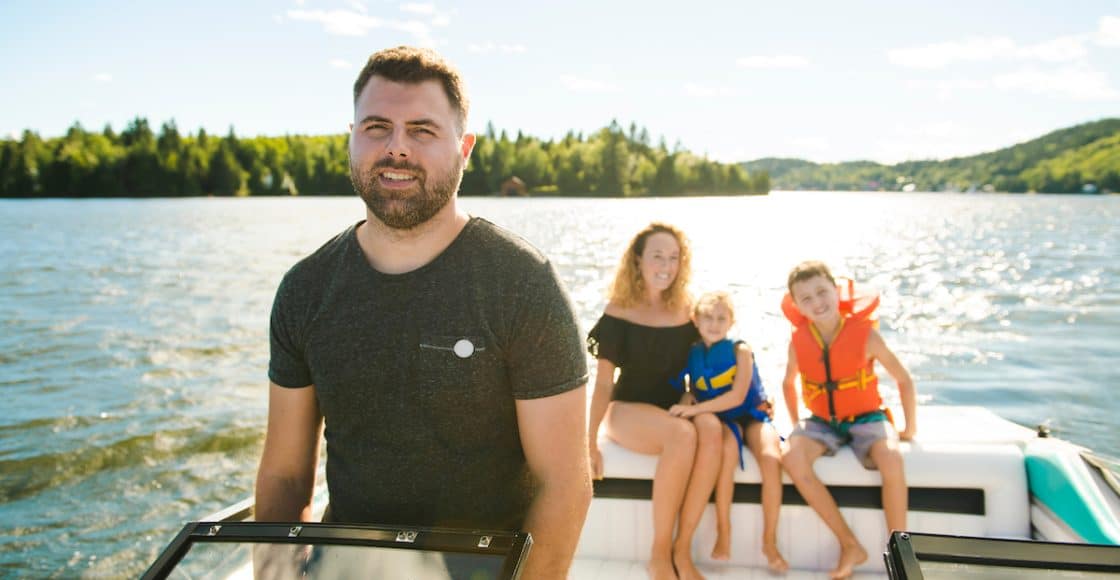
Costs of Boat Ownership: How Much Does it Cost to Buy & Own a Boat?

Table of Contents
Last Updated on July 28, 2023 by Boatsetter Team
Interested in buying a boat, but need to do some research about what exactly you’re getting into? Good thinking. The costs of owning a boat go far beyond just the initial purchase price and financing. Similar to many other items we purchase—like a car or a home, for example—learning how much it costs to buy and properly maintain this investment is an important first steps towards becoming a great boat owner.
Many boat ownership costs and expenses will be obvious to a first-time boat owner, while others might come as a surprise. Some, such as insurance and registration, are almost universal while others are more specific to the boat size, type and location. Expenses vary depending on your unique situation, but this guide will help you understand the basic costs of boat ownership .
8 Common Expenses of Owning a Boat
- Safety Equipment Required by the U.S. Coast Guard
- Storage and/or Marina Fees
- Regular Maintenance & Repairs
- Boat Insurance
- On-Water Towing Assistance
- Additional Gear & Accessories
- Trailer & Tow Vehicle
Learn How to Offset the Cost of Boat Ownership by Listing Your Boat with Boatsetter.
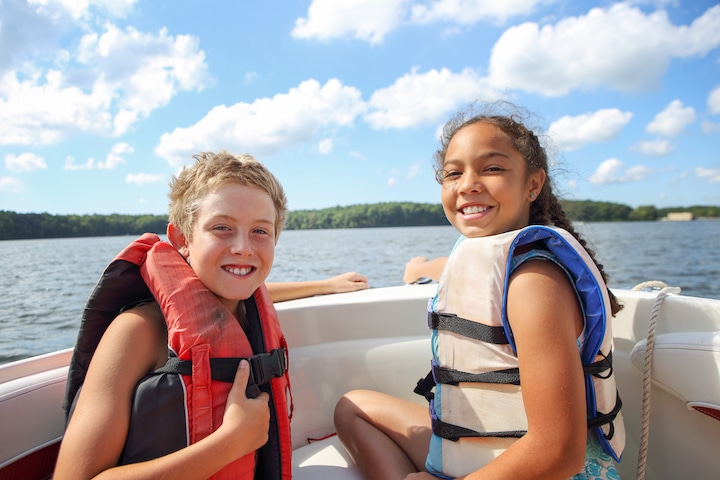
1. Boat Safety Equipment
Every boat must be equipped with gear required by the U.S. Coast Guard and your state regulations. This is sometimes called a “safety kit,” and some new boat dealers can supply many of these items and may include them with a boat, but most do not. A basic boat safety equipment checklist includes:
- Life jacket or personal floatation devices (PFDs) for every passenger onboard ($25 to $100 each) – If you boat with children you’ll need life jackets sized for them. Most states also require keeping a throwable floating cushion ($15) or ring on board.
- U.S. Coast Guard approved distress signal – which could be a set of flairs ($35) or an LED signal light ($80 to $150).
- Marine fire extinguisher ($25) – More than one may be required on larger boats.
- VHF radio – May not be required but is a good back-up to a cell phone for emergency use and also is handy for communicating with other boats, marinas, and law enforcement. Consider a basic floating hand-held VHF ($100) or fixed-mount ($150 to $400 plus antenna).
- Anchor and rode (chain) – A safety item when used to secure the boat if the engine fails or you run out of fuel. The anchor will keep you from drifting into danger. Of course it can also be used to secure the boat for casual situations. A basic fluke anchor ($50 to $150) works in most situations, but must be sized to the boat, and different types of anchor are designed for specific bottom conditions. Get some input from a local marine dealer on the best anchor choice for your situation. You’ll also need chain/rope rode for the anchor ($230 and up) sized for you boat and typical water depth where you boat.
2. Storage and/or Marina Fees
Eventually you’ll want to tie up to a dock. Or, you’ll get your boat out of the water for longterm or short-term storage. In either scenario, you’ll need:
- Dock lines ($30 to $100 each) – Sized to your boat, four to six lines required.
- Fenders (also called bumpers) – To protect the boat from the dock ($20 to $60 each) sized to your boat, two to four required.
- Launch fees – Usually charged at most public ramps, and varies at about $5 to $15 per launch.
- Mooring fees – If you plan to keep your boat in the water at a marina, there will be a charge based on the size of the boat, which can range from $15 to $45 a month per foot of boat length depending on the region, whether the marina is public or private, and its amenities. Shore power for electric service at the dock is usually extra.
- Dry stack storage – in which the boat is stored on a fixed indoor or outdoor rack at a marina, can cost $50 to $200 per month. The boat is lifted off the rack with a fork lift when you want to go boating, and there may be a fee for this. Many marinas also have an area where a boat can be stored on its trailer between outings, which is a more-affordable option. You may not be allowed to park your boat and trailer in your driveway in some communities.
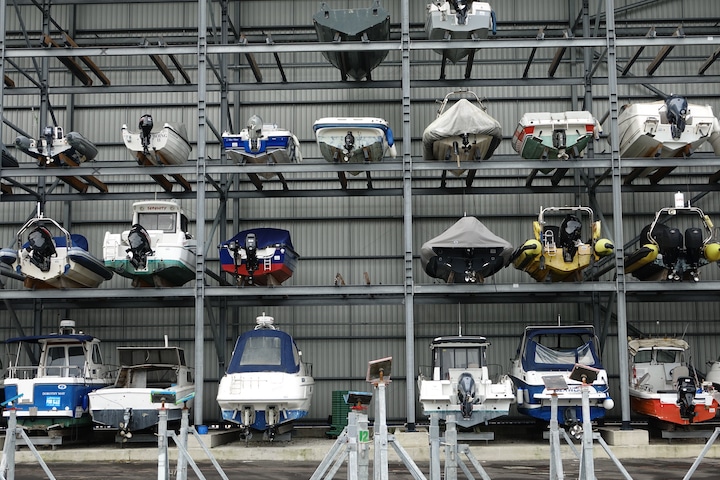
3. Regular Maintenance & Repairs
The cost of annual maintenance depends on the size and type of boat, whether it’s used in fresh or saltwater (and may need bottom paint, for example). Boat maintenance costs also depend on whether or not your boat needs to be prepared for off-season storage and winterized.
You can assume $500 to $2,000 or more per year. Owners of smaller boats can often perform basic maintenance themselves and only pay for parts and supplies like engine oil.
And of course, accidents happen. Even if you like to do-it-yourself, repair costs vary depending on the issue at hand, and if replacement parts are necessary. Opting for professional service or maintenance work will also include various service fees or costs of labor.
Boats consume a lot of fuel—figure 8 to 12 gallons per hour of operation for single-engine runabout. If you purchase fuel at a marina, you’ll pay a premium over the cost at a filling station. When possible try to purchase fuel that does not contain ethanol, and use a fuel stabilizing additive with each fill-up.
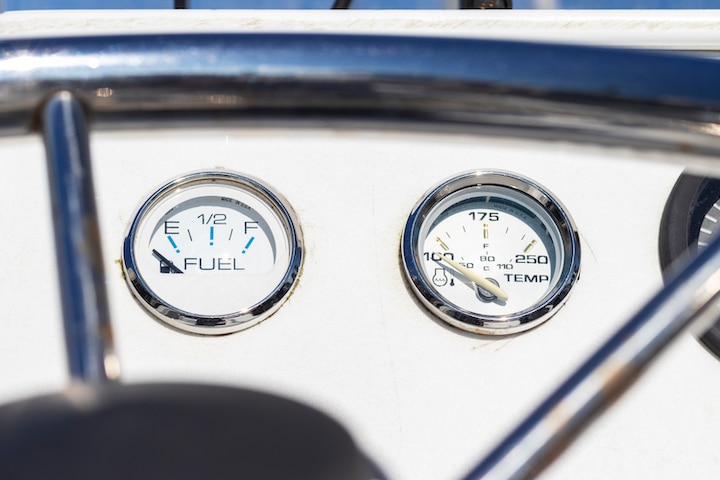
5. Boat Insurance
Liability and damage insurance premiums vary a lot by boat size, type and location. If you boat in a hurricane zone the premium will reflect that fact, for example.
A basic rule of thumb is 1 to 3 percent of the boat’s value . A carrier that specializes in marine insurance will understand the hazards and issues specific to boat coverage.
If you decide to list your boat on Boatsetter , our team offers extra peace-of-mind through our BoatUS Peer-to-Peer Rental Policy , specially designed to protect the boat owner and renter during a rental. This also includes on-water assistance through TowBoatUS, online boater safety certifications through the BoatU.S. Foundation for Boating Safety and Clean Water, and our world-class 24/7 support.
6. On-Water Towing Assistance
Like AAA service on the water, a towing assistance program can bring you gas if you run out or tow you to shore if your boat breaks down. This service is available on most larger bodies of water. Annual coverage from SeaTow (starting at $179 per year) is really affordable, while BoatUS often bundles its towing coverage with its insurance plans.
Again, Boatsetter owners receive the additional benefit of on-water assistance through TowBoatUS when enrolls within our BoatUS Peer-to-Peer Rental Policy .
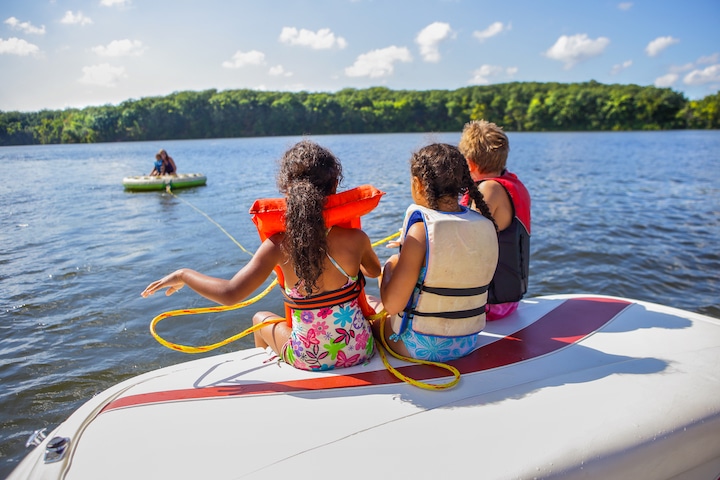
7. Additional Gear & Accessories
If you’re an avid angler ready to reel in the ‘big one,’ you’ll need all the appropriate gear to do so. That includes rods, reels, bait, fish finders, nets, rod holders, lures, you name it. The same concept applies if you’re interested in water skiing, wakeboarding, wake surfing or tubing. Count on purchasing the boards, inflatable tubes, and tow lines.
Other popular boating accessories that you might want to have onboard include:
- Marine electronics
- Stereo or Bluetooth speakers
- Sunscreen & sun protective clothing
- First aid kit
8. Trailer & Tow Vehicle
Not every boat comes with a trailer, and a pre-owned boat may be on a trailer you’ll want to replace for safety reasons. Figure $1,500 to $5,000 for a trailer, depending on boat size.
Likewise, it’s not unusual for a family to buy a new trailerable boat, only to discover it’s too heavy to tow with the vehicle they already own. If a new truck or SUV is not in your budget, compare the combined weight of the boat, trailer and gear you are considered with the towing capacity as listed in your vehicle owners manual.
List Your Boat Today to Start Earning $20,000 or More Annually – Find Out How.
Editor’s Note: This article was originally published in December 2017 and updated in January 2022.

Charles Plueddeman is a self-employed writer and photographer based in Wisconsin. A staff editor and contributor to Boating Magazine since 1986, he is the author of its “Off My Dock” column. In the marine realm he specializes in engine technology and trailerable boats. His editorial work has appeared in many national publications, including Popular Mechanics, Men’s Journal, Playboy, Popular Science, Cycle World, and Harley-Davidson Enthuisast .
Browse by experience

Explore articles
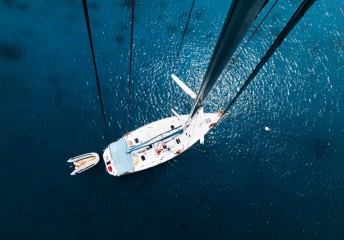
Guest Post: What sailing can teach you about saving for retirement
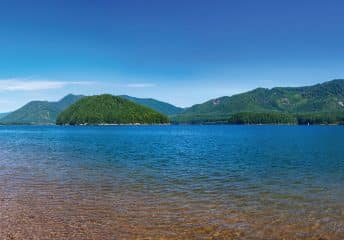
7 Lakes in Oregon Perfect for Boating

6 Best Lakes in Washington State
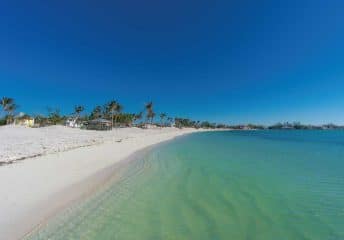
5 Best Marathon Key Beaches
- Boating Safety
- Company News
Experiences
- Destinations
- Boating Regulations
- How Much Does It Cost to Buy & Own a Boat? A Comprehensive Owner’s Guide
Related Posts

Six Reasons to Rent Instead of Buying a Boat

How to Choose the Right Boat - Getmyboat Guide

Finding the Right Fishing Boat for You
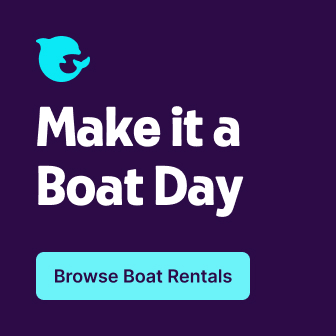
There's a whole lot more to consider than just the purchase price. Here's everything you need to know as you consider the costs of boat ownership.
Owning a boat can provide you with exciting adventures and lasting memories. If you love spending your holidays on the water fishing, cruising, or touring with your family, owning a boat should be on your bucket list. Unlike a rental boat, boat ownership allows you to enjoy a journey whenever you like, with no time limits.
Setting aside the thrill of owning a boat for a moment, can you afford one?
When buying a boat, it’s not only the sales price that counts. You must also consider the average cost of boat ownership, such as fuel, maintenance, insurance coverage, and storage. It would help if you researched all the options before diving into such an investment.
This guide will give you all the information you need to own a boat. Let’s start with some of the things to keep in mind before purchasing a boat.
Table of Contents
Purchase price vs. ongoing costs, are boats a good investment, can i afford a boat, used vs. new boat prices, different boat types & sizes, the best value boats for your money, marinas and storage, equipment & accessories, licenses and education, maintenance costs, the bottom line.
The first thing that comes to mind when considering owning a boat is, obviously, the purchase price — how much are you going to have to pay upfront to buy the boat of your dreams? By making online price comparisons and asking around, you probably already have a rough idea of how much your dream boat costs.
The purchase price of a boat depends on many factors, most significantly the size of the boat, and the type of boat — which can vary drastically depending on whether you want something for the occasional weekend family day on the water, multi-day boat trips, something suitable for large parties, a small and simple cruiser for fishing, or any number of other boat types .

The purchase price can also vary greatly depending on the boat's age and condition. Buying a new boat can range from $500 to $500 million though looking at used boats can offer considerable savings and might enable you to set aside more cash for the inevitable ongoing costs you'll face in the future.
And of course, these prices are highly variable depending on the specific boat features and construction, but the biggest price jumps come when comparing entirely different styles of boat. For some rough ballpark examples, a brand-new cabin-free motorized fishing boat can easily cost up to $35,000, whereas a yacht will run you closer to $250,000 for a used one to $500,000 for a brand-new one.
But, is that purchase price all you need to consider?
Unfortunately, no, it's not. Owning a boat doesn’t end with paying the purchase price . You also have to consider the ongoing expenses, which can cost even more than the initial boat price in the long term. A simple thing such as trailering a boat can add significantly to your ownership cost, depending on how often you do it.
Some additional expenses that come with owning a boat include:
- Maintenance costs
- Storage costs
- Fuel expenses
- Insurance coverage
- Equipment and accessories
- Taxes, title, and registration
- Boat trailing expenses
A boat is a major life purchase, and even if you're not planning to use it for any commercial purposes, it could be considered an investment — and a significant one. But, is it a good investment?
To be frank, no, not really. Many financial experts don’t consider a boat a sound investment because of the ongoing costs of maintaining it. Also, since it is a depreciating asset , many do not view it as a wise purchase because you’ll spend more to own it in the long run. The specifics and calculus of depreciation are complex, and it's worth diving into some of the thorough reports that you can find online — you can try using a boat depreciation calculator , or studying the depreciation of specific boat types .
But wait! Owning a boat is about a lot more than just the financial side of it. If boating is your life's joy and a major part of your lifestyle, overall happiness, and how you like to spend your time, that's a very significant emotional element to weigh against the more cold and unforgiving financial numbers. And consider the other values a boat can bring to your life:
- Personal fun: Some people can’t get enough of water adventures. You need a boat if you love being surrounded by blue skies and water. When personal enjoyment with family and friends gives you that adrenaline rush, no dollar amount can exceed such experiences.
- Commercial value: Owning a boat can provide you with a side income. When you’re not using it for a family adventure, consider renting out your boat for an attractive cost to another family. If you take advantage of the rental feature , you can also offer water tours, fishing, or sporting activities and earn some extra money.
- Resale value: While you will unquestionably take a big hit in depreciation to some degree, you can reduce it somewhat by taking excellent care of your boat and keeping it well maintained. And while you should never expect to be able to recoup all of what you spent on your boat purchase, your boat is still an asset with some resale value, unlike a consumable good.
It's natural to dream, but think carefully: are you really in a good financial position to turn your dream of owning a boat into reality? When you think about the purchase price of a boat and all the expenses of owning one, can you still afford it?
Of course, you need a solid budget before making this huge investment. Aside from the purchase price, list the monthly expenses for repairs, maintenance, insurance, storage, equipment, and accessories. Budget for a certain percentage, such as 20% of the value, to cover these expenses.
Also, think about the face value of your boat. More expensive boats tend to cost more on storage, maintenance, and gas than cheaper ones. If you buy a luxury boat, you’re also buying the life that comes with owning one.
To figure out whether you can afford a boat or not, you have to think about the following factors:
- Your credit score: If you’re securing financing for a boat, you must consider your credit score to know how much you qualify for. If you have a high credit score, you’ll qualify for higher financing and pay a very low-interest rate. A score of 690 or higher will likely get you the best deal.
- Consider your DTI: Your debt-to-income ratio will play another role in determining whether you can afford a boat. To calculate your DTI, add your monthly debt payments and divide them by your gross income. If you get anything less than 43%, you stand a good chance of being approved for a loan to buy your dream boat.
- Your budget: How much you plan on the purchase price for a boat and the ongoing costs is important in determining if you can afford it. Don’t go above your budget just because you can afford it. Sticking to your budget will save you from the looming stress of owning a boat.
Generally, affording a boat means buying and maintaining one well without affecting your living expenses. Consider the initial purchase price, financing implications, and the expenses of keeping the boat on the water. If you find it hard to afford one after reviewing these factors, give yourself more time.
The Upfront Cost
The first thing that comes to mind when you think of buying a boat is the upfront cost. Other things, such as maintenance and fuel, tend to come later. So, what is the upfront cost of owning a boat? And why are boats so expensive?
A less expensive $150 floating boat will do for modest near-the-shore adventures. For a luxury cruise sure to turn heads, budget for thousands of dollars in upfront costs.
The upfront cost of a boat will depend on numerous factors, such as the brand, type, size, and extra features. For example, if you plan to purchase a luxury boat with all the amenities that money can buy, you’ll probably have to pay for an arm and a leg to get it.

You can control the price depending on your primary purpose of using the boat. For instance, you won’t want to spend money on all the technology and luxury amenities to enjoy a simple cruise on a holiday weekend. You can save on various accessories, such as lights and entertainment, if you only spend a short time on the water.
Some of the factors to keep in mind when deciding the upfront cost of purchasing a boat include:
- Brand: Boats are available in different brands, affecting their prices. The cost of a small boat, 6-10 feet, can cost anywhere from $500 to $800. If you’re looking for brand-name superyachts, prepare to spend millions of dollars from the start.
- Style: If you care much about the style of your boat, recognize that the most stylish ones will cost more. Higher-end boats will cost more than less elegant ones.
- Size: If you want a bigger boat for your family and friends, prepare to pay more than you would for a simple one that accommodates three to five people. Any boat over 12 feet will need a bigger engine, which means a higher purchase price.
There’s a huge price difference between used and new boats. Buying a new boat can be more expensive than buying a used one of the same type. Of course, the condition of the used boat will also factor into the price difference versus a new one. A second-hand boat that has only been running for two years will be more expensive than one that has been around for more than five years.
New boats come with luxury features and the latest technologies. They are generally immaculate because they’ve not experienced any wear and tear. The engine is still at maximum working capacity, and other amenities have not been touched. All the shine, beauty, and glamor are much more expensive.
Aside from the higher price, new boats tend to depreciate faster. In the first year of using your new boat, it will depreciate at about 10% and then reduce to around 8% to 6% per year in the subsequent years.
Even though buying a used boat comes with some added risks, used boats are much less expensive than new ones. You can find a good deal on a used boat on classifieds websites like Craigslist, BoatTrader.com, and Facebook Marketplace. Frequently, you can buy a good used boat for less than 50% of the cost of a new one.
Compared to new boats, used boats depreciate at a much slower pace. A used boat has already experienced much depreciation and tends to retain its value more than a new one.
The risk of buying a second-hand boat can include higher maintenance costs. Unless it is well-maintained, you risk buying a boat with pre-existing issues, from appearance and functionality to safety. Buying a new one guarantees peace of mind that you won’t get if you opt for a used one.
Another significant factor determining how much upfront you’ll pay for a boat is its type and size. Boats come in different sizes and types; some might be wildly out of your budget range, and others quite affordable.
Typically, boats are classed by length:
- Class A : 16 feet or under
- Class 1: 16–26 feet
- Class 2: 26–40 feet
- Class 3: 40–65 feet
Many factors will determine the boat size most suited for you, including previous boating experience, storage space, activity, docking space, and budget.
Once you decide on the size, the type of boat you choose is another factor that drives the purchase price. The most common types of boats include:
- Pontoon boats: Many owners start with a pontoon boat to enjoy water adventures. These boats are perfect for fishing or just traveling in the water. They’re not good for water sports because they are very slow. Pontoon boats cost between $10,000-$80,000.
- Sailboats: A sailboat is another common type used for recreational activities such as cruising and racing. These boats are very economical, as you can use the sails and not fuel. You can get a quality sailboat for as low as $5,000.
- Yachts: A yacht is usually associated with luxury and prestige. Yachts have high-end facilities and entertainment features, allowing people to live comfortably inside for lengths at a time. All this luxury does come at a price. A small-sized yacht can cost a whopping $500,000.
- Fishing boats: Buying a fishing boat will ensure you enjoy unlimited fishing adventures. They tend to have a small seating area with an open deck space for storing caught fish. A new aluminum fishing boat can start at $25,000, while a fiberglass boat can range from $32,000-$35,000.
- Speedboats: Speedboats, also known as motorboats, are equipped with engines. Because of its powerful engine, a speedboat tends to go very fast but consumes a lot of fuel. You can get a new speedboat for $30,000-$75,000.
- Cabin cruisers: Cabin cruisers are also packed with all the best features money can buy. They work like mobile mini vacation homes, perfect for family adventures. A new cabin cruiser starts at about $100K and ranges to $500K.
To determine the best value for your money, return to the question, “Can you afford a boat?” Having looked at various boat prices, you can see that some boats are quite affordable, but others are expensive. But no matter how cheap or expensive a boat is, you must still consider the intended use.

For example, you can’t buy a fishing boat for racing. So, even if a fishing boat is cheaper than a speedboat, you’ll still go for the latter because it will fulfill the intended purpose. You won’t get value for your money if you’re buying a boat you won’t use.
So, the best value for your money is one that fulfills its intended purpose. For instance, it won’t matter if you pay a hefty price for a cabin cruiser or a yacht as long as you spend a wonderful vacation with your loved ones onboard. So, when choosing the right boat , consider how it will serve you before considering its monetary value.
The Ongoing Costs
Whether buying a new or a used boat, you must look beyond the upfront costs. Keeping the boat active and ensuring it serves you well come at a cost. Knowing all the expenditures of owning a boat will help you devise a better plan so that these expenses won’t catch you off guard.
So, before buying your dream boat, consider the following ongoing expenses.
Where will you keep your boat when it’s not on the water? If you plan to store it at a marina, you’ll have monthly fees for the storage. Marina costs vary, including indoor or outdoor storage, the storage period, and other services such as cleaning and security.
Storing your boat can range from a few hundred dollars to more than a thousand dollars monthly. For instance, storing your boat at a privately-owned storage facility might cost less than mooring it at a municipal or private marina. Additional fees with boat storage include utility fees, maintenance fees, car parking fees, and live aboard fees.
How much you spend on fuel will depend on a few things: your type of boat, how often you use it, and the specific type of fuel you need. A sailboat will obviously be much more economical regarding fuel, since it can run primarily on wind power. On the other hand, a speedboat will tend to have additional costs because it consumes more fuel to power the engine.
You might also spend more on boat fuel if you carry a huge load or encounter unfavorable sea conditions. And remember that fuel prices often fluctuate with the current economic situation, so plan your boating trips accordingly.
Apart from the fuel, you’ll also have to pay for other operational expenses such as oil, pumps, lights, batteries, and specialized equipment. One thing you can do to reduce fuel costs is to use a fuel consumption gauge. Also, consider buying newer model boats designed for better fuel efficiency.
To take your boat out on the water, you’ll likely equip it with different accessories. Some accessories are for your own use, while others are essential for running the boat.
The good news is that some of these accessories are one-time expenses. However, you must factor them in because they contribute significantly to overall boat costs.
Some accessories and equipment to consider for your boat include:
- Lifejackets
- Fishing tackle
- Watersports equipment
- First aid kits
- Personal locator beacons
- Marina radio
- EPIRB (Emergency Position-Indicating Radio Beacon)
- Extra fishing rod holders
- Fire extinguishers
- Electronics
- Visual distress signal
- Sound-producing device
- Boat cushions
- Tackle storage
Of course, the accessories you need depend on the boat type, your purpose for using the boat, and how long you will spend on the water. Your needs also depend on the season, so you might only need some things at a time. Budget for the equipment as you need it, and treat your boat to an accessory upgrade occasionally.
A boat operator license and a boater’s safety education course are mandatory in many states. When boaters are educated on operating a boat and safety measures, they’ll be less likely to get into an accident on the water.
The weather conditions can change at any time, and it might be difficult to control the boat if you don't have the training you gain from taking safety courses. These courses remind boaters about safety rules, operational laws, and general boating knowledge.
Every state has specific boater education requirements that you should review. Don’t just take the course because it’s a requirement; consider the benefits. You can select online or in-person classes for free or for a small instructional fee.
After training, you’ll also need to pay title fees and registration. Your boat registration is the identification number on its bow. Getting your boat registration and title varies from state to state, so look into your state's requirements. Registration and title costs range between $20 to more than $200, depending on the vessel's type, size, and purpose.
Whether you buy a used or new boat, you have to maintain it well to keep it in good condition and retain its resale value. Boat maintenance includes cleaning, waxing, engine tune-ups, and painting. You might also have to deal with repairs, such as electrical and plumbing issues.
Yearly boat maintenance can cost about 5% to 10% of the boat's total value. The cost might be less or more depending on factors such as frequency of use, boat age, and weather conditions. You can also handle some maintenance issues yourself to save money.
Remember that a new boat will cost less to repair than a used one. However, as the boat ages, it will depreciate and require more maintenance. Also, if you use your boat in freshwater, you’ll save more on maintenance and cleaning than if you use it in salt water.
You need to insure your boat against unexpected occurrences, such as an accident or damage. The right coverage will give you peace of mind whenever you are out on the water or have your boat in a storage facility.
The costs of insuring your boat also depend on several factors, such as the type, size, and frequency of use. Other factors influencing the cost include add-ons such as towing, salvage, docking, and storm coverage.
Boat insurance coverage varies from state to state and with the insurance company you choose to work with. Conduct extensive research and read reviews before choosing an insurer for your boat. Once you identify one, let them give you a quote so that you can estimate your annual premiums and if they fit into your budget.
So, What's the Total Cost?
Buying a boat will be expensive or cheap, depending on what you want and how prepared you are. It’s important to research the purchase of various boat types and the ongoing costs before you make the bold step.
You might pay twice the actual boat price if you calculate annual fuel costs, maintenance, storage, repair, accessories, and more. For example, if you bought a yacht for $250,000, the ongoing costs might add up to $500,000 annually.
Remember, this figure includes one-time costs such as registration, training, and equipment. The amount might not be the same for subsequent years since you won’t have to register your boat again or take certain educational courses.
The total investment also depends on your lifestyle. Apart from mandatory costs, other expenses accompany spending time on the water. These include food, drinks and ice, a tour guide, and other things to make your boat adventure enjoyable. Consider all the factors of owning a boat and fit them to your situation, then calculate your total cost.
Given the fun and memories that owning a boat brings to the family, buying a boat can be a good ‘ROE’ - Return on Emotions. However, if you don’t prepare for all the expenses of owning a boat, you might not enjoy it in the long run. You must research and understand all the costs and aspects of a boating lifestyle.
Remember, you’re not just buying a boat; you're buying the luxury of owning one. You can only enjoy your boat when you’re not stressing about the finances of owning it.
Boat Buying FAQs
How do I determine the cost of a boat?
Boat prices vary by brand, size, and type. You also look beyond the purchase price for ongoing maintenance, fuel, storage, and insurance costs.
Why do boats consume so much fuel?
Boats run on water instead of land, consuming more fuel than cars. Many forces drag it behind, such as wind resistance, waves, and aerodynamics, which contribute to more fuel consumption.
How long does a new boat last?
A new boat can last between 5-50 years. Factors affecting a boat’s lifespan include material (wood, aluminum, or fiberglass), frequency of use, and maintenance.
What is the most expensive type of boat?
A yacht and a cabin cruiser are the most expensive boats, ranging from $500,000 to millions.
Browse Trip Categories
- About Getmyboat
- Media Inquiries
- Terms of Use
- Privacy Policy
- Cookies Policy
- Accessibility Statement
- Member Interface Agreement
- How It Works
- Mobile Apps
- Boat Rentals
- Jet Ski Rental
- Fishing Charters
- Houseboat Rental
- Pontoon Rental
- Yacht Rental
- Sailboat Rental
- Bachelorette Party Boat Rental
- Party Boat Rentals
- Experiences Guide
Popular Destinations
- Lake Travis
- Lake Lanier
- Newport Beach
- Lake Norman
24/7 live support
- Help & FAQs
- +1 818 927 2148
- [email protected]
Real reviews from happy Getmyboaters.
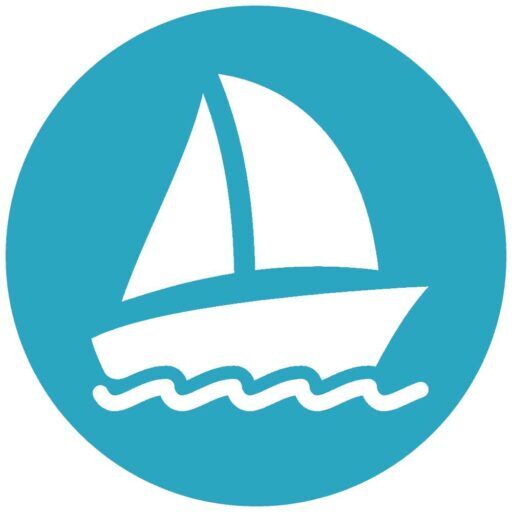
WaterCraft 101
Your guide to fun on the water!
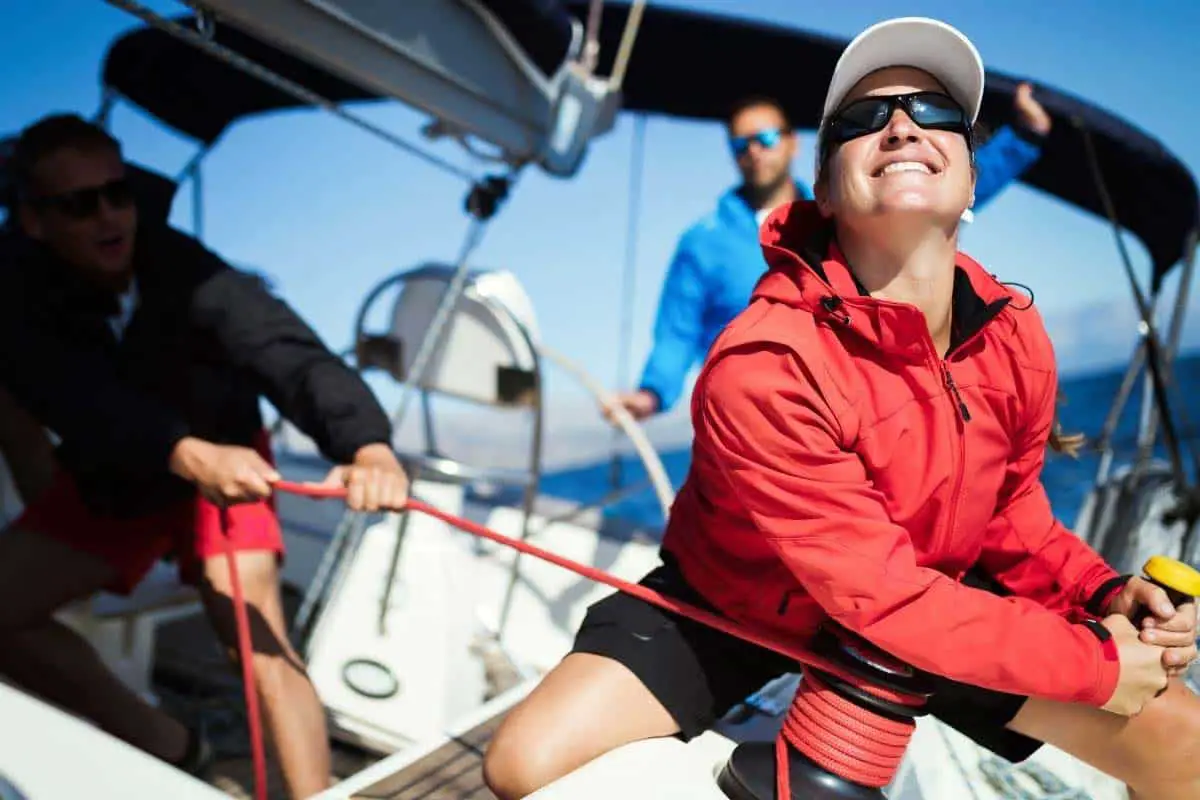
Boat Ownership Costs And Expenses (Read This Before You Buy!)
Are you a new boat owner, or plan to be one soon? If yes, then great! First things first though, there will be some significant boat ownership costs involved and you’ll need to know what to expect. Not to freak you out, but the last thing you want is for you to be that guy who leaves his boat docked for months on end just wearing away because you didn’t anticipate the ongoing costs of owning and operating your boat.
So, how much does owning a boat really cost?
You can expect that a $20,000 boat will cost between $2,656 – $3,000 dollars a year or more in ongoing expenses. These boat ownership costs include maintenance, insurance, registration fees, docking fees, and gear necessary for the operation and safety of the vessel and its passengers.
Anticipating boat costs is a smart way to avoid a sinking debt driven ship (pun intended!). Do not become boat poor. It’s not a good look.
This article will provide information about boating expenses and the so-called hidden costs of boat ownership. It tries to assist mainly first-time buyers in preparing for and reducing financial burdens where possible.
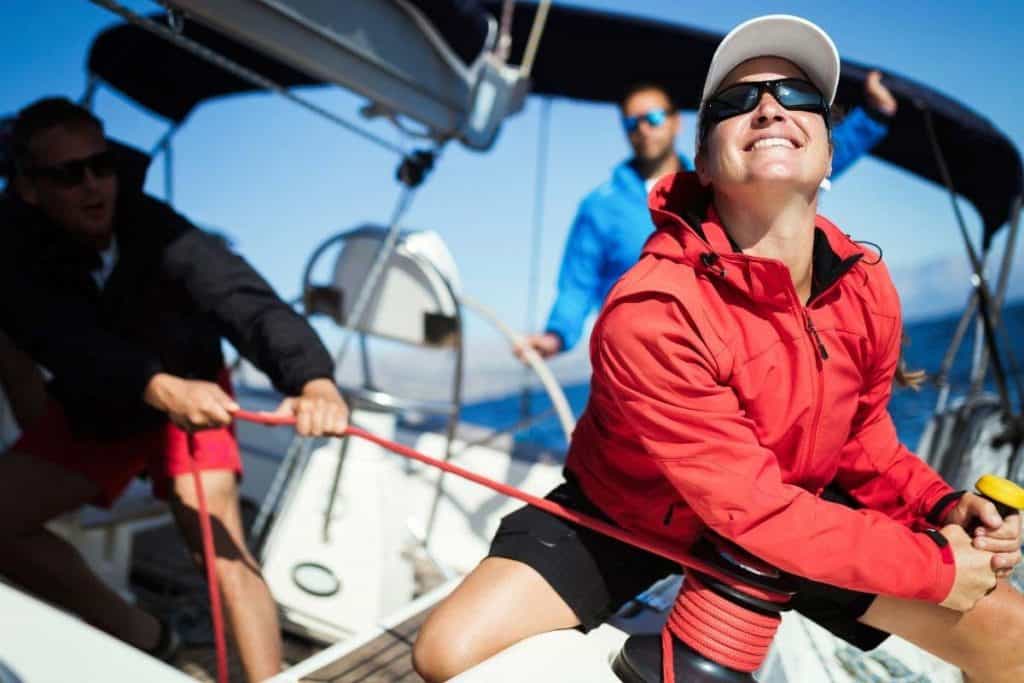
The average age of boat owners is 60 for sailors and slightly younger (55) for power boaters. Younger boat users haven’t always been keen on buying, and this is something organizations such as the National Marine Manufacturers Organization ( NMMA ) are working desperately to change.
But not many organizations are successfully promoting recreational boating, especially in this economy, and the boating lifestyle still appears out of reach for many people. But is boating that expensive, or is it just our perception of it?
Discover Boating published their findings from a recent study where they indicated that first-time buyers had significant concerns over what they called “hidden boating fees,” which tend to show up right at the end of the purchasing process. It shows how seriously the industry needs to take the issue of transparency.
Table of Contents
Comprehensive List of Boat Ownership Expenses
Here’s some straight talk about the expenses you can expect to pay for once you purchase a boat. Later we’ll see how these expenses compare between a sailboat and a motorboat.
1. The Purchase Price
On average, a mid-sized boat measuring around 25ft in length will set you back about $40,000. Of course, you could compromise a little on the size or go for a used boat, and in that case, the purchase price reduces significantly. Check out Bloomberg or NadaGuides to get a clear picture of how these boats are priced.
So for our example, let’s set the buying price at a lower range of $20,000. That way we can base our expenses off this initial purchase price, and it will make it easier for you to calculate your expenses if your boat costs more or less than this amount.
2. Boat Insurance
Most insurers will offer boat insurance at the rate of 1.5 – 2.0% of the boat’s value (also known as hull value) per year. So if your ship is valued at $20,000, then insurance would be around $400 a year on the higher side. Remember that insurance rates differ based on location, so prices will typically be higher in hurricane-prone regions for instance.
Insurance prices also vary greatly depending on whose operating the boat, whether you are occasionally using it for fishing or if you’re a regular water skier / wakeborder. Boating insurance also has a direct correlation with your driving record. Better drivers get better boat insurance rates.
Average Annual Insurance Cost: $400
3. Boat Registration
Your boat requires registration, much like any other vehicle. The boat registration process is managed at the state level so expect some variations in cost. We’ll set the average registration cost at $225 per year.
Licensing for the Boating Safety Education Certificate may also apply here. Still, the good news is once you get certified, which can cost anywhere from $150 to $300, it’s good for life (but again, check state licensing rules to be sure).
This certificate licenses you to operate a personal watercraft (PWC), powered by a 25hp motor or higher. The National Association of State Boating Law Administrators ( NASBLA ) is an excellent place to find more information.
Average Registration Cost: $225
4. Property Taxes For a Boat
Some states like Florida and California require a personal property boat tax. This tax is different from sales tax or use tax. Boat property taxes (if any) vary wildly depending on the state and county you live.
You’ll need to check with your local county offices to see if this tax will apply to you or not. If it does, your boat’s value will be assessed as tangible property (just like a house) and you will pay annual property taxes on the assessed value.
Taxes Cost: Varies
5. Mooring (Keeping Your Boat in The Water)
Mooring costs fluctuate fundamentally based on geographic location, the size of your boat, specialized boat care, proximity to restaurants and other facilities, etc. If you want a premium marina with round the clock security and incredible scenery, then you’re going to pay something in the range of $1,000 to $2,000 annually for a larger boat.
But you don’t always have to pay for a mooring: A decent boat yard can serve as a mooring for your boat when you’re not sailing, and they only charge a flat seasonal fee. Alternatively, if your boat is smaller, you may just store it on its trailer at home for free in between outings.
Mooring Cost: Varies
6. Row Boat, Dinghy
If you pay for mooring, you will potentially need to purchase a smaller boat for traveling to and from your primary vessel. Small rowboats cost about $1,000, and you can always go for a used one for half the price or find a far cheaper option online. Cheaper ones will be visibly old, but they get the job done.
Row Boat Cost: $500 to $1,000
7. Winter Boat Storage
If you live in colder climates, there will be an annual cost of about $1000 – $2,000 for winter boat storage, which involves someone hauling your boat and placing it on a set of blocks. The charge covers this service plus a cover wrapping that is thrown over the boat all winter.
Again the other alternative here is to move your boat to your property, assuming there’s plenty of space in your driveway or backyard.
Storage Cost: $1,500
8. Trailer
Trailers vary in price based on their size and material, so if you’re buying an aluminum trailer for a 20-foot boat, it may set you back anywhere from $1,000 to $2,000, with cheaper options online in the used section. There is also a DMV registration fee for boat trailers, which costs around $5 (may vary in your area).
Aluminum trailers are the preferred choice for their lighter weight and the fact that they don’t wear from rust and or break easily. However, there are other models made from steel or iron that will serve the purpose. They weigh more but are generally more affordable.
Trailer Cost: $1,000
9. Routine Maintenance Cost
Most most routine maintenance estimates are around 10% of the boat value annually. So basically, the more expensive your boat, the more money it will cost to maintain. Maintenance typically involves servicing the engine, anti-fouling, sail and rig, electrical equipment, upholstery, repainting the hull, fixing hull damage, upgrades, replacements, and so on. Some owners carry out the essential maintenance themselves, but they always set aside a budget for professional maintenance.
Maintenance Cost: $2,000
10. Fuel Cost
There will be the added cost of gas, oil changes, and regular engine maintenance for anybody using a motorboat. More significant engines like 4-stroke motors will use up more gas, and also the number of times you take your boat out will determine the cost of gas.
Cost: varies
11. Must-have Safety Items/Boating Accessories
The following is a list of 15 crucial boating accessories that you must purchase and renew to stay safe out on the water. We haven’t included the cost for each item; however, it is worth pointing out that these items don’t come with the boat and require additional spending.
1. First-Aid kit
You must be able to treat minor injuries or ailments, and this is possible with a range of neat medical kits that can cost as little as $10 or as much as $1,000. It depends on what medical emergencies you’re planning for or how far you plan to cruise. Here’s an inexpensive first aid kit (Amazon) that’s got everything you’ll need.
2. Solutions for Motion Sickness
First-timers may find that motion sickness is pretty strong, and in that case, it helps to have devices or treatments that prevent or help manage it. Motion sickness strips and unique wrist bands are everyday items used for motion sickness.
3. Depth Finders
A depth finder from companies like Hummingbird or Faria Beede will tell you how deep the water is so that you never run the risk of damaging your hull or, worse, getting stuck somewhere out in the water. Portable ones like the Garmin Striker Plus 4 (Amazon) are cheaper and will give you the same readouts, so there are different options here.
4. Life jackets
A single, quality life jacket will often cost you over $50, and you need to have at least one life jacket for every person aboard. The Stearns Classic Series Vest (Amazon) will provide the right protection and save you some money in the process.
The life jacket should also have a whistle installed if it doesn’t come with one. The Fox 40 whistle comes with a break away lanyard and will get the job done. It is also wise to have a small flare and pockets to store any relevant survival item in your life jacket or vest.
The cost of the life vests alone can set you back several hundred dollars in order to outfit your boat safely to carry several people.
5. A Beach Anchor
These are particularly useful for people with smaller boats that can dock anywhere. A beach anchor will stake into different types of ground so that your ship doesn’t slowly drift away. Where there’s firm ground, you can hammer one of those spike varieties into the ground. The Slide Anchor Spike (Amazon) works well in shallow water or on the shore.
6. Dry Storage Box
You must have several of these and have them packed with spare tools, GPS, smartphones, and other electronics that may be useful. Ensure that your storage boxes can float, and don’t load too much equipment into a single box. Spread out your gear among several of them, some carrying the same or similar equipment.
- Large dry box for bigger tools and equipment (Amazon)
- Smaller floating dry boxes for phone, keys and electronics (Amazon)
7. Device Chargers
Solar-powered chargers are considered essential for larger boats. Ideally, your boat should have available USB sockets attached to solar panels; but if this isn’t the case, portable solar panels also have power ports that you can use. Plus portable panels like this one at Amazon can also be used for camping or RVing.
8. Navigation Equipment
When taking the boat out to sea or on a large lake when you are likely to cruise away from familiar routes, navigation equipment is needed. A simple marine GPS (Amazon) will suffice; however, for the more complex and sensitive GPS equipment, expect to spend thousands of dollars.
Overall Cost of Safety Equipment
It’s hard to estimate because, ultimately, the total cost fluctuates with brand and quantity, but at the very least, you should expect to end up spending at least another $1,000 on some essential items for your boat. Many of these items once purchased don’t require replacement, so that’s a relief.
Example Estimate of First Year Boat Ownership Costs
This table shows the expenses you will most likely incur during your first year of boat ownership. Some of these costs will be one-time-only purchases, while others will be ongoing expenses.
| Expense | Cost | Notes |
|---|---|---|
| Purchase Price | 1x cost | |
| Registration | $225 | Annual cost |
| Insurance | $400 | Annual cost |
| Mooring, dock fees | Varies | May or may not be required |
| Trailer | $1000 | 1x cost |
| Winter Storage | $1500 | May not be required. |
| Dinghy | $500 | May not be required. |
| Maintenance | $2000 | Annual cost / much more or less depending on boat |
| Safety Equipment | $1000 (varies) | 1x cost |
| Total | $26,625 | Total 1st year of ownership |
This is a rough outline of costs, and the intent is to give you an idea of where the money goes . Your costs may be higher or lower depending on if you have a boat loan and many other factors, but this should give you a good starting place for determining just how much a boat is going to cost to own and operate based on a $20,000 purchase price.
The first year of boat ownership will invariably cost more as you have to purchase a whole range of safety equipment – some of which you probably won’t use, but it’s always a good idea to have available.
If you remove all of the one-time costs, you can expect your ongoing cost for owning the boat in this example to be around $2,625 annually if you don’t require long-term mooring or winter storage fees. Adding the cost of fuel and boat launch fees, it’s probably safe to say you’re looking around $3,000 or more in annual expenses.
Sailboats vs. Motorboats Annual Ownership Costs
The table below compares operating costs for a moderately sized sailboat and a similar-sized motorboat, estimating what the costs of owning the two different boats would cost on average. The figures are on the higher side.
| 30 – Foot Sailboat | 30 Foot Motorboat | |
|---|---|---|
| Boat and Safety Equipment | $111,000 | $129,000 |
| Value Depreciation | $13,000 | $15,500 |
| Fees, Mooring, Maintenance | $10,000 | $10,500 |
| Total Annual Cost | $23,000 | $26,000 |
As you can see, there is not much difference in ongoing costs. While the motor boat has more engine maintenance costs, the sailboat has more costs associated with the sails and rigging.
Do I Have Any Alternatives?
If these costs seem outrageous, the only other real option you have is to rent a boat or become a boat club member; this way, you can receive regular discounts on premium services. These boat clubs are beneficial for newbies who want to try out the water and learn all about sailing or boating without committing long-term to the high cost of owning.
Look for memberships that include the services you would generally pay for from owning a boat, such as mooring and maintenance, but at a fraction of the cost. You may also be able to access a broader range of vessels that you can try out to find your fit, and some clubs offer excellent training – which you will need before you take your family or friends out on the water.
If the idea of a boat club membership interests you, check out the memberships and or rental options either in your area or near the body of water you want to enjoy!
In Conclusion
These are general estimates, but they do give the reader an idea of the expenses that come with a boating lifestyle, so feel free to look for new ways to economize: And by all means, speak to experienced boat owners about some of the ways they keep costs down. Good luck!
- “International Certificate for Operators of Pleasure Craft – Resolution No. 40, Revision 1” (PDF)
- Online Sailing Certification https://en.m.wikipedia.org/wiki/Boating
- The Boat U.S. Foundation https://www.boatus.org/free/
- State of New Jersey Jet Ski Licensing https://www.state.nj.us/mvc/vehicles/boating.htm
- The Marine Retailers Association https://www.mraa.com/news/518811/NMMA-MRAA-Form-Strategic-Partnership-to-Expand-Discover-Boating.htm
Bryan is a Las Vegas resident who loves spending his free time out on the water. Boating on Lake Mohave or Lake Havasu is his favorite way to unwind and escape the hustle and bustle of the city. More about Bryan.
Similar Posts
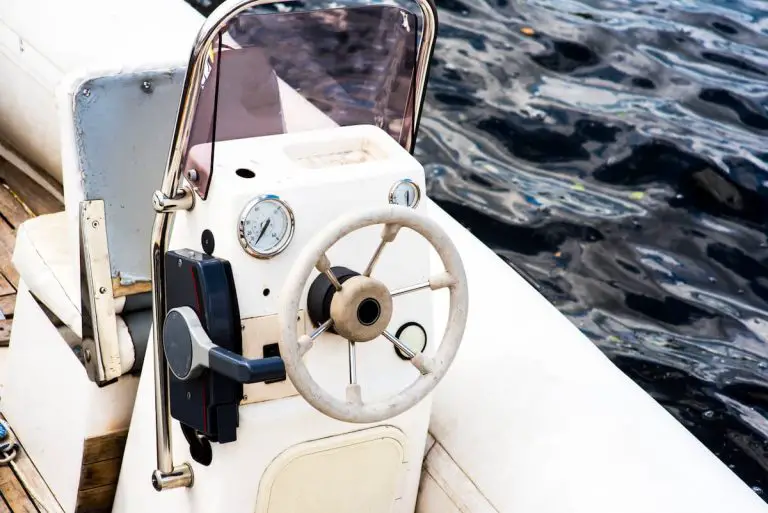
Are Boat Steering Cables Universal? (Explained)
No matter what type of boat you have, it likely has a steering cable. In fact, most boats rely on these cables to help them maneuver. But are boat steering cables universal? Boat steering cables are generally universal. The 3300/33 type control cable is the most popular and typically works with most boats. There may…

10 Signs You Might Be a Boater (And Need an Intervention)
Ahoy there! Are you starting to suspect that your love for boating has taken over your life? Do you find yourself talking to your boat more than your friends and family? Fear not, matey, for we’ve got 10 hilarious signs that you might be a boater in need of an intervention. So, grab a life…
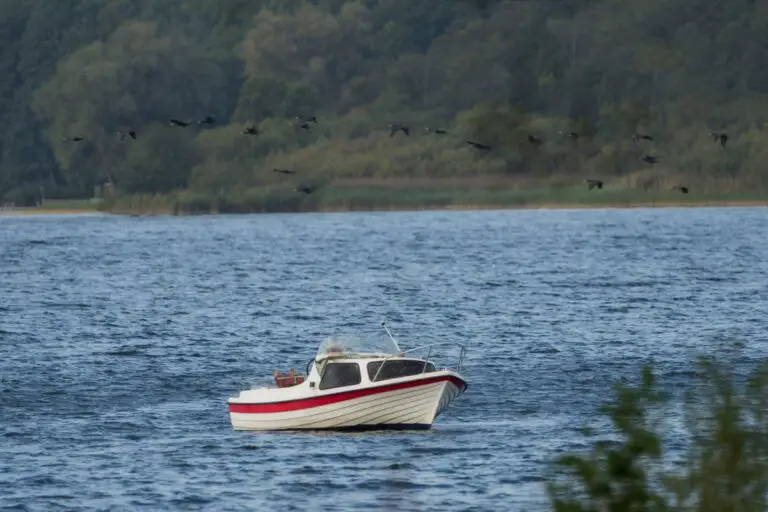
Is a 14ft Boat Too Small? Key Factors and Considerations for Small Boat Boating
When considering the purchase of a boat, one question that might cross your mind is whether a 14-foot boat is too small. The answer to this question depends on several factors, such as your intended purpose for the boat, the number of people you plan on accommodating, and the body of water you will be…
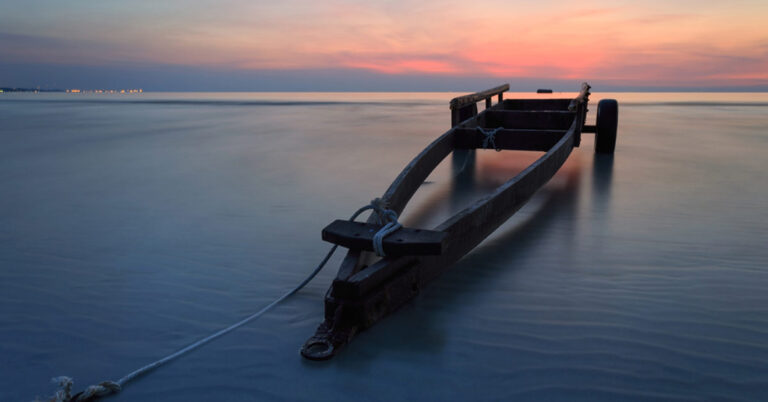
Boat Trailer Safety Chains: The Crucial Role They Play in Safe Towing
Boat trailer safety chains may often be overlooked in the grand scheme of boating paraphernalia, but they play an undeniably pivotal role in maintaining safety while towing. Acting as fail-safes during transportation, these chains connect the boat trailer to the towing vehicle, ensuring that the trailer remains attached even in the unfortunate event of a…
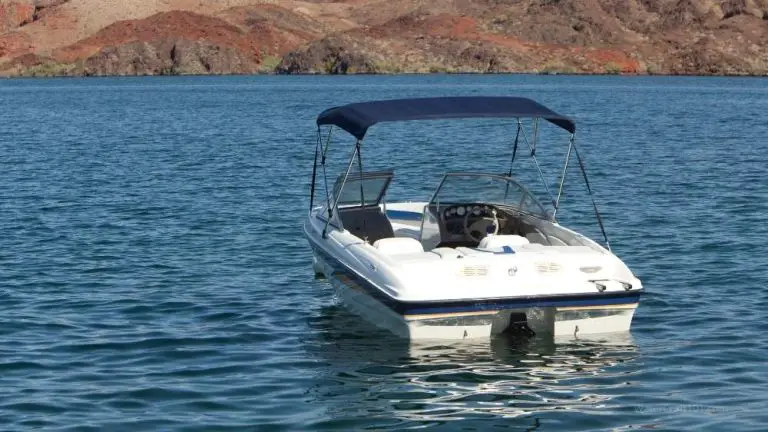
Do Small Boats Have Bathrooms? (How & Where to Go Potty)
Fishing or cruising on a small boat can be thrilling until you need to use a bathroom. These trips might last for hours even on a small boat, and being far away from land leaves you with few options to relieve yourself. Many boats intended for long trips have bathrooms onboard, but do the smaller…
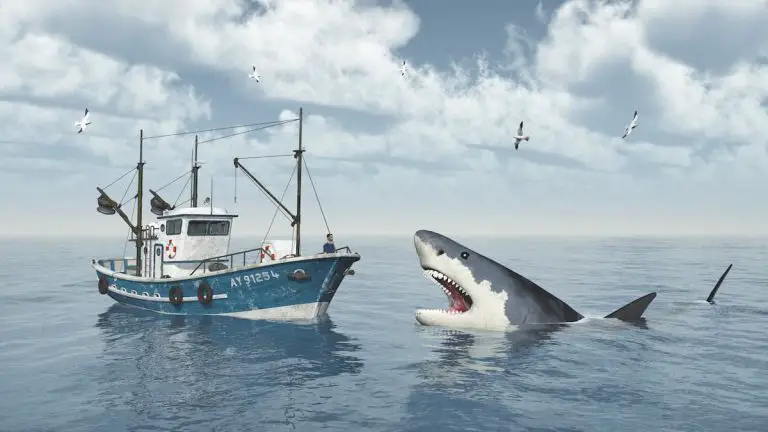
Are Sharks Scared Away by Boat Motors? (The Truth!)
Sharks are intimidating, but they shouldn’t keep you from enjoying your time in or on the water. Instead, it would be best to understand them, so you know what attracts them and what’ll drive them away. For example, take boat motors: Can their rotating wheels and whirring sound scare sharks? Sharks aren’t scared away by…

- Find A School
- Certifications
- North U Sail Trim
- Inside Sailing with Peter Isler
- Docking Made Easy
- Study Quizzes
- Bite-sized Lessons
- Fun Quizzes
- Sailing Challenge

The Cost (and Joys) of Owning a Boat
By: Zeke Quezada, ASA Sailboats
It’s been said the two best days in a boat owner’s life are the day they buy the boat and the day they sell the boat. While that may be true for some, let’s explore the value of the overlooked days in between.
Owning a boat might be the best thing you ever do.
Owning a boat involves significant expenses, from the initial purchase to ongoing maintenance. But for those fortunate enough to have the means, there’s something extraordinary about having a boat that few other possessions can match.
My family has grown up on a sailboat. While we don’t live on our boat, we have utilized the boat on most weekends and, in typical years, for a minimum of five weeks during the summer. For the last 20 years, a sailboat has been part of our lifestyle. We didn’t attend the team parties after little league baseball games, instead, we drove to the ocean. Science fair projects included collecting trash in the marina and testing handheld GPS units while drifting in Santa Monica Bay. Fourth of July at the dock and New Year’s Day sailing in California sunshine are traditions we hold dear to our hearts.
You cannot put a price on those experiences.
Experiences come at a cost, but it is essential to understand that just as everything has a cost and a price associated with it, it also has a value-added benefit.
The Cost of Owning a Boat
The benefits of owning a boat vs. the cost of owning a boat. If you are considering a boat purchase, you must view the tabulation of the dollar amounts involved through a lens that helps you understand what you are getting. Below are some typical costs associated with owning a sailboat. Sometimes, other surprises pop up, and they are unavoidable, but for the most part, these are expenses you should consider when crafting a budget for your possible boat purchase.
(Disclaimer: Costs associated with boat ownership vary by region. It would be best to research the cost of slip fees in your local marina and the going rate for repairs in your area. Taxes, licensing fees, and registration will also be region specific.)
Buying a boat signifies a transaction, an exciting beginning. Ownership, however, extends beyond purchase – embracing costs, maintenance, and cherished experiences.
It transforms a vessel into a gateway to adventures, bonding with the environment and your family while making memories that truly define the joy of boating.
Of course, the initial cost of owning a boat is the act of purchasing of the sailboat. That is an entirely different process with its own nuances requiring attention .
Slip Fee, Mooring, or Dock Fees
If you plan to keep the boat at a marina or dock, you must pay mooring or slip fees. These costs can vary significantly based on the location and size of the boat. If you’re not keeping the boat in the water year-round, you’ll need to budget for storage fees, whether dry storage on land or indoor storage during the off-season. Supply and demand are in play in storage scenarios. In Southern California, slip fees can skyrocket when supply is low.
Maintenance
Boats require ongoing maintenance, including regular servicing, cleaning, and repairs. Maintenance can be divided into expected and unexpected maintenance, and the costs can vary based on the size and type of boat. The prices will also vary depending on where you store your boat. Recently, I had a pigeon decide to call my cockpit home. It had been two weeks since I had visited my boat. My absence resulted in a mess that required serious cleaning, and I needed to design and install a cover for the storage compartment in the gunwales. This is the type of unexpected cost that can arise. In this case, I did the work myself, and the materials were under $50.
Recurring maintenance costs that can be expected include bottom cleaning, engine maintenance, rigging, and cleaning supplies.

Registration and Licensing
Many regions require boats to be registered and may also charge licensing fees. If you sail on the ocean, you can be sure there is a registration fee. The specific regulations and requirements for sailboat registration vary depending on the jurisdiction and the size of the sailboat. Registration helps authorities keep track of vessels for safety, law enforcement, and tax purposes. It’s essential to research the laws and regulations in your area to determine whether your sailboat needs to be registered and to understand the process and requirements involved. There will be a yearly fee for most sailboats.
Taxes and Insurance
Your marina will require you to have insurance for your boat that list them on the policy just in case of an accident that damages their property. Your local jurisdiction might tax you for having a boat. The specific rules and rates for boat property taxes vary widely depending on the country, state, or local jurisdiction. Some places may assess a tax based on the boat’s value, while others might have a flat fee. The taxes collected may be used to support local infrastructure, services, or other public programs. For example, my vessel tax is roughly $150 per year in California; however, my insurance is a rider on my home insurance and is about $25 per year. Boat insurance can get expensive, so it is wise to check with an insurance professional for an accurate price for coverage for your vessel.
Seasonal Costs
These are the expenses that vary throughout the year. My sailboat does not use much fuel, but I consider this cost seasonal. In late winter and early spring, the wind does not cooperate with my desire to see the migrating whales in the Pacific Ocean. I typically use far more fuel during this time. Summer and warm water temperatures encourage more growth on the hull, so I have a diver clean the bottom twice a month between June and October.
These seasonal costs will vary depending on your region and how you utilize your vessel, but you should factor these into your budget in some form.
You will need safety equipment , navigation tools, life vests, and other accessories. Legally required safety equipment such as flares, fire extinguishers, and sound-producing devices should be added to the list of mandatory expenses. I recently replaced our cockpit cushions as the sun and salt air slowly affect their appearance. The cushions themselves were still comfortable but unpleasant to look at. The cushions are an avoidable expense; the safety equipment is not.
There are some big-ticket items that will eventually come up but are not necessarily regular expenditures. Replacing your sails can be expensive, new bottom paint can dent your wallet, and if you haul out your boat in a boatyard, you can expect a hefty invoice.
There is a cost associated with enhancing your sailing education, and you should not ignore it.
Your safety depends on your confidence and experience being out on the water. Knowledge is part of that equation; you should budget to expand your sailing education.
Learning from a professional will allow you to expand your sailing adventures and grow your skill set.
A clear financial commitment is involved in owning a boat; however, the return on your investment can vary wildly. My two sons grew up sailing, benefiting from the sailing lifestyle through added responsibility in understanding seamanship and the independence gained from taking friends on day sails during their teenage years. A college application looks better with sailing certifications, and their adventurous outlook to explore and be curious about the world came from sailing.
Is owning a boat worth it? To me, it is money well spent.
It’s a lifestyle, not a possession, so if that doesn’t suit you but you still love to be out on the water, there are plenty of alternatives to boat ownership . No matter which way you go, I think we all agree nothing beats a perfect day at sail.
Related Posts:

- Learn To Sail
- Mobile Apps
- Online Courses
- Upcoming Courses
- Sailor Resources
- ASA Log Book
- Bite Sized Lessons
- Knots Made Easy
- Catamaran Challenge
- Sailing Vacations
- Sailing Cruises
- Charter Resources
- International Proficiency Certificate
- Find A Charter
- All Articles
- Sailing Tips
- Sailing Terms
- Destinations
- Environmental
- Initiatives
- Instructor Resources
- Become An Instructor
- Become An ASA School
- Member / Instructor Login
- Affiliate Login
How Much Do Sailboats Cost? A Comprehensive Guide
When it comes to the world of sailing, one of the first questions that often comes to mind is the cost associated with owning a sailboat. The price can vary significantly depending on factors such as the size and age of the boat, its make and model, and whether it is new or used. In this article, we will explore the average costs involved in buying and owning a sailboat, giving you a better understanding of what to expect when considering this exciting investment.
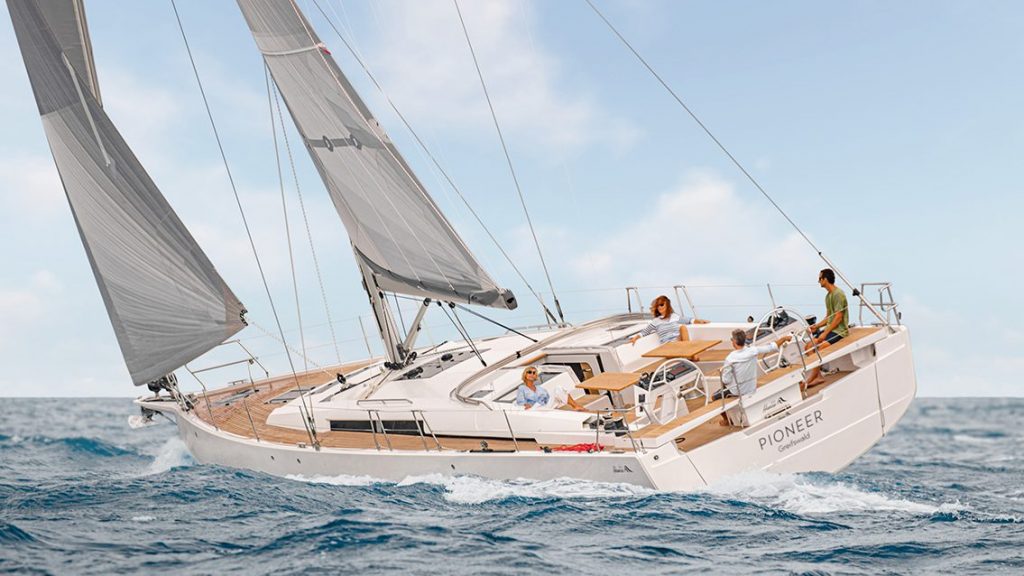
The average price of new sailboats is $250,000, with a range from $96,000 to $654,000, while the average price of used sailboats is $111,000, ranging from $19,000 to $518,000 (Improve Sailing) . It is important to note that these figures can fluctuate depending on the specific model, brand, and features that come with the boat. For instance, a 20 to 30-year-old cruising sailboat in excellent condition can cost between $30,000 and $150,000, with some luxury models exceeding $200,000 (Life of Sailing) .
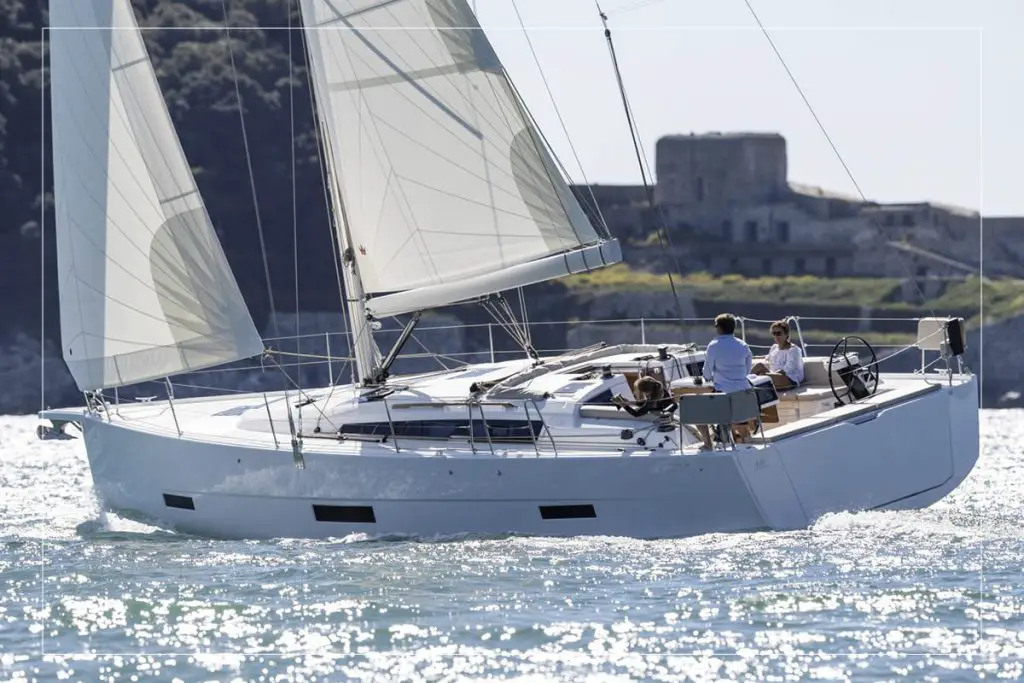
Aside from the initial purchase price, potential sailboat owners must also consider the ongoing expenses associated with maintenance, dockage, insurance, and other costs. Annual maintenance can range from $2,000 to $3,000 for most boats, with the total annual cost of ownership falling between $3,000 and $7,000 (Improve Sailing) . By understanding these expenses and being prepared for them, you can make a more informed decision when purchasing a sailboat and enjoy the many benefits of this exciting and rewarding hobby.

New vs Used Sailboats
When it comes to purchasing a sailboat, one of the first decisions a buyer has to make is whether to opt for a new boat or a pre-owned one. Both options have their own advantages and potential shortcomings, depending on the buyer's budget, preferences, and sailing goals.
New sailboats provide the advantage of being in pristine condition, with no wear and tear, and come with a manufacturer's warranty. Buyers can often customize them according to their specific needs and preferences. However, buying a new boat usually comes at a higher price, and depreciation can be a significant factor in the first few years of ownership. In contrast, used sailboats can cost considerably less, as they already have some usage and age Two Get Lost .
Pre-owned boats may include additional features and equipment that were added by previous owners. These can contribute to the value of the vessel and help the new owner save on additional costs. However, used sailboats may require more maintenance and repairs than their new counterparts, which could affect the overall cost of ownership. An essential part of purchasing a pre-owned sailboat is obtaining a professional survey to assess the boat's condition and identify any potential issues. This typically costs around $500 for a 40-foot or smaller yacht Discover Boating .
Finding the right sailboat ultimately depends on a balance between one's budget, specific requirements, and realistic expectations. By carefully assessing the pros and cons of both new and used sailboats, buyers can make an informed decision in line with their personal preferences, budget constraints, and long-term sailing objectives.

Size and Type of Sailboats
When considering the cost of a sailboat, it's important to take into account both the size and the type of the sailboat. Smaller boats tend to be more affordable, while larger boats tend to carry a higher price tag. However, prices can also significantly vary within a specific type or brand of sailboat, so one should consider all factors before making a purchase decision.
For example, a 22-foot sailboat may be close to $30,000 brand new, yet an older model of the same boat built in the late 1970s might be purchased for $5,500 source . Similarly, a new Islander 36' can cost nearly $150,000, while a used one can cost you around $40,000 source .
Different types of sailboats may have varying costs as well. Some popular types of sailboats include:
- Day Sailers: These smaller vessels are designed for short trips and are a popular choice for beginners. They have limited amenities and are typically less expensive.
- Cruisers: These mid-sized boats are equipped for extended trips and can accommodate multiple passengers in comfortable living quarters. They are more expensive than day sailers, but usually more affordable than racers or luxury sailing yachts .
- Racers: These high-performance boats are designed for speed and competition. They tend to have fewer amenities than cruisers but may be more expensive due to their specialized features and lightweight materials.
- Luxury Sailing Yachts: These high-end vessels are designed for comfort and extravagance, featuring state-of-the-art amenities and ample space for passengers. They come with hefty price tags, often costing millions of dollars.
As previously mentioned, used sailboat prices vary greatly, but on average, they tend to be around $21,000. New boats, on the other hand, can cost $60,000 and upwards source .

Additional Expenses
When considering the cost of sailboats, it's important to factor in additional expenses beyond the initial price of the boat. These costs can significantly impact the overall cost of boat ownership.
One such expense is insurance . For new cruisers, insurance can be a considerable expense, with rates dropping the longer you own your boat. For instance, insurance can start at around 2.8% of the boat's value and later drop to 1.3% after a year of ownership (The Home That Roams) .
Annual maintenance costs are another expense to consider. On average, maintenance costs for sailboats range from $2,000 to $3,000 per year, but they can be even higher for larger boats (Improve Sailing) . This includes costs for servicing, repairing, and upgrading various components of the sailboat.
Other recurring expenses include:
- Docking fees - Depending on the marina and location, docking fees can vary greatly.
- Equipment upgrades - From time to time, you may need to upgrade your boat's equipment for safety and comfort.
- Fuel - Although sailboats primarily rely on wind power, they still require fuel for auxiliary engines and generators.
Considering all these additional expenses, the true annual cost of owning a sailboat can range from $3,000 to $7,000 (Improve Sailing) . Keep these figures in mind when budgeting for sailboat ownership, as they can significantly affect the long-term costs involved.

Maintenance Costs
The cost of maintaining a sailboat can vary greatly depending on factors such as the size, age, and build quality of the boat. Typically, the annual maintenance cost for sailboats falls between $2,000 and $3,000, but can range from as low as $1,000 to as high as $5,000 depending on the specific needs of your vessel (Improve Sailing) . For larger boats of 30 feet and up, these costs can increase significantly, potentially reaching $7,000 or more when considering additional expenses like docking and insurance fees.
It's important to keep up with regular maintenance to prevent future expenses from rising. Such maintenance tasks may include engine servicing, hull upkeep, rigging inspections, and sail assessments (Better Sailing) . In some cases, annual maintenance costs can be estimated at around 10% of the boat's value, meaning a $30,000 sailboat may cost approximately $3,000 per year to maintain (Life of Sailing) .
Some common sailboat maintenance expenses include:
- Haul-out and bottom painting
- Engine service and repairs
- Rigging inspection and replacement
- Sail cleaning and repair
- Electronics maintenance
- Hull cleaning and waxing
Keep in mind that the costs provided are averages, and individual sailboat maintenance expenses can vary based on factors such as usage, location, and owner preference. Prioritizing regular maintenance can help you save money in the long run by addressing potential issues before they become major problems.
SeaMag's Take
The cost of sailboats varies greatly depending on factors such as size, age, and model. New sailboats have an average price of $250,000, while used ones average at $111,000 [source] . However, older cruising sailboats in voyage-ready condition can be found for around $30,000 [source] .
An example of sailboat pricing includes a new Islander 36' costing nearly $150,000, while a used one can be around $40,000. A new 26' Catalina sailboat typically costs around $80,000 [source] . While prices can range from $1,000 for a small dinghy to over $1M for a new 50ft catamaran, it's possible to find a suitable sailboat within a reasonable budget [source] .
Maintenance costs play a significant role in sailboat ownership. Annual maintenance costs usually range from $2,000 to $3,000 for most boats, while the total annual cost, including other expenses, could range from $3,000 to $7,000 [source] .
Related Articles

Top 5 Mythical Sea Creatures That May Exist: Unveiling Ocean Mysteries
Types of Tides: Understanding Their Differences and Causes
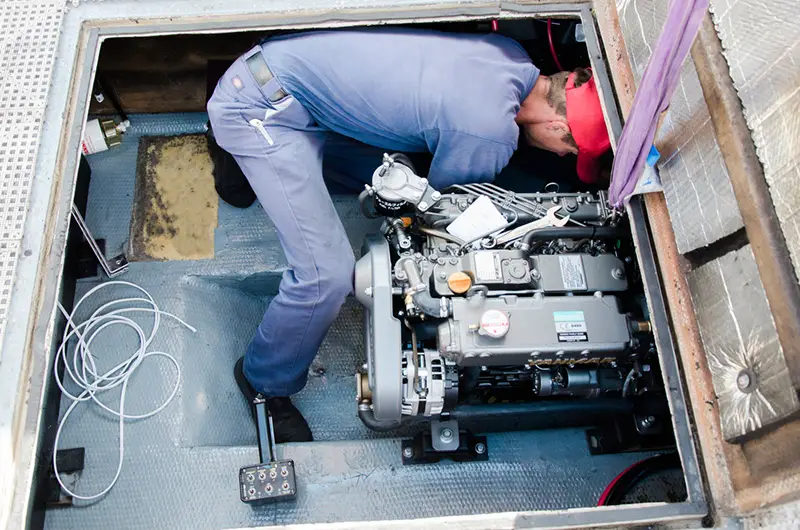
Which of the Following is Recommended Maintenance for an Inboard Boat: Essential Tips for Top Performance
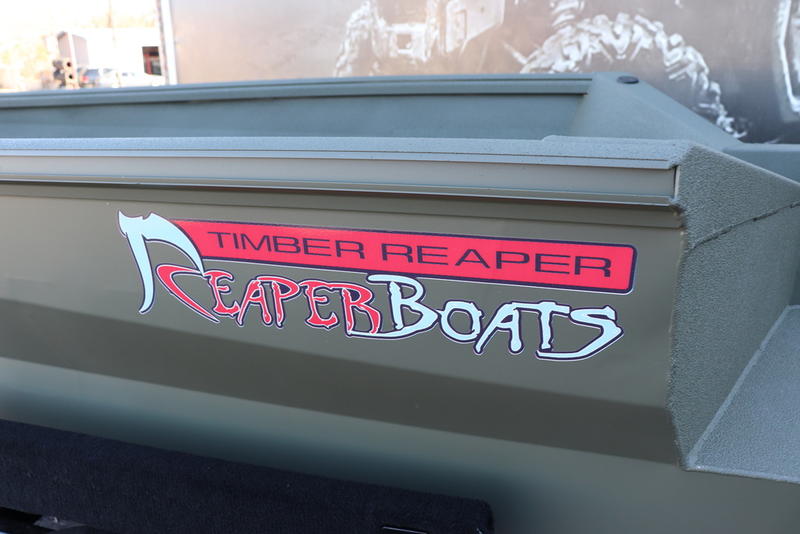
Reaper Boats: Unveiling the Future of Fishing Vessels

Best Bay Boats 2024: Top Picks for Performance and Value

Hydrafoil for Boats: Comprehensive Guide to This Maritime Innovation

The Princess S60: Luxury, Style and Superior Performance on the Seas
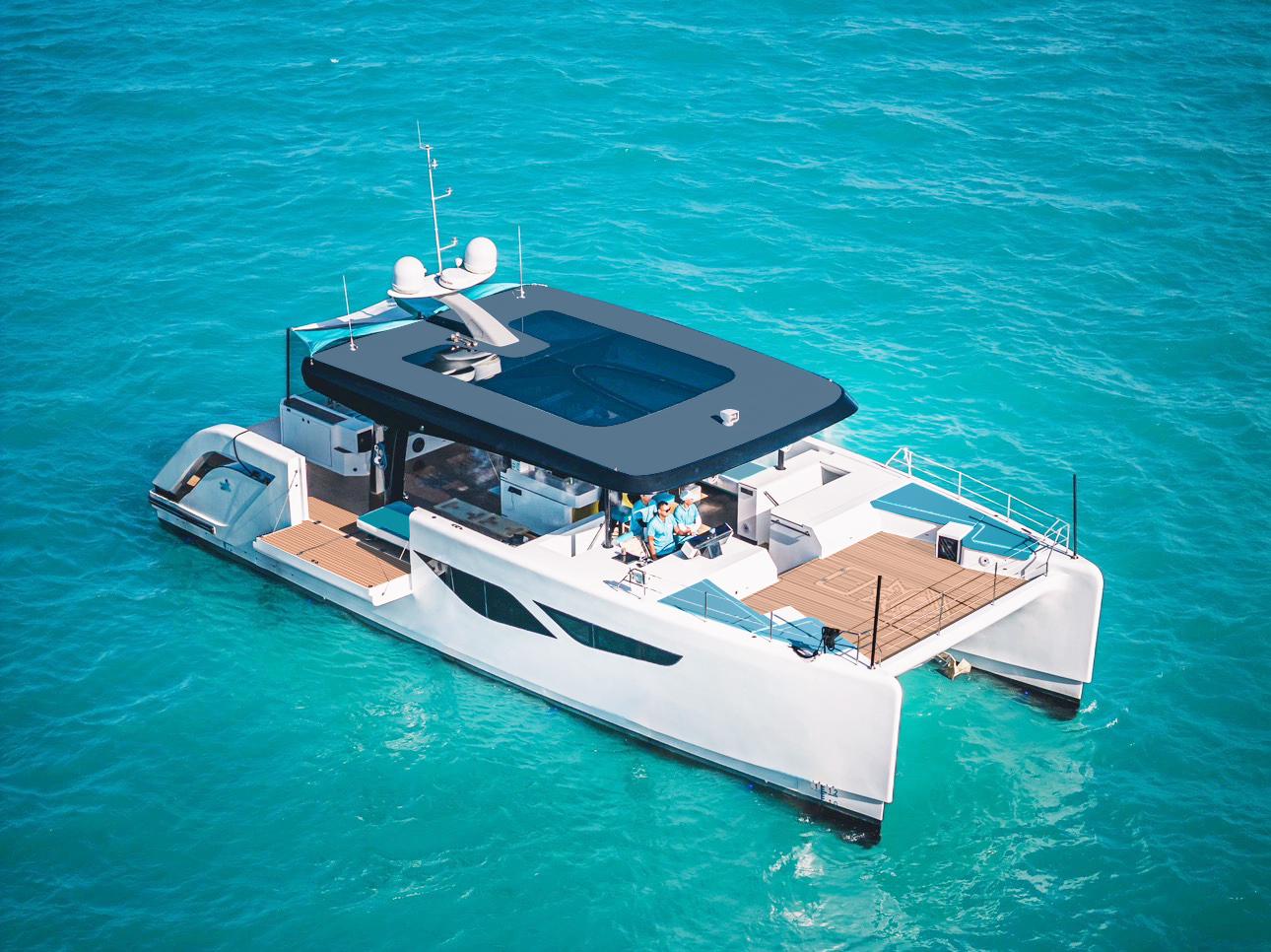
Catamarans: A Complete Guide to Multihull Boats

NORDIC TUGS
NORTHERN MARINE
BULLFROG BOATS
MY YACHT WORTH?
- USED YACHTS
FEATURED LISTINGS
YACHTS BY BUILDER
YACHTS BY LOCATION
YACHTS BY TYPE
WHY LIST WITH US
- BUYING A TRAWLER YACHT
- TRAWLER BOAT BUYER'S GUIDE
FT LAUDERDALE
MARINA DEL REY
SAN FRANCISCO BAY
VICTORIA B.C.
- SERVICE - PNW
FLOTILLA EVENTS
SEATTLE SAILING ACADEMY
- JOIN OUR TEAM
How Much Does An Average Sailboat Cost?

If you have ever spent a glorious afternoon on the water on a sailboat, you know what a thrill it is. Sailing represents freedom, harnessing the wind to drive you forward. It is a quiet time on the water and developing the skills to sail well can be addicting. It doesn’t matter if you want to simply go out for a few hours, enjoy an occasional overnight or weekend cruise, join the racing crowd and be in the frenetic chaos at the starting line, or dream of tropical sunsets in paradise far over the horizon. Sailing has great appeal to those romantic souls who discover its pleasures. And sailing can be a lifelong passion.
The average cost of a sailboat for sale will vary all over the board, given the many sizes, complexities, and types of sailboats out there. New or used, they can range from small, open daysailers to large catamarans that have multiple staterooms and accommodations for the entire family. Modern speedy monohulls will provide the adrenaline rush for those athletic enough to push them to their limits, while heavier, slower sailboats provide a comfortable platform to sail safely around the world, or wherever your dreams take you.
A 22-foot sailboat may be close to $30,000 brand new, yet an older model of the same boat built in the late 1970s might be purchased for $5,500 or less. A shiny new 48-foot catamaran will cost you well over $1,000,000, while a similar boat built in 2008 may be purchased for $425,000, and be better equipped. This new-versus-used situation is going to be true for all sailboats, no matter if they are monohull, catamaran, motorsailer, daysailer, or racing machine. Is it best to always buy a brand-new boat? That depends. The key is to understand that there will be additional costs that may not be obvious.
(Seen below: The Hanse 315 is an approximately 30-foot sailboat that costs between $100,000 and $150,000 when purchased new.)

The docks at all major boat shows showcase the diverse range of sailboats to satisfy everyone’s ideas, and it is easy to fall in love with one boat after another. Sailboats are funny like that, so similar, yet so different. How to choose the right one often comes down to what one can afford. That sail away special during the show may be enough to pull out your checkbook, but there is more to it than just the sale price. There is the obvious need to keep it somewhere, insure it, and maintain it.
Relevant: Frequently Asked Questions About Owning A Sailboat
One must have realistic ideas of what they are looking for, and an experienced yacht broker will be of great value to help determine that. A broker is key to weave the person’s sailing experience with the kind of sailing they hope to do, while working within their budget. But once the basic plan is in place, it becomes a fun adventure to look and learn from as many boats as possible. Some will appeal straightaway, for any number of reasons, while others may be intimidating in terms of size, complexity, and finishes that demand expensive maintenance. Boats with highly varnished brightwork will be much more labor intensive than white fiberglass, minimal interior appointments, and just basic systems. Low maintenance boats are literally a wash and wear proposition that live just fine during the season on a mooring.
For instance, most new production boats are built to the level of completeness necessary to satisfy most buyers. It is sufficient for how most people will use it. That is smart and intentional. It makes no sense to fully outfit a sailboat to the level where it can safely cross oceans, because the builders already know few owners have that desire and doing so drives up the costs significantly. So, the manufacturers complete the boats to around 80 percent of what would be necessary for a passagemaker ready to conquer the world.
If you have long-distance cruising plans, keep that in mind.
(Seen below: This is a very interesting video from a couple that lives on their sailboat. It gives you an idea of what you 'could' equipped with.)
What new boat buyers soon learn is the extent of associated costs that necessarily increase as the boats get bigger, more complex, with more systems for comfort and ease of sail handling…all intended to provide a higher quality living aboard experience.
A partial list of such items may include :
• Diesel engine propulsion system, including transmission, shaft and seal, and propeller • Additional standing and running rigging, such as whisker pole and inner forestay • A sail inventory beyond regular sails, such as spinnakers, Code Zero, and special purpose sails • Some form of renewable anti-fouling protection for hull and propeller • Batteries, which often must be replaced every six years or so • Ground tackle, which may include electric windlass, chain/rope rode and heavier anchor(s) • Navigation electronics and autopilot • Safety gear, such as PFDs, life raft, EPIRB, flares, harnesses • Dinghy and perhaps a gas or electric outboard • Comfort appliances, such as refrigeration/freezer, air conditioning • Generator • Bow thruster • Exterior canvas for bimini and covers for sun and weather protection • Additional fenders, dock lines, shorepower cords
One will also have to put together tool bags to maintain all the above, and there needs to be storage for these and other special tools that find their way aboard. In a harsh saltwater environment, tools typically must be replaced every so many years. (Read Our 4-Part Series On Boat Tools )
On a new or almost new boat, it is generally agreed that 10 percent of the value of the boat will be needed for recurring annual maintenance costs, for things like varnish, bottom paint, zincs, cleaning supplies, fuel filters, oil, grease, and other consumables. If one can do the work themselves, it will be much cheaper than paying the going yard rates.
On an older boat, the budget for keeping things working will generally be higher, unless the boat is simple and does not have lots of winches, systems, or complexity. The gaff-rigged Tahiti ketch comes to mind, as does the Westsail 32. Once a boat reaches 10+ years, things just start to wear out, hoses get brittle, plumbing cracks, wires corrode, pumps fail, and seacocks deteriorate. While older sailboats have the obvious appeal of a low initial price, a false sense of value can be shattered when it is determined that the engine must be replaced, all the leaking ports need major work, or it’s time for a new mast and rigging. Old roller furling gear goes into the dumpster.
That romantic cutter, all covered in teak decks and gleaming brightwork will cost you thousands of dollars to maintain the varnish. Unless you want to do it yourself, of course, but most find it tedious and time consuming.
Many younger people go the old, fixer-upper route, and they figure they can make it work while learning new skills. But they are still in their prime, don’t mind a little discomfort by roughing it, and their dreams and vision cuts through the cloud of difficulties to get the boat that much closer to begin living the dream. There are scores of YouTube channels that celebrate this lifestyle theme of living the experience.
While there are compelling reasons to buy a new boat, the sweet spot for managing the cost of buying a sailboat, I believe, is to find one that is neither brand new nor very old. Searching for a boat that fits one’s needs and is under 10 years old can result in a purchase that has the best all-around value. The boat’s propulsion, plumbing, steering, and electrical components are still working, the equipment still current and good for the foreseeable future. One does not expect the same service from an autopilot that is 30 years old, assuming it even works.
Look at the popular Beneteau Oceanis series sailboats, for example. Keeping it under 10 years old, one finds a 2015 Oceanis 41 around $178,000, and a 2018 Oceanis 41.1 at $198,000. These are not bad prices for newer boats that are also well equipped. The same holds true for other main brand manufacturers, such as Jeanneau and Hanse .
Many of the classic, proven sailboats are still out there, though, and worth a look if you can find one. While the design is now 50 years old, the Valiant 40/42 remains a popular choice for cruisers. The older, original Valiant 40s come on the market for around $75,000, while the newer V42s built in Texas still hold their value about $225,000. The same is true with established designs from other top yards, such as the Swedish and English builders of Hallberg-Rassy, Malo, Rustler, and Oyster.
(Seen below: This 2000 Jeanneau 45 Sun Odyssey is a good example of a used sailboat on the brokerage market. It is listed for under $200,000.)

For performance and fun, a five-year-old J/22 can be bought for $9000 and offers a lot of sailing pleasure in a small package. A 10-year-old J/105, a more capable sailboat, is right around $70,000.
Not surprising, the age of the boat has as much to do with the asking price as its condition and how well it is equipped. A 1977 Catalina 30 can be purchased for $15,000, while a five-year-newer boat is listed for $25,000. A Catalina 30 built in 1993 is asking $29,000.
Ultimately, the cost of buying a sailboat must be balanced with the value it brings. Newer boats aren’t just fresher and cleaner, they are arguably better boats, as the technology of boat building has made great strides in improving the product. Vacuum infusion is now commonplace and is far better for building a strong hull that is lighter than traditionally hand laid fiberglass, where it was difficult to control the resin to glass ratio.
Diesel engines are now much cleaner, lighter per horsepower, have better fuel economy, and overall, propulsion systems have greatly improved with electronic controls. The same is true for most other components, from appliances to steering systems. And today’s electrical systems are lightyears better than what is found in older boats. LED fixtures, lithium-ion batteries, regeneration gear, and much improved wiring practices add to the marvelous systems of today.
Across the board, hull shapes have changed, and they are more powerful, more easily driven, and the sailing systems that power them are also much improved, while being safer and easier to use. Some builders, such as Tartan Yachts, even promote that they have put the fun factor back into sailing, as their sail handling systems are a joy to use.
If you are ready to join the sailing world, find yourself an experienced broker to share your ideas and plans, and get real. Dreaming is fun but being at the helm of your own sailboat is better than any fantasy.
The world awaits. Good luck.
Enjoy these other boating and cruising articles:
- The Unexpected Side Of An Aging Sailor
- What Is The Safest Sailboat?
- Is Sailing A Cheap Hobby?
- What Are The Different Types Of Sailboats?
- How Big Of A Sailboat Can One Person Handle?
- What Is The Best Size Sailboat To Live On?
- Moving From A Sailboat To A Trawler
- Sometimes It's All About Simplicity
- The Bucket: A True Story
- Essential Supplies For Extended Cruising
- The Exhausting Need To Keep Up With New Technology
- Have A Backup Plan!
- Northern Marine Exhaust Systems Are Better
- Cruising Boats Come Of Age
- Changing Rituals
- Did Wisdom Come To The Ancient Mariner?
- Going World Cruising? Not So Fast
- What Engines Are In Your Boat?
- Letting Go But Still In Control
- Learning To Handle A New Boat
- Improving The User Experience
- A Paradigm Shift In Cruising
- Consider Buddy Boating
- A Matter Of Staying Safe While Boating
- Should I Carry A Gun While Cruising?
- A Boater's 3-to-5 Year Plan
- Provisioning Your Yacht For Extended Cruising - Bahamas
- Provisioning Your Yacht For Extended Cruising - Alaska
- The Evolution Of The Trawler Yacht
- Getting Ready For The Great Loop
- A Winning Great Loop Strategy
- Tips For Cruising South
- The Great Loop

Time For Spring Commissioning: But Have You Thought Of This?
View Article

Insuring Your Boating Dream

The Ultimate Trawler Boat Buying Guide
Sausalito boat show 2024, annapolis sailboat show 2024, annapolis powerboat show 2024, nimbus boats featured at trawlerfest baltimore 2024, nyba fall boats afloat show 2024, san diego international boat show 2024, california yacht club open house & boat show, anacortes boat and yacht show featuring trawlerfest 2024, office locations, pacific northwest.
Shilshole Marina
7001 Seaview Ave NW, Suite 150 Seattle, WA 98117
ANACORTES - SALES
Cap Sante Marina
1019 Q Avenue, Suite A&B
Anacortes, WA 98221
ANACORTES - SERVICE
Marine Parts / Service Center
2915 W Avenue
Sun Harbor Marina
5060 N Harbor Dr, Suite 155 San Diego, CA 92106
SAN FRANCISCO BAY AREA
Marina Village Yacht Harbor
1070 Marina Village Parkway, Suite 109 Alameda, CA 94501
MARINA DEL REY, CA
Marina del Rey
13900 Marquesas Way, Suite 6002 Marina del Rey, CA 90292
FORT LAUDERDALE
Fort Lauderdale
1535 SE 17th St, Suite #103B Fort Lauderdale, FL 33316
Safe Harbour Old Port Cove
116 Lakeshore Dr. North Palm Beach, FL. 33408
Annapolis Harbor
7350 Edgewood Road Annapolis, MD 21403
International
Philippines.
Virtual Brokerage Office


Average Sailboat Prices: 27 Helpful Examples (With Pictures)
The average price of used sailboats is around $21,000, but new boats cost $60,000 on average and upwards. Some used boats can be purchased for less than $10,000, depending on their age, size, and condition. This is because pre-owned sailboats have about 80 percent of the market share.
You will find models from the early 1960s still racing across the Pacific and Atlantic like new. So what are your options?
Below, we provide a comprehensive list of enduring sailboat designs:
You can also check out our in-depth guide for more information on general boat average prices. In this guide, we have included a long list of boat types
Table of Contents
27 Good Examples When Looking At Sailboat Prices
1) tayana 37.

Marine designer Robert Perry is arguably one of the most prolific in the boatbuilding world.
His Tayana 37 is one of the most popular production sailboats of all time, with over 650 built.
The Tayana 37 features a sturdy fiberglass hull and a balsa-cored deck for smooth and comfortable circumnavigation.
It comes with a variety of customizations, including different rigs, decks, accommodation, and more.
However, the early boats have V-berths, a high-aspect-ration rig, and a luxurious teak-trimmed interior.
Measuring 36’8″ in length with a displacement of 24,000 pounds, the Tayana 37 is one of the best world cruisers ever made. While production stopped in 2016, you can get one for $34,000 to $65,000.
2) Catalina 22

Depending on the production year, the ubiquitous Catalina 22 can be as low as $4,000 or up to $15,000 for recent models.
This trailerable sailboat was first built in 1969 and enjoyed popularity thanks to its family-friendliness and compact design.
With over 10,000 boats commissioned, the Catalina 22 and its successors Catalina 27 and Catalina 30 are a permanent feature at lakes, rivers, and the high seas.
Despite its size, the Catalina 22 can hold its own in rough seas thanks to the hand-laid fiberglass hull. It is spacious below deck and comes with all the facilities you need to feel at home.
Whether you are a club racer or weekend cruiser, this dependable platform offers one of the best values for money when you want to spend quality time on the water. If you get one with a trailer, that can save you a lot of money on marina and storage fees over time.
3) Hunter 356

Starting in 2000, Glenn Henderson’s Hunter 356 took the sailboat industry by storm.
500 boats later, the 356 is still one of the best high-performance sailboats in its class.
This boat features a solid and balanced hull, shoal draft, and exceptional sailing qualities.
It has a sleek design, a clutter-free cockpit, and is easy to handle.
Early production Hunter 356s are available for less than $60,000.
Hunter Marine no longer produces the 356, but the sailboat is still popular among sailors old and young.
4) Contessa 26

The compact Contessa 26 was designed by David Sadler and Jeremy Rodgers in the 1960s. It blew into the limelight when it helped Tanie Aebi complete her solo circumnavigation.
This fiberglass monohull is a sturdy and dependable vessel, and around 650 are voyaging across the oceans today.
She has a low freeboard, and the rudder is attached to the keel in a strong, traditional manner.
While you may have to bend a bit to access the cabin, there is plenty of space and amenities to deliver a home-away-from-home feel.
This is one of the most popular British sailboats and is most sought after by long-distance ocean sailors or just someone who wants a classic sailboat.
You can get a well-kept boat of this type for less than $10,000 or over $20,000.
The sister ship Contessa 32 is also a well-built model popular among sailors.
5) Island Packet 31

If you love sailing in shallow waters, the Island Packet 31 is designed for the shoal draft needed to safely navigate Florida waters.
Featuring a solid fiberglass hull, the 31 has an end-grain balsa core deck, which gives it a powerful and solid feeling.
The boat is roomy, comfortable, and is designed to be simple to use and maintain.
While her seagoing credentials might not be the best, the Island Packet 31 is a vintage liveaboard yacht with all the trappings of royalty.
This boat costs about $35,000 to $50,000.
6) Bristol 40

This Ted Hood design is one of the best cruising boat designs of all time.
Featuring a narrow beam and solid hull, the Bristol 40 has a low freeboard, large overhangs, and exceptional seaworthiness.
Its long keel carries an attached rudder for excellent tracking and stability.
The Bristol 40 has a relatively small interior with separate cabins , sea berths, and an enclosed head.
This boat was produced in keel or keel/centerboard configuration and came with the powerful Atomic 4 gas engine. Many have been upgraded to diesel engines.
If you want a vintage racing sailboat that can deliver an impressive pace in the water, consider one of these.
The Bristol 40 was produced from 1966 to 1986, and you can get one for $29,000 to $49,000.
7) Cape Dory 30

This 30-footer introduced in 1976 is a popular sailboat for people on a budget.
It boasts a robust design with a solid single hull, balsa-cored deck, and extensive bronze and teak hardware in the interior and exterior.
Like the Bristol 40, this boat has its rudder attached to the keel for stable tracking and safety, but not as much overhang in the stern. The space below the deck uses a traditional design. But this tried and tested design is still ruling the waves.
For more room and improved handling, you can check out the bigger Cape Dory MK11, which comes at over $50,000.

If you live on the West Coast of the United States, chances are you’ve seen one of these beauties.
Over 400 units of the Gulf 32 were produced, and the boat’s durable construction and beautiful design make it a good fit for many sailors.
It features a flush cambered deck, a sweeping sheer, and a low profile pilothouse, making it stand out on the water.
Specifications for the boat differ because it was built by two different boatyards. However, all Gulf 32 boats have a cavernous interior, comfortable wood finishes, and motorsailer dimensions.
Good samples of this model go for $24,000 to $39,000 but check the side decks for delamination.

9) Endeavour 37

The Endeavour 37 is the successor of the successful Endeavour 32.
It is available as a sloop and ketch and comes with a powerful Perkins 4-108 diesel to provide good power for its heavy design.
The Endeavour 37 can be slow going upwind because of its weight but offers comfortable and smooth rides.
The hull is single fiberglass, and the interior comes with plenty of plywood, although the craftsmanship is exceptional.
The boat could have two aft cabins with a convertible dinette forward or a single aft cabin with a V-berth forward.
It sells for $20,000-$49,000.
10) Tartan 37

The Tartan 37 is one of the three 37-footers Tartan Marine built over the years and the most popular.
This boat has a balsa-cored hull and deck and external lead ballast. The bulkheads are firmly tabbed to the deck to provide good structural strength.
With over 500 built, the Tartan 37 is a fast boat ideal for racing.
You can still find these boats for $23,000 and upward.
11) Islander 36

As the name suggests, the Islander 36 is a 36-footer sailboat designed by the Australian Alan Gurney for Islander Yachts.
It features a skeg-mounted rudder, fin keel and has a solid fiberglass hull.
Unlike most sailboats with end-grain balsa deck, the Islander 36 uses plywood, which increases weight and can be stronger, but it can also get wet from leaks in the deck and rot.
What the boat excels at is the interior space.
The boat’s wide beam allowed the builder to provide more accommodation, unlike other boats in its category.
Over 1,000 units of this boat were built, and you can buy one for $22,000 and above.
12) Hallberg-Rassy 35 Rasmus

This Olle Enderlein design features a center cockpit, a huge windscreen, and a full keel for improved stability and handling.
It has all the amenities of a small home, including a saloon, galley, main cabin, v-berth, and enclosed head.
The sailboat has a solid fiberglass construction and rides well in choppy waters.
A 75HP Volvo Pentad MD21 diesel supplements wind power, making this boat a reliable cruiser.
The boat sells for about $30,000.
13) Dufour Arpege 30

You might not hear of this boat builder often, but it was one of the most successful in France and beyond.
The Arpege 30 sports luxurious facilities include stylish sea berths, a large galley, and plenty of forepeak storage compartments.
This 30-footer was so popular over 1,500 were sold from 1966 onward.
If you need a classic sailboat with high-end performance and fittings, this weekend cruiser is it.
One of these beauties goes for around $18,000
14) Mason 43/44

The Taiwan-built Maison 43/44 from Al Mason is a fast, comfortable, and reliable oceangoing sailboat.
These boats were first introduced as the Mason 43 and upgraded to the Mason 44 in 1985.
The boat has a full keel and a cutter rig and rides well in the sea.
There are double-berth cabins fore and aft, a galley, and everything a small family or couple needs to cross any ocean in comfort.
These beautiful boats are still found in docks worldwide and go for $60,00 to over $120,000.
15) Nor’Sea 27

This 27-footer designed by Lyle Hess is one of the most affordable and ocean-capable sailboats still in production today.
Despite being compact enough to move by trailer from one boating hotspot to another, the Nor’Sea 27 can take you safely across any ocean.
Don’t be fooled by its small size; this is a solid boat that can withstand a heavy bashing at sea.
It has a lapstrake fiberglass hull, a full keel, sturdy bulwarks, and a round stern for exceptional seaworthiness.
The Nor’Sea 27 featured a bowsprit and extended anchor roller, giving it a traditional sailboat appearance.
If you need an affordable sailboat that can circumnavigate the world, the Nor’Sea 27 is a capable cruiser that won’t hurt your purse.
You can get a 1981 model for less than $30,000.
16) C&C Landfall 38

If you need a highly maneuverable sailboat, fast, and has exceptional cruising capabilities, one of the best examples is the Landfall 38.
This boat was produced in the shallow draft and deep fin configurations, and later versions gained 1700 pounds in weight.
However, this didn’t dampen the boat’s performance in bluewater environments.
The Landfall 38 was one of the first boats to feature a hull and deck with end-grain balsa coring, making it light and increasing stiffness.
There are a keel-stepped mast, through-bolted deck hardware, and a spade rudder, which provides improved control and sailing performance in all weather.
The interior is lavishly finished in teak, and the aft cabin has a double berth.
These boats were equipped with a venerable Yanmar diesel engine and sails upwind like a racer.
This boat costs around $33,000, and the last units were built in 1987.
17) Gulfstar 50
Gulfstar 50 is one of the most comfortable family-sized sailboats in the world. Gulfstar also made versions from 36 feet to 60 feet.
Despite its luxurious trims and decent performance, the 50-footer from Gulfstar Yachts is affordable considering its features.
It features a center console cockpit, which provides for a spacious owner’s stateroom aft.
There is plenty of accommodation for a family or a small group because it was designed for charter. With its solid fiberglass hull and exquisite interior finishing, this boat continues to be one of the most preferred liveaboards for people who choose the sailing lifestyle.
A 1978 model goes for around $99,000.
18) Beneteau 423

This Groupe Finot-designed sailboat is one of the best from the French boatbuilder Beneteau.
It has a solid construction, exceptional speed and is easy to handle even in rough waters. The interior is clutter-free, comfortable, and spacious.
Plus, the 423 is a quality boat that delivers tremendous value for money considering the pedigree and quality.
You can get one for less than $100,000 to around $195,000, based on the year of production and condition.
19) Alberg 30

With over 750 of this boat built over 25 years, the Alberg 30 is one of the most beloved cruising-racing sailboats.
Featuring the wooden boats’ classy look, the Alberg 30 has a full keel, long overhangs, and a low freeboard.
Despite production stopping since 1984, these boats are going strong thanks to durable fiberglass construction and attention to detail.
The Alberg 30 is not the most accommodating by modern standards. But it has a sal0on, a V-berth forward, and an enclosed head aft.
There is also a small galley to starboard, and the design is clutter-free.
If you want to own one of these legendary club racers, you will be surprised they go for as low as $10,000 to $25,000.
The price will often depend on whether the original Atomic 4 gas engine has been upgraded to a diesel engine.
20) Peterson 44

The Peterson 44 was designed by Doug Peterson of the Jack Kelly Yachts in 1975.
This fine boat was designed for long-distance cruising and its center-cockpit style provided ample accommodation and comfort.
You can still find these beautiful boats crisscrossing the oceans , and many of them have circumnavigated.
The Peterson 44 featured hand-laid fiberglass matt and polyester resin roving, making it a solid and dependable cruiser.
It has a three-cabin layout with V-berths, a dinette, and an enclosed head.
The boat is powered by a 62HP Perkins 4-152 Diesel, although a few have 80HP Ford Lehman’s, allowing it to run fast under power.
It is estimated that over 600 hulls of the Peterson 44 were built, and price ranges from around $73,500 to $230,000.
21) Hinckley Bermuda 40

Few sailboats hold their value, like the Bermuda 40 from Hinckley.
This elegant and capable boat was built to exacting specifications with its yawl rig, low freeboard, and sweeping overhangs.
Most used B 40s are still in mint shape because their proud owners well maintain them, many serviced by the boatbuilder. So they retain most of their value even after thousands of miles on the high seas.
Despite its 40-foot length, the Bermuda 40 is limited in space, making it ideal for couples.
It has V-berths forward, which you can convert to a comfortable double bed.
There is plenty of storage space, and the head has a shower and a sink.
The deck is spacious, and the boat handles nimbly even in turbulent waters.
This boat is geared towards traditional sailors who want a top-end boat, as even a base model from 1975 goes for about$90,000.
22) Pacific Seacraft 37

Since its introduction in 1980, the Pacific Seacraft 37 has proven to be one of the best world cruising sailboats in its class.
This boat is fast, comfortable and solidly built for safe passages across the ocean.
It was offered in the cutter and yawl configurations, and its traditional stern style sits atop a modern skeg rudder underbody.
This boat has accommodation for six passengers and every amenity to ensure a comfortable time on the ocean.
She is a prominent feature at the Singlehanded Pacific Yacht Race and other top sail boating events.
This boat is still in production and goes new for around $450,000, so an older used model for less than $100,000 is a good deal.
23) Gemini 3000

A successor to the Gemini 31, the 3000 is the most popular American-built cruising cat on the market.
Featuring a simple design, this highly functional cat is affordable and fast.
Despite its narrow beam, the Gemini 3000 boasts a master stateroom with a queen-size double berth forward.
There are guest staterooms aft of both hulls with two small doubles.
It has a small saloon with a collapsible table with two settees and a galley, converting to a double berth.
This 30-footer can sleep three couples comfortably and will accommodate a family with several small children without issues.
The Gemini 3000 has deep pivoting centerboards for improved performance and directional stability.
Geminis are not considered suitable for bluewater cruising because they are not designed to withstand serious bashing.
However, these cats offer an affordable ticket for a family or group of friends to enjoy coastal cruising. This boat goes for around $35,000 to $65,000.
24) Gunboat 62 (catamaran)

The Gunboat 62 from the same name’s cat builder is one of the safest offshore sailing catamarans in its class. It’s also insanely expensive!
This high-performance cat is perfect for oceanic cruises.
Its innovative design opened up plenty of space for accommodation and recreation.
It features three private cabins, each with queen berths and 2 roomy heads with a separate shower in each hull.
There is a galley, a lounge, a folding dining table, and a full pantry below the deck.
The starboard bow has a crew head, and the port bow houses the crew quarters.
This cat comes with air conditioning, refrigerator, deep freezer, and dishwasher, among others.
The cockpit is lavished with teak, and every part of the boat oozes luxury.
This cat carries a premium price tag of over 2 million dollars.
25) Lagoon 380 (catamaran)

Lagoon 380 is a 4 cabin sailing cat built by Jeanneau.
This cat accommodates 10 passengers and is an excellent platform for cruising across the ocean or lounging on coastal waters.
With over 500 units cruising across the world, the Lagoon 380 has won the heart of many cat sailors as a comfortable and safe platform.
This workhorse comes with an exquisitely furnished interior at an affordable price.
It might not be the fastest catamaran, but the Lagoon 380 provides all the comfort and stability you need to have fun and memorable moments on the water.
These boats go for $400,000 or more, so they may still be out of many sailors’ reach.
26) Catana 50 Carbon (Catamaran)

If you need a light, fast and go-anywhere cat, the Catana 50 Carbon is one of the best on the market.
Using weight-saving carbon fiber, Catana reduced the weight, turning the boat into a racy oceangoing multi-hull.
With this vessel, you get a luxurious interior, ample deck space, superior performance, and easy handling.
This boat costs a whopping $1.3 million at a base price, making it a choice of select premium sailors.
27) Prout Snowgoose 37 (Catamaran)

With an estimated 500 units built, the Prout Snowgoose 37 from Prout boatyard is one of the most popular cats from the UK.
This catamaran features solid construction that allows it to sail across oceans, and many are reported to have completed circumnavigations.
The Prout 37 may not look like the newest designs, but it has a comfortable deck and interior.
Below deck, this boat has two large double cabins aft and a full queen berth forward.
There is a saloon with a large table and wraparound settees.
It has a changing station, a full-length bookshelf, and a large storage starboard hull. And the galley is well-equipped to keep a family well-fed on long voyages.
There are hundreds of Prout Snowgoose 37s plying the world’s ocean, and you can own one for less than $100,000.
2 Ways To Reduce the Cost of Buying a Sailboat
There are two main ways of saving cost when buying a sailboat or any boat. They include:
1) Buying Used Boats
If you’ve followed this article this far, you notice that the most affordable boats on this list are used.
Contrary to many novice sailors’ belief, you can buy sailboats for low prices as long as you do due diligence.
Many models from the last half of the 20th century are available for less than $30,000.
Because most serious sailors are passionate about their hobbies, they take exceptional care of their boats. This makes most sailboats on the market retain their value for many years.
In fact, you can get oceangoing boats of 26-32 feet in almost pristine conditions under $100,000.
The best part is most popular sailboats have a strong following worldwide, and sourcing spare parts won’t be a problem.
2) Partnerships
The other way to reduce the cost of a sailboat is to partner with someone.
Partners will share the purchase cost and other expenses related to the boat. However, this can be problematic.
Sometimes, a partner will not honor their commitment when it’s time to pay.
A partner may spend more time on the boat, and this can lead to conflict over responsibilities.
If you choose this route, it’s better to partner with a family or friend. And have a contractual agreement stipulating the rights and obligations of all the parties involved in the transaction.
Considering that most used sailboats are affordable and in good condition, you can save yourself the potential problems that come with co-owning a boat.
The best way to experience sailing life is to own your boat.
Final Words
Sailboats have come a long way since they became a serious pastime for people in the early part of the last century.
Because of the early sailboats’ quality construction, new sailors have myriad options to choose from without hurting their finances.
You can get a pre-owned offshore capable sailboat for less than $10,000 in many parts of the world.
However, very inexpensive used boats may need many repairs and upgrades, so it is often more inexpensive in the end, too, but a well-maintained and upgraded vessel. If you have a fat purse, you can go for newer, premium sailboats in the hundreds of thousands.
But whatever your budget and sailing dreams, there is a sailboat out there for everybody who dares to explore the oceans.
Click to share...
- Types of Sailboats
- Parts of a Sailboat
- Cruising Boats
- Small Sailboats
- Design Basics
- Sailboats under 30'
- Sailboats 30'-35
- Sailboats 35'-40'
- Sailboats 40'-45'
- Sailboats 45'-50'
- Sailboats 50'-55'
- Sailboats over 55'
- Masts & Spars
- Knots, Bends & Hitches
- The 12v Energy Equation
- Electronics & Instrumentation
- Build Your Own Boat
- Buying a Used Boat
- Choosing Accessories
- Living on a Boat
- Cruising Offshore
- Sailing in the Caribbean
- Anchoring Skills
- Sailing Authors & Their Writings
- Mary's Journal
- Nautical Terms
- Cruising Sailboats for Sale
- List your Boat for Sale Here!
- Used Sailing Equipment for Sale
- Sell Your Unwanted Gear
- Sailing eBooks: Download them here!
- Your Sailboats
- Your Sailing Stories
- Your Fishing Stories
- Advertising
- What's New?
- Chartering a Sailboat
- True Cost of Boat Ownership
The True Cost of Boat Ownership
If you haven't properly considered the true cost of boat ownership before buying one, you'll very likely be in for a nasty shock. The cost of buying the boat is only the beginning - take these recently advertised beauties for example...

But whoa, hold on a minute!
Before you rush out and put down a deposit, first you may wish to consider a few inescapable facts relating to the cost of owning and operating a sailboat:
- Fact #1: Owning and operating cost are not directly proportional to the length of the boat; they increase exponentially. For example, take a sailor cheerfully pottering around in his 25-foot sailboat. One day he comes into money, sells his 25-footer and treats himself to a 50-footer. It won't be long before he discovers that doubling his monthly boat budget just won't cut it anymore; doubling in size increases these costs by a factor of around 4, not 2.
- Fact #2: If you trade in your sloop with its single mast and two sails for a staysail-ketch (two masts and four sails) you're going to spend a lot more time in the company of riggers and sailmakers.
- Fact #3: It will cost a lot more in terms of labour and materials to apply bottom paint to a heavy displacement cruiser with its substantial wetted area, than a shallow-hulled light-displacement flyer of similar length overall.
- Fact #4: It will cost more to maintain the twin engines of a catamaran than the single engine of a monohull - and berthing fees will likely be twice that of a monohull of similar length overall.
- Fact #5: Add a bowsprit and a bumpkin to your 30-foot sailboat and the marina will now charge you for a 40-footer.
Having got those out of the way, and before analysing a 'real-life' example based on a 36-foot cruising boat, let's take a look at the annual components of cost (items 1 to 7 below) that go to make up the true cost of boat ownership.
1. Capital Cost
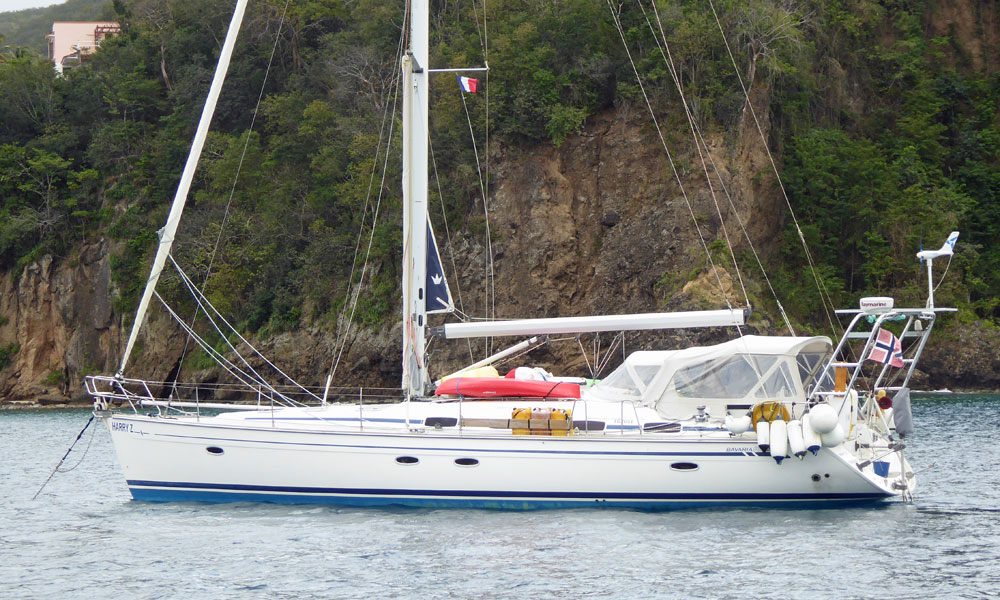
The capital cost represents the amount paid for the boat, plus the cost of all additional equipment required to make her ready for sea.
On a new boat, the additional equipment required (for example safety gear, mooring lines, ground tackle, autohelm, davits, dinghy and outboard, solar panels and/or wind generator, bimini, dodger etc, etc) will be substantial, but a secondhand boat will probably have most of this included in the sale price.
2. Finance Costs
Unless you've raided your bank account for the full purchase price and all the additional required gear, you'll need to take out a loan. The interest you pay on the loan is another cost to be taken into account.
3. Depreciation
A new boat will probably depreciate at around 10% in the next year, then 5% for each of the next 4 years, after which it will level off. So, for a well-maintained used boat more than 5 years old you don't need to consider depreciation as part of the true cost of boat ownership.
4. Insurance Cost
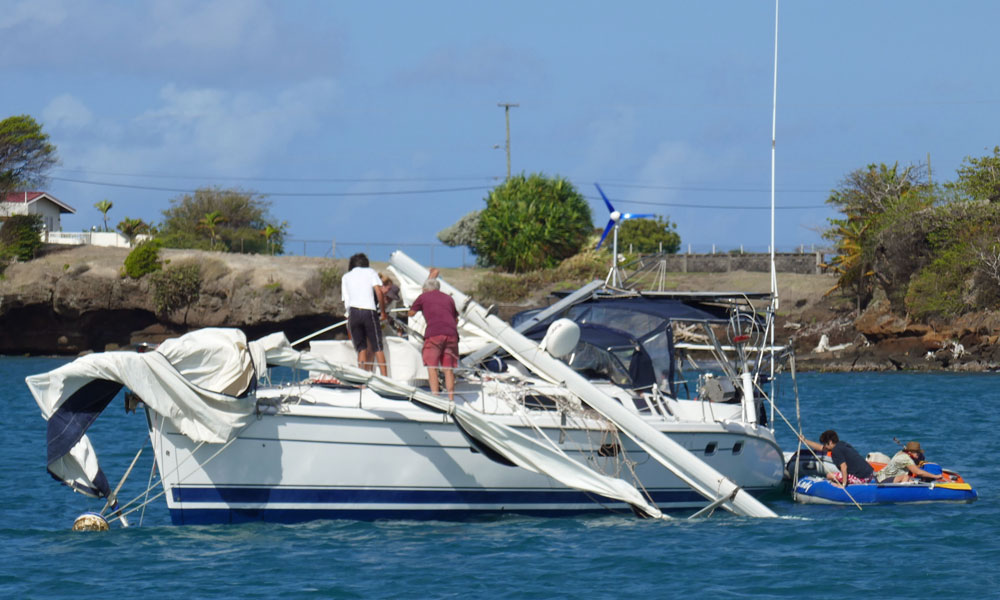
As a general rule, boat insurance costs around 1.5% of the boat's value. However, if you keep your boat in a hurricane zone you can expect to pay a premium - from personal experience, a substantial one! And that's if you can find a marine insurance company willing to offer cover for named storms - most of them won't.
5. Mooring or Berthing Costs
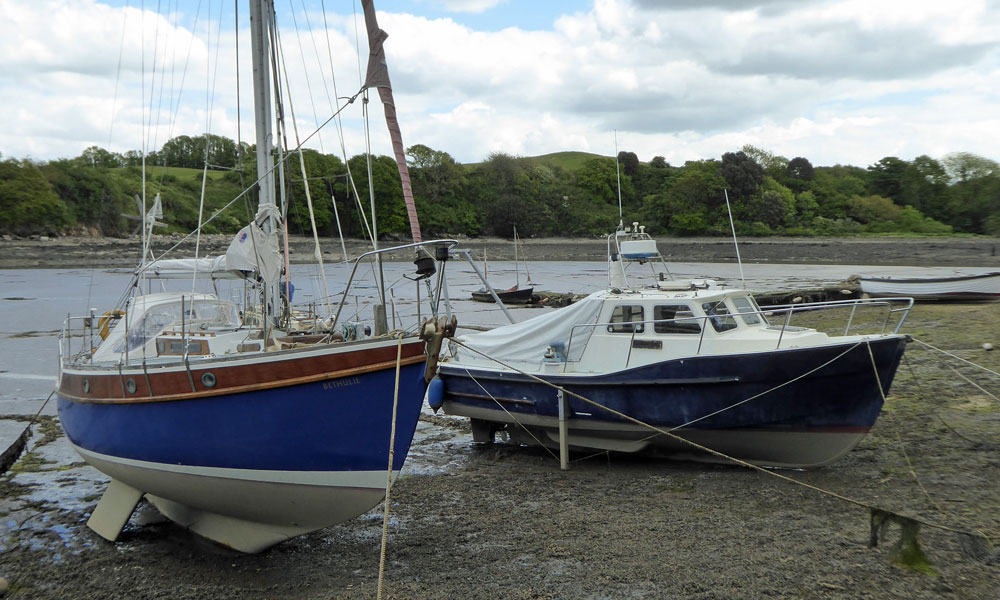
It's an inescapable fact that you have to keep your boat somewhere and wherever that may be, someone is going to charge you for it. How much is largely a matter of geography and convenience.
For example, the convenience of a berth in a swanky marina is always going to be more expensive than a half-tide mooring in a muddy tidal river - particularly so in the case of a multi-hull.
And these cost will not only apply to your home port where you'll keep your boat, but also those you visit on your forays away. Short term visitors fees at these destinations will be rather more than you pay for your long term fees back at base.
For more on this aspect of boat ownership, take a look at 'Should I Buy a Boat?' .
6. Off-Season Storage Ashore
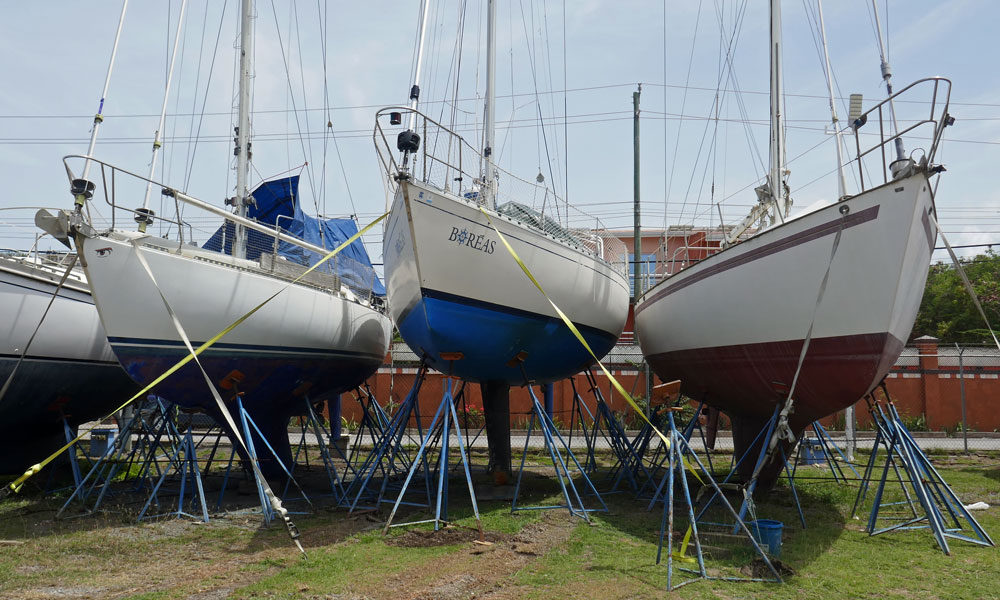
Most of us like to keep our boats out of the water during the off-season as it's no bad thing to let modern GRP hulls dry out annually. Storage costs ashore are generally cheaper than a marina berth, but of course you will be faced with the cost of hauling-out and laying-up .
7. Maintenance & Upgrades
Other than the costs of annual anti-fouling (bottom paint) you should be spared most of these costs for the first few years of ownership if you've sprung for a new boat.
But for the rest of us, maintenance costs are very much something we have to budget for. There's always something that needs servicing or replacing, so setting aside emergency funds for unexpected repairs and breakdowns would be a wise move.
The True Cost of Boat Ownership - An Example...
Let's assume we're looking at a pre-owned Catalina 36 MkII from 2001. The asking price was $79,900 but we've negotiated a deal at $75,000 - subject to survey of course.
We've got $25,000 to put down and will take out a bank loan for the remaining $50,000 to be repaid over a 5 year term.
We intend to keep her in a marina year-round, giving ourselves the opportunity to maximise her use.
What will be the true cost of ownership for this boat? Read on...
In these days of relatively low interest rates you'll be lucky to get 3% per annum on any money left in a bank account, so the loss of interest on the $25k you're about to spend would be just:
$750 per annum
Using this On-Line Boat Finance Calculator , the total amount to be repaid on a $50k loan over 5 years at 7.9% APR would be $57,948. So the total cost of the loan would be $7,948, which equates to:
$1,590 per annum
This is a 20 year-old boat, so providing we keep up with maintenance and updating she's unlikely to depreciate at all. Annual depreciation cost:
According to boat insurance experts, a good ballpark figure for the annual premium is around 1.5% of the market value, which in our example equates to:
$1,125 per annum
Assuming a cost of $14/ft per month, a berth in a marina such as Marinatown Yacht Harbour, Florida will cost:
$6,048 per annum
Having decided on an annual marina berth, this cost doesn't apply.
Here we've just taken a stab at the major items - some are annual, whilst others occur after long periods:
| Item | Frequency | Cost | Annual Provision |
|---|---|---|---|
| Anti-Fouling (Bottom Paint) | Yearly | $500 | $500 |
| Batteries | 5 years | $600 | $120 |
| Sails | 10 years | $6,000 | $600 |
| Running Rigging | 6 years | $6,000 | $1,000 |
| Standing Rigging | 10 years | $5,000 | $500 |
| Engine | 20 years | $8,000 | $400 |
| Deck Gear | 20 years | $10,000 | $50 |
| Safety Gear | 10 years | $500 | $50 |
Whilst the expenditure in some years will be relatively low, other years will be very different. In our example it would be prudent to put aside a maintenance and upgrade budget of:
$3,220 per annum
So the true cost of boat ownership in our example is estimated to be $12,233 per annum .
As an owner of a 38 foot monohull myself, I can tell you that this estimate isn't too far out!
Incidentally, a calculation any boat owner should never make is to divide this annual cost by the number of days his boat spends at sea!
Recent Articles
Island Packet 37 Specs
Aug 23, 24 03:17 PM
Jeanneau Sun Odyssey 40 Specs
Aug 23, 24 04:18 AM
Jeanneau Sun Odyssey 409 Specs
Aug 22, 24 11:02 AM
Here's where to:
- Find Used Sailboats for Sale...
- Find Used Sailing Gear for Sale...
- List your Sailboat for Sale...
- List your Used Sailing Gear...
Our eBooks...

A few of our Most Popular Pages...

Copyright © 2024 Dick McClary Sailboat-Cruising.com

How Much Do Sailboats Cost 2024? The Average Prices
The cost of a sailboat can vary greatly depending on a number of features, so it’s hard to give a definitive answer without knowing requirements.
Although it’s common to think sailing’s for the rich , that isn’t always the case. In fact, you can pick up project boats for as little as $1! This is unusual though, so what can you expect to pay?
To give a rough idea, a small, basic sailboat can start at around $10,000, while high-end, luxury boats can easily exceed $1 million.
Additionally, the cost of owning and maintaining a sailboat should also be considered. This can include expenses for docking fees, insurance, repairs and upgrades, and essential sailing gear and equipment.

As an Amazon Associate, we earn from qualifying purchases. We also earn from other affiliate programs. This means we may receive a small commission on products purchased through our links at no extra cost to you.
When we bought our sailboat four years ago we had no idea if we would like living aboard or how long we would want to cruise for. We knew we wanted a boat under 40ft so we could manage it as a crew of two (or even one if needs be), but bigger than 35ft so we had enough room to live comfortably.
Because we had a very small budget we knew we wouldn’t be able to afford a sailboat that was fully fitted out and ready to go, so we had to factor in upgrades and maintenance that we would complete ourselves as and when we could afford to.
We bought our 38ft sailboat for under £30,000, which was one of the cheapest sailboats that was ‘ready to sail’ in the size and age range at the time. Just like houses, sailboats go and up and down in price based on demand, and in today’s market it is much harder to find a boat like this in that price range.
So now that you have a bit of context, let’s dive into the factors that affect the cost of a sailboat and some average prices below.
W hat Factors Affect The Cost Of A Sailboat?

Before buying a sailboat you will want to consider many different factors, such as what you want your sailboat for, where you intend to sail it and how many crew you are likely to have onboard.
You will want to look at the existing equipment onboard and make a list of extras you will need to fit in order to make it meet your requirements. These extra costs can quickly add up! You should also factor in any maintenance that needs to be done before you start sailing.
Let’s take a look at some of the main factors that impact the price of a sailboat.
New or Used
This is an obvious one. Used sailboats are a lot cheaper than brand new versions. Sailboats are similar to cars and lose their value over time, no matter how much work you put into them. The most common opinion is that new sailboats lose their value on a bell curve, and you will make the most of your investment if you sell a new boat within four years.
Buying a much older boat is cheaper initially, but may cost you ten fold in maintenance and upgrades if it hasn’t been looked after well by the previous owner. You should always use a well regarded surveyor before buying a sailboat to make sure you are paying a fair price.
Larger sailboats typically cost more than smaller ones. You can buy a small used sailing dinghy for around £1000, which will be suitable for hobby sailing for a few hours on lakes or close to shore in calm weather. This is a great option if you’re keen to learn to sail on a small budget.
Here are a few price comparisons on new boats of different sizes.
Average Prices Of 22ft yachts
- Catalina 22 Sport: $27,000 + VAT
- Marlow Hunter 22: $30,000 + VAT
- Marblehead 22: $84,000 + VAT
Average prices of 40ft – 45ft yachts
- Lagoon 40: $400,000 + VAT
- Hanse 418: $200,000 + VAT
- Ovni 445: $600,000 + VAT
Monohull or Multihull

With two engines, two hulls and a lot more space multihulls fetch a premium. In recent years they have become more popular than ever, and therefore they are a lot more expensive both new and used than monohulls. They are also more expensive to upkeep and more expensive to run.
Well-known, high-end brands often come with a higher price tag. As you can see from the chart above, even sailboats of the same or very similar size can vary hugely in price. This is partly down to the reputation of the brand and boat manufacturer. If the boat has the reputation of being of excellent build quality then it will undoubtedly demand a higher price tag!
Additional amenities and technology can increase the cost. If you’re buying a new boat then it will likely come with all the essentials like depth souder and wind gauge (or this may be something you will need to add on as an extra). Used boats will come with whatever they come with, which may mean outdated or broken equipment, or none at all.
When we bought our used boat we drew up a spreadsheet of all the equipment we considered essential and we added missing equipment onto the cost of the sailboat, so that we knew how much extra we would have to spend after purchase.
Some things, like our sailboat watermaker , might not be essential to others but have changed our lives aboard.
Even things like our lithium marine batteries would now be on our ‘essentials’ list, as they are so power and cost effective compared to the alternatives.
⚡ We use BattleBorn batteries and recommend them highly. You can check them out here. ⚡
A used sailboat may be less expensive, but will almost certainly require more maintenance and upkeep. You can tackle a lot of boat maintenance yourself with the help of YouTube sailing channels and a decent sailboat toolkit , and this will keep costs down considerably.
Overall, it is important to carefully consider all factors and do thorough research before making a purchase decision for a sailboat
The Average Cost Of A New Cruising Sailboat

We’ve classed a cruising boat as one you could live on comfortably as a couple, so ranging from around 38ft to 50ft.
On average, a new cruising sailboat can cost anywhere from $100,000 to over $1 million . Some popular brands, such as Beneteau and Jeanneau, offer models in the $200,000 to $400,000 range.
Luxury cruising sailboats from well-known brands like Hanse or any catamarans can easily exceed $500,000.
Of course, the cost will also depend on the size and features of the boat. A smaller, basic cruising sailboat may be closer to $100,000 while larger boats with more amenities can easily surpass the million-dollar mark.
Keep in mind that these prices do not include additional expenses for maintenance and upkeep.
Here are some examples:
- Beneteau Oceanis 40.1 : $300,000 + VAT
- Jeanneau Sun Odyssey 410 : $400,000
- Amel 50: $1,100,000 + VAT
- Hallberg Rassy 57: £1,400,000 VAT
Used Cruising Sailboat Prices

The cost of a used cruising sailboat will depend on factors such as age, condition, and previous ownership.
A well-maintained, newer model used sailing boat can range from $50,000 to over $200,000. Older boats or those in need of repairs may be less expensive, but require more investment in upkeep and maintenance. You could pick up a used 38ft sailboat for around $40,000, though it will likely need some attention before it is ready to sail.
It is important to thoroughly inspect a used sailboat before purchasing and factor in potential repair costs. As with buying a new boat, the cost of owning and maintaining a used sailboat should also be considered.
Overall, the price of a used cruising sailboat can vary greatly and it is hard to give an average price, but expect to pay around $50,000 to $100,000 and then extra for maintenance.
- Tayana 37: $30,000-90,000
- Moody 44: €60,000-100,000
- Lagoon 380: $150,000-350,000
- Jeanneau Sun Odyssey 42: $130,000-200,000
- Ovni 445: $300,000-500,000
- Hans Christian 48: $120,000-180,000
How Much Does A Small Sailboat Cost?
Small sailboats, also known as dinghies or day sailors, can range from around $10,000 to $50,000. This cost will depend on factors such as size, brand, and features.
Used small sailboats may be less expensive, but it is important to carefully consider the condition and potential repairs that may be needed. A well-maintained, newer model used dinghy or day sailor can range from $5,000 to $20,000. Again, small catamarans tend to be more expensive than monohulls.
In addition to the initial purchase cost, owning a small sailboat also includes expenses for storage, maintenance, and necessary gear and equipment.
- Hobie 16: $11,000 + VAT
- Catalina 22 Sport: $28,000 + VAT
- Catalina 22: $3,000-22,000
- Cape Dory 25: $2,000-10,000
- Catalina 27: $4,000-15,000
- Bristol 27: $3,000-10,000
How Do People Finance Sailboats?

Sailboats can be a major financial investment, and many people choose to finance their purchase through a loan from a bank or other lending institution. It is important to carefully consider the terms of the loan and make sure that monthly payments fit into one’s budget.
Some boat dealers may offer financing options or payment plans. However, it is important to thoroughly research these options and compare them with outside lenders before making a decision.
In some cases, people may also use savings or sell assets in order to pay for a sailboat.
In addition to the initial cost of purchasing a sailboat, it is important to also factor in expenses for maintenance, storage, insurance, and necessary gear and equipment. Owning a sailboat can be a rewarding experience, but it is important to carefully plan for all associated costs before making a financial commitment.
You can find out the cost of owning a sailboat before you decide to buy, and don’t forget it is possible to make money living on a sailboat to keep the kitty topped up.
Overall, the cost of owning a sailboat varies greatly and depends on personal preferences and budget. It is important to thoroughly research all financing options and consider the ongoing expenses before committing to a purchase.
How Much Does It Cost To Build A Sailboat?

The cost of building a sailboat can vary greatly depending on the size and complexity of the boat. Hiring a professional to build a custom sailboat can range from $50,000 to over $200,000.
Alternatively, some people may choose to build their own sailboat with materials and tools. This option can be less expensive, but also requires considerable time and effort. The cost of building a sailboat oneself will also depend on the materials used and any necessary equipment or hired help.
Overall, the cost of building a sailboat is quite personal based on budget, sailing needs, and willingness to DIY or hire professionals. Remember that if you choose to build the boat yourself you will need a covered space big enough to do so, and a way to transport it to water when you’re finished. All these costs can add up considerably!
Where Is The Cheapest Place To Buy A Sailboat?

Prices can vary by region and market demand. When we were first looking for a sailboat we realised they were a lot cheaper in the US. The only problem with buying there was that we wouldn’t have been able to get a visa long enough to give us time to work on the boat before leaving the country.
Another top tip is to look for sailboats in places that are ‘jump off points’. For example, many people will cross the Atlantic and sell after achieving their dream of crossing an ocean, or reach the beginning of a daunting ocean crossing like Panama to cross the Pacific, and realise it’s something they don’t have an appetite for. There are also cheaper boats in more remote, harder to get to places.
Some people may choose to purchase their sailboat in a different country or region in order to find a lower price, but it is important to factor in any necessary transportation and import fees.
Keep an eye on prices of boats around the world to get a good idea of where you can snap up the best bargain.
Conclusion: How Much Do Sailboats Cost?
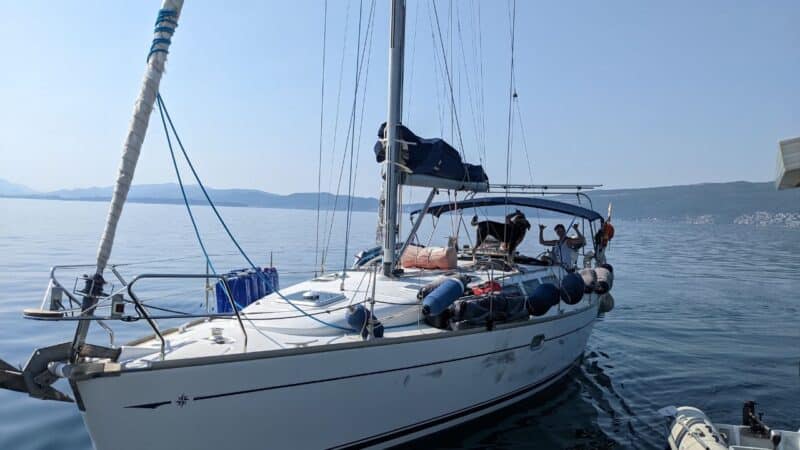
All in all, the cost of a sailboat can vary greatly depending on factors such as size, age, and whether it is purchased or built. It is important to thoroughly consider all financing options and ongoing expenses before making a commitment to purchase or build a sailboat.
Find out how much new sails cost as an example of something you might have to budget for when purchasing a new sailboat.
Ultimately, owning a sailboat can be a rewarding experience but careful planning is necessary for successful budgeting and enjoyment. If you’re looking for more sailing or liveaboard tips then follow us on social media to stay up to date with our latest articles.
Happy sailing!
Similar Posts
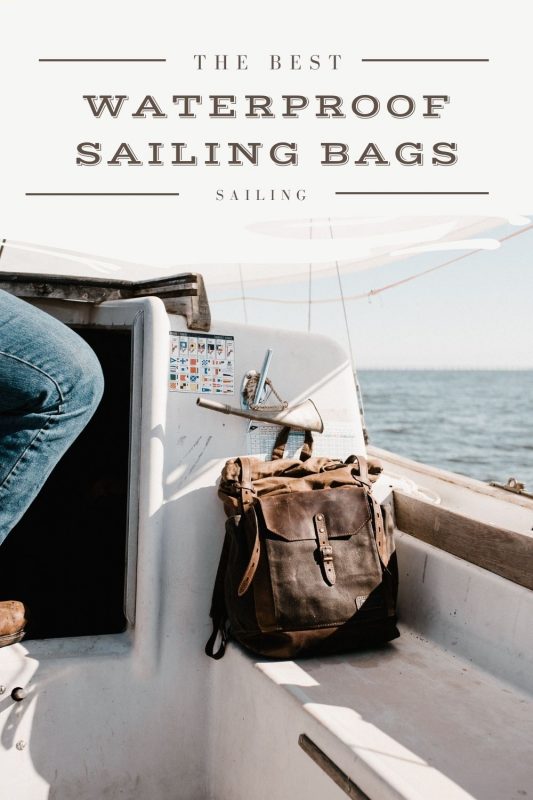
The 13 Best Sailing Bags 2024: Waterproof And Rugged Bags For Sailboats

The Best Lithium Marine Batteries For Your Boat 2024

What Is A Sailboat Mast?
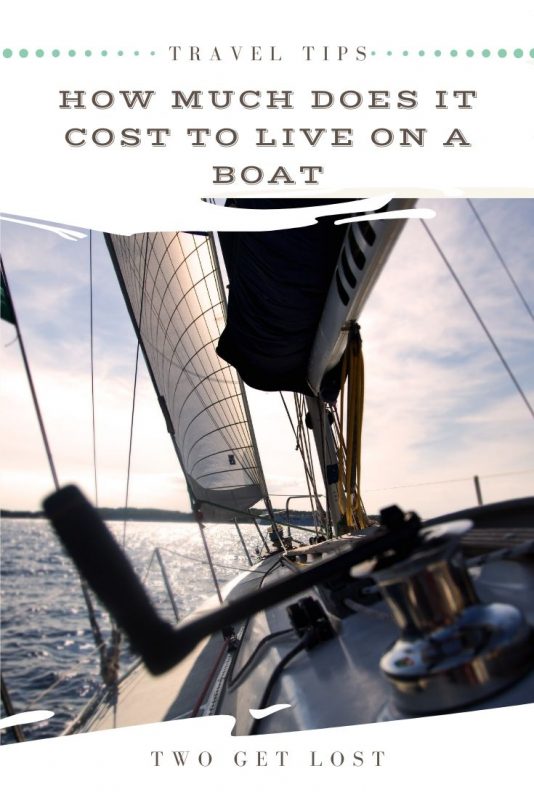
How Much Does It Really Cost To Live On Board A Sailboat?
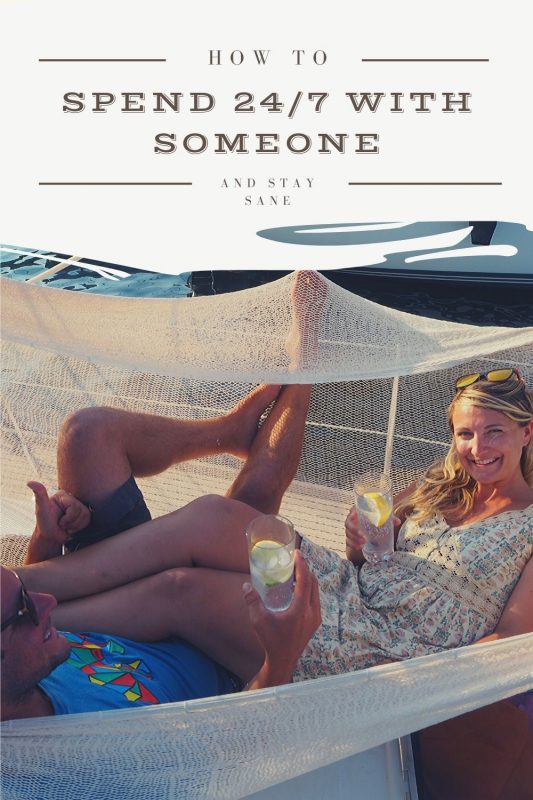
How To Cope With Spending Too Much Time With Your Partner

How To Start A Life At Sea
Average Sailboat Maintenance Costs (with 4 Examples)
A lot of new boat owners overlook the maintenance costs of sailboats - and maintenance can get pricey quickly. To save you from surprises, here's a full overview of costs you can expect when owning a sailboat.
What is the average sailboat maintenance cost? The average annual maintenance cost of sailboats is between $2,000 - $3,000. However, larger boats of 30 feet and up will cost considerably more. The actual total annual cost is $3,000 to $7,000, due to other recurring costs like docking and insurance fees.
However, what you'll actually pay really depends on the type of boat you have and what you do with it. Not all maintenance is as important. If you're on a budget, you can maintain your boat reasonably well for just $1,000 / year. I'll explain how below.
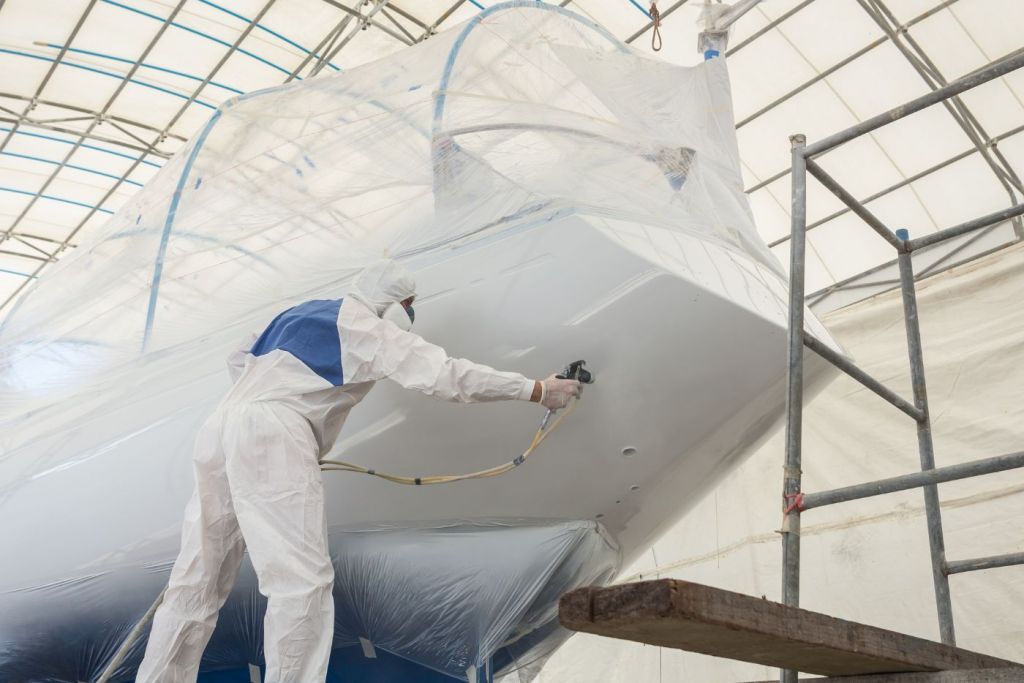
On this page:
Breakdown of yearly maintenance cost, different costs for four situations, seasonal maintenance, recurring longterm maintenance, incidental maintenance costs, other costs to keep in mind.
Let's start by getting a good overview of the different maintenance costs. Here's a full overview of all the recurring maintenance from most to least frequent. I'll explain each line item in detail later on.
The average maintenance cost will be roughly $255 dollars per month for boats under 30' or just under $3,000 per year.
| Maintenance item | Frequency | Cost |
|---|---|---|
| Winterizing | each fall | $500 |
| Dewinterizing | each spring | $100 |
| Bottom paint | 2 years | $500 |
| Batteries | 4-6 years | $600 |
| Running rigging | 5-10 years | $5,000 |
| Sails | 5-10 years | $2,000 - $5,000 |
| Standing rigging | 10 years | $4,000 |
| Safety equipment | 10 years | $500 |
| Engine | 20 years | $5,000 |
| Deck hardware | 20-30 years | $1,500 |
As you can see, most of these costs are longterm recurring maintenance costs. Some of these might not apply to your situation. Also, there are a lot of costs you can save on substantially if you do simple maintenance yourself or have a simple boat. Let me explain.
The total maintenance cost varies a lot, depending on the following factors:
- length of the boat
- saltwater or freshwater use
- racing, cruising, or liveaboard use
- sail area and rig type of the boat
Still, we want a general feel of what to expect. That's why I've calculated the average maintenance costs for four different types of boat below:
Maintenance cost for four boat types:
| Situation | What do you do? | Average cost |
|---|---|---|
| 40 ft bluewater cruiser | everything except winterizing | $3,225 |
| 24 ft daytripper | seasonal maintenance, hull, engine, rigging | $1,600 |
| 34 ft liveaboard | batteries, hull | $1,550 |
| 30 ft budget | only bare essentials | $275 |
Your specific maintenance cost will vary depending on what type of boat you have and how you'll use it. Below, I'll go over four different situations and explain what type of maintenance you'll most likely will and won't do, and what the price tag is for each situation.
24 ft Daytripper
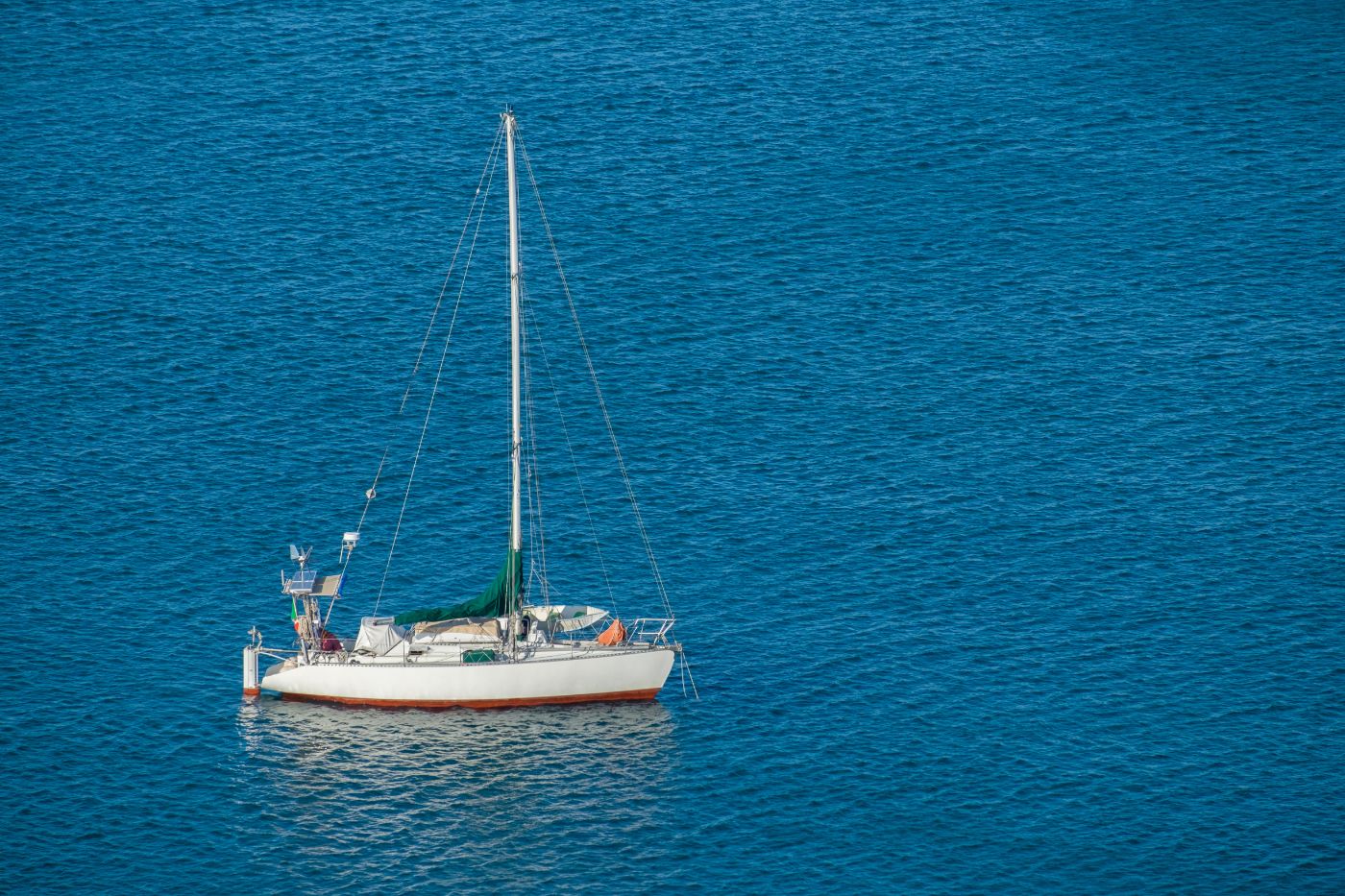
Most people starting out will get a smaller size boat and use it for day trips and weekend trips. These boats have less moving parts and less critical parts. It will be important to maintain a couple of parts, though:
- seasonal maintenance
With a first boat, you most likely won't invest in new sails or the standing rigging if you don't have to.
The total maintenance cost for a small daytripper will average around $1,600 per year or $133 per month.
| Maintenance item | Frequency | Cost |
|---|---|---|
| Winterizing | each fall | $50 |
| Dewinterizing | each spring | $50 |
| Bottom paint | 2 years | $500 |
| Batteries | 4-6 years | $600 |
| Running rigging | 10 years | $5,000 |
| Sails | 10 years | $4,000 |
| Standing rigging | 20 years | $4,000 |
| Safety equipment | 10 years | $500 |
30 ft Budget Sailboat
What would be the maintenance cost if you were on a tight budget? Well, for starters, I'd recommend doing most small maintenance yourself and ignore all non-essential. On sailboats, however, there aren't a lot of non-essential parts. But here are some things we could do out to save some big bucks:
- don't set aside money for long-term recurring maintenance (rigging, sails, hardware, and batteries)
- don't outsource engine maintenance, instead do oil changes ourselves
- antifoul less frequently (every 4 years)
- budget DIY winterization
Winterizing your boat yourself can cost you as little as $50 for antifreeze and an oil change afterward.
The total maintenance cost on a tight budget can get as low as $275 per year, or $23 per month.
| Maintenance item | Frequency | Cost |
|---|---|---|
| Winterizing | each fall | $50 |
| Dewinterizing | each spring | $50 |
| Bottom paint | 4 years | $500 |
| Safety equipment | 10 years | $500 |
34 ft Liveaboard
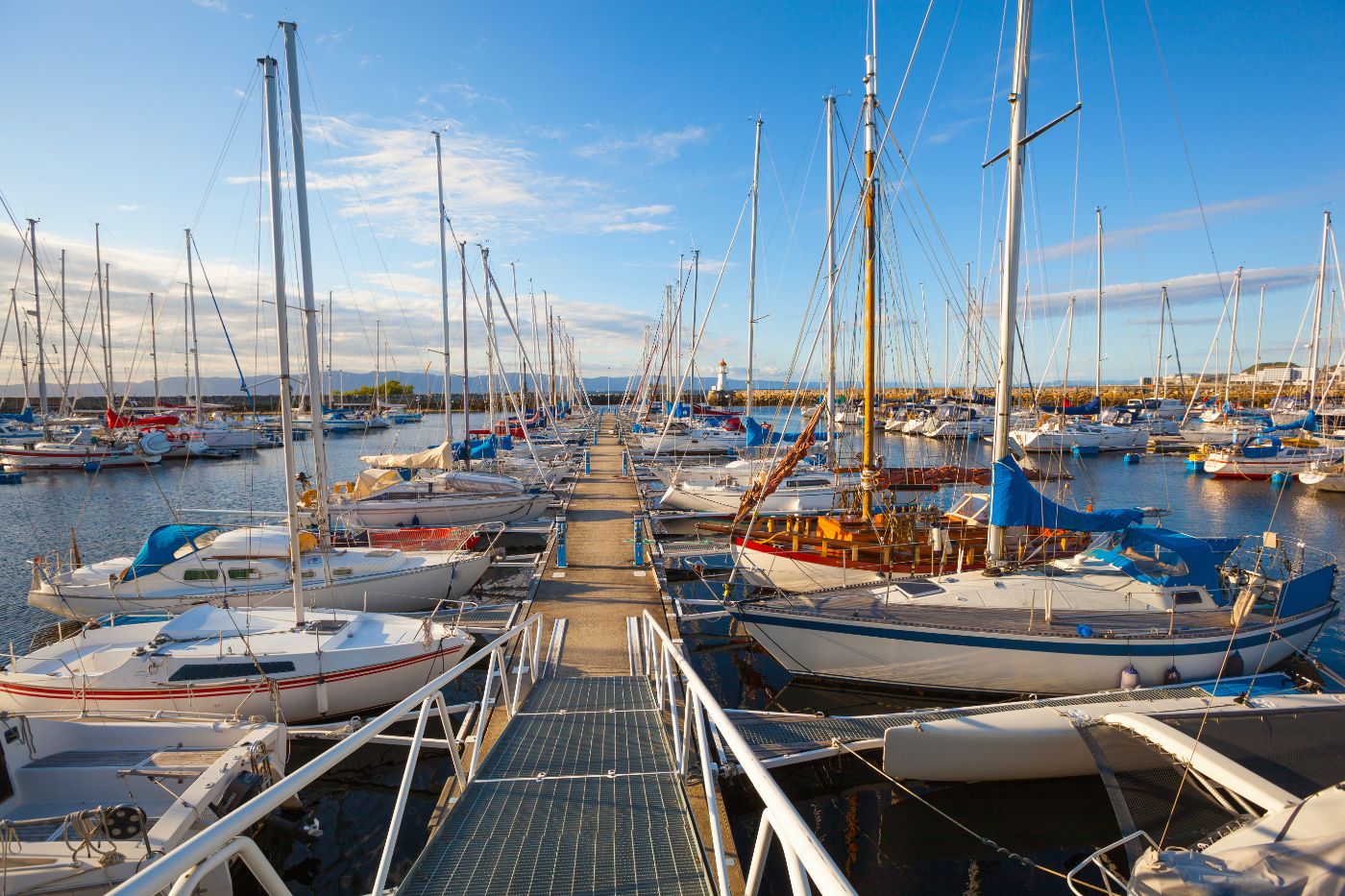
Liveaboards that don't really sail that much have less maintenance to do in one way, and more in another. The sails, rigging, and engine will be less critical if you won't take her out very often. Also, you'll have plenty of time doing odd jobs yourself, since you'll be living on the boat. On the other hand, it will be very important to maintain hull health, as even small leaks will lead to condensation and mold, which is horrible for your health and living standard.
Replacing electronics won't be very important - however, your batteries will need to be replaced more often.
Important maintenance:
- hull cleaning and painting
- replacing batteries
If you live on a boat in a location where it falls below freezing temperature (good luck!).
| Maintenance item | Frequency | Cost |
|---|---|---|
| Winterizing | each fall | $500 |
| Dewinterizing | each spring | $100 |
| Bottom paint | 2 years | $500 |
| Batteries | 4-6 years | $600 |
| Safety equipment | 10 years | $500 |
| Engine | 20 years | $5,000 |
The total maintenance cost for a liveaboard will average around $1,550 per year or $129 per month.
40 ft Bluewater Cruiser
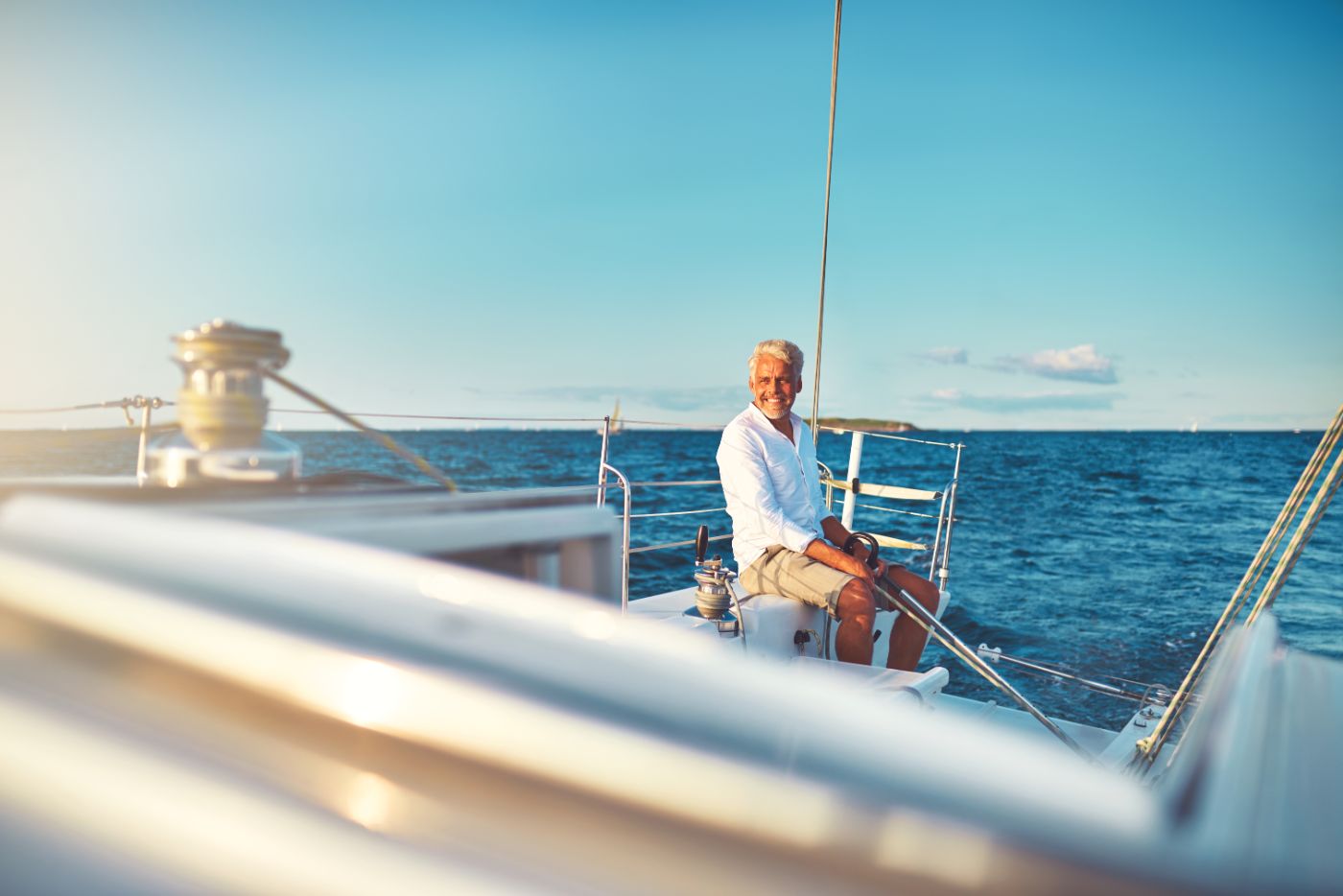
If you own a bluewater cruiser, your maintenance cost will go up a lot. Saltwater is a lot more corrosive, and the stress on your rigging and sails will be higher. Sun wear and constant use will wear down the sails and rigging even more. Your engine will wear out faster, and you'll need more incidental repairs as well.
The interval of longterm maintenance will increase dramatically in these conditions.
On top of that, maintaining your boat properly is critical. In marine environments, everything can go wrong exactly one time for it to be critical.
You want a reliable boat, which means you'll fix anything that needs fixing immediately.
Your sail area will most likely also be larger, which means your sail replacement will be more expensive.
One advantage is that you might not need to winterize if you're a fulltime cruiser since you'll probably spend your winters in Bermuda.
| Maintenance item | Frequency | Cost |
|---|---|---|
| Bottom paint | 2 years | $500 |
| Batteries | 4 years | $600 |
| Running rigging | 5 years | $5,000 |
| Sails | 5 years | $4,000 |
| Standing rigging | 10 years | $4,000 |
| Safety equipment | 10 years | $500 |
| Engine | 10 years | $5,000 |
| Deck hardware | 20 years | $1,500 |
The total maintenance cost for a bluewater cruiser will average around $3,225 per year or $269 per month.
There are three types of maintenance:
- seasonal maintenance - yearly recurring jobs
- long-term recurring maintenance
- incidental maintenance
Let's go over each type and break down which costs to expect exactly.
Winterizing
Winterization is an often-overlooked cost, but it can be one of the largest expenses each year. If you're like me, and not so lucky to live in Florida, you need to winterize your boat.
Failing to winterize it will increase your maintenance cost over time, as the engine wears out more quickly, and your plumbing and equipment will fall apart. Winter storms and ice can damage the hull and mast as well. Learn all about the dangers of failing to winterize here .
It's the best way to protect your boat in wintertime, period.
It consists of two parts:
- Winterizing - costs $500 to $1000 - This is the preparation for winter storage. You flush the cooling system with anti-freeze, and the boat gets wrapped in a shrink wrap cover.
- Winter storage - costs $50 per ft on average
Here's the full winterizing checklist
For dry storage, part of the process can be to shrink wrap your boat. Now, this is expensive, and it is hard on the environment. Some boaters don't shrink wrap in the winter because of it.
Here's the average cost to shrink wrap a boat
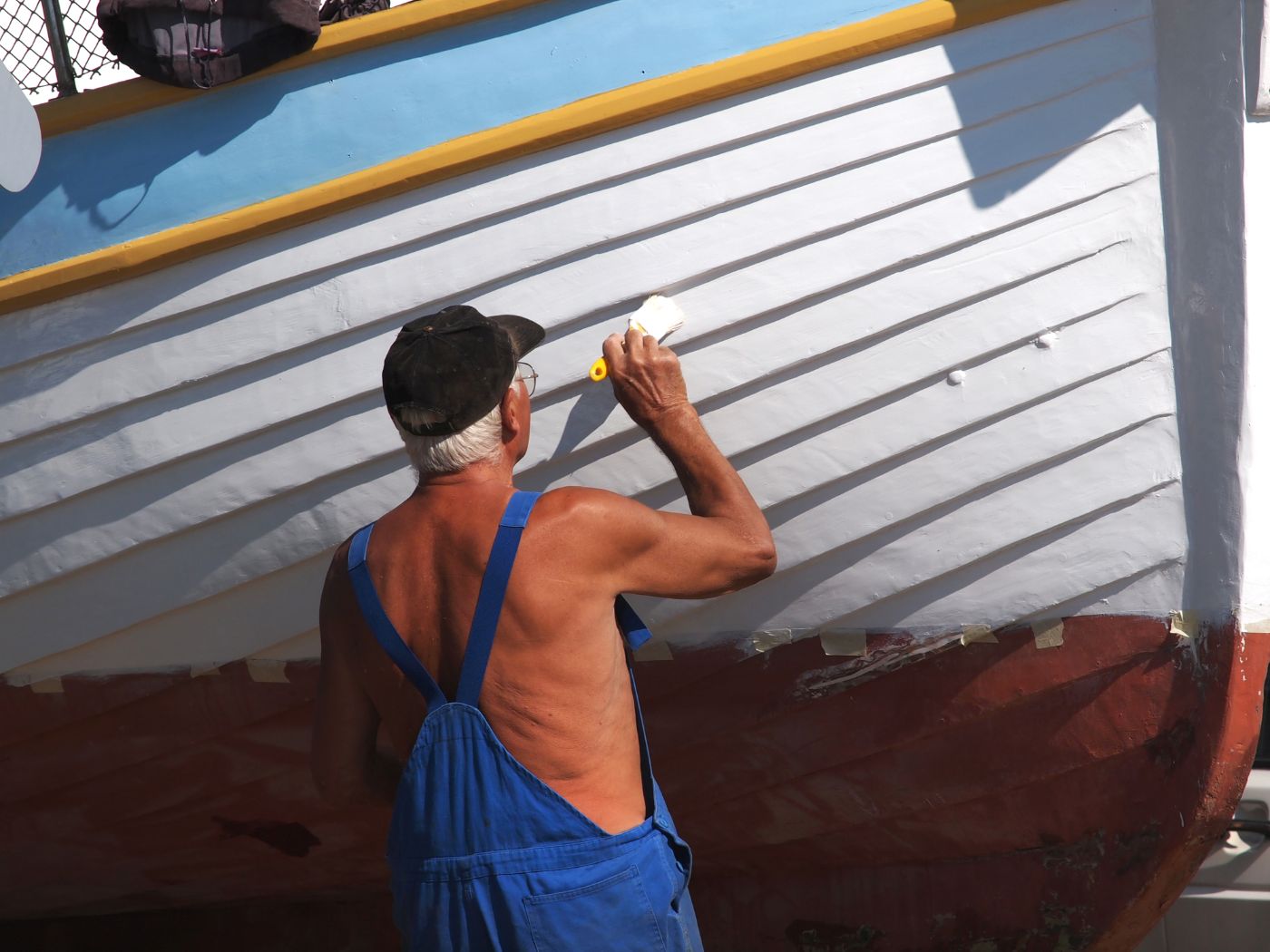
Antifouling
Your boat will need bottom paint roughly every 2 years (could be longer, but to be safe, let's keep it at two). It's also called antifouling paint because it helps to protect your hull from weeds, barnacles, and so on. Barnacles can slice through your boat's bellow! So you don't want them on there.
On average, it costs about $15 to $20 per foot to get your sailboat hull painted professionally.
For a 26' sailboat, that's just 500 bucks. Money well spent.
Read more on the cost of antifouling your boat
Batteries have a limited number of charge cycles. Deep cycle batteries (which are best for household functionality) need replacing every 4-6 years and will cost roughly $600. If you use your batteries extensively, they will most likely need replacing after 3-4 years, for example, for liveaboards or full-time cruisers.
Replacing the sails
Good quality cruising sails will need to be replaced every 10 years or so.
The cost of new sails is on average:
- 26' Bermuda Sloop rig will cost you about $1,000 - $2,500.
- 34' Bermuda Sloop rig will cost you about $3,000 - $5,000.
I won't go into detail, but I have written an in-depth article about the cost of new sails (opens in new tab). It's a really helpful post (with a formula) if you want to know what to expect.
Replacing the standing rigging
Most people that own a sailboat will have to replace the sails and rigging at least once in their lifetime. Replacing the mast is uncommon, but if you're unlucky and get demasted, it will need to be fixed. So I've added it to the "be aware this might happen" list - but won't add it to the monthly recurring costs.
Standing rigging are the cables that support the mast. Click here for a full walkthrough with diagrams.
If you need to replace the mast and boom, prepare to spend anywhere between $15,000 - $25,000.
The cost of replacing the standing rigging is, on average, $4,000 every 10 years.
Running rigging
The running rigging consists of all the lines, sheets, and so on that is used to haul and operate the sails. It wears with time due to UV exposure, flogging, strain from the wind, and regular use. In most cases, you'll only have to replace your running rigging every 5-10 years, but it will cost you $5,000 on average.
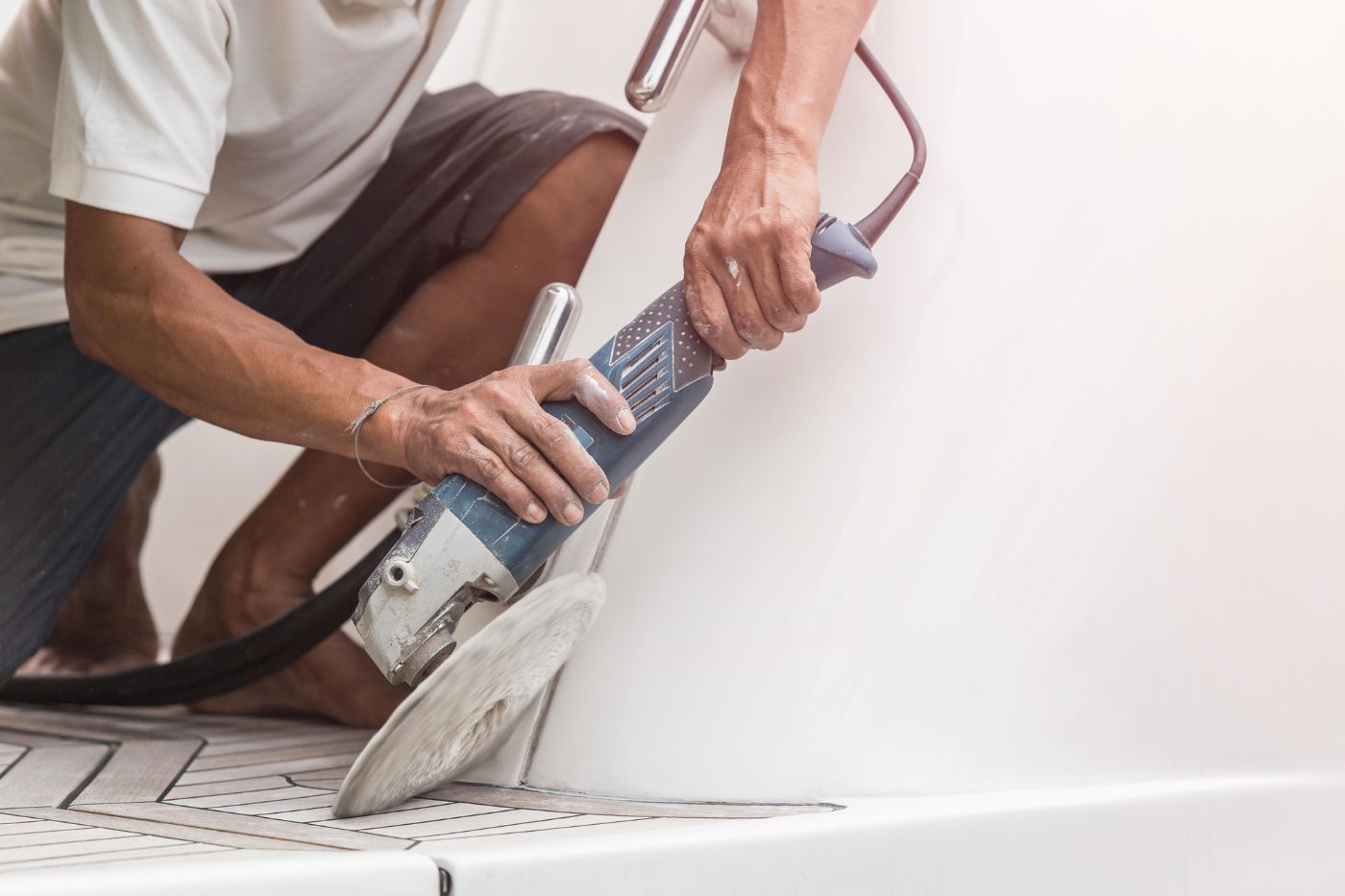
Deck Hardware
Deck hardware consists of the bullseyes, tiller , eye straps, cleats , and so on. All this small hardware needs to be replaced every 20-30 years and will amount to about $1,500.
Engine & Engine Parts
Gas engines run for about 1,500 hours, diesel engines run for 5,000. After that, you'll need to change them out.
Most engines will last you about 20 years, depending on the amount of use and whether you use it properly. Gas engine will last a lot less long than diesels.
A standard 15HP or 20HP outboard gas engine will cost you about $5,000 - $6,000 and needs replacing every 20 years or so. If you do the work yourself, it's more something like $1,000 - $1,500.
Read more on the lifetime expectancy of marine diesels here
Replacing the engine
- sailboats with inboard engine: $5,000 - $10,000
- sailboats with outboard engine: $1,000 - $1,500
- most powerboats (inboard engine): $15,000 - $35,000
- small outboard engines (2-5 hp): $1,000 - $1,500
- large outboard engines (100+ hp): $10,000+
- installation cost: $200 - $2,000
Installation Prices
The installation of the engine will cost a few hundred to a couple of thousand dollars. With inboard engines, this is not something you can easily do yourself - it isn't just unscrewing a motor and screwing a new one in.
The deciding factor of how much will this cost exactly is whether you can simply bolt the new engine in or whether you have to adjust all other parts, including shaft logs, exhausts, electrics, and so on.
Of course, if you have an outboard engine the installation price will be nothing more than a few drops of sweat, swearing, and back pain for a day or two.
Read more on boat engine replacement costs here.
Risers and Manifolds
- cost of 1 riser : $140 - $200
- cost of 1 exhaust manifold: $150 - $300
- cost of labor: $500 - $1,500
Most people need 2 risers + 2 exhaust manifolds. Parts total: $600 on average That's just what it is. Where you can really save some money, is on the labor. Labor total: $1,000 on average It's about a days worth of work. A professional needs roughly 8 hours to get the job done.
Read more about the cost of replacing risers and manifolds here.
Boat starter replacement
Inboard engine (and generator) starters cost from $40 - over $1,000 depending on the engine. Outboard starters run from about $100 - $500. Skilled marine technicians charge from $75 - $150 per hour. Your costs will range from a couple of hundred dollars for a small outboard up to over a thousand for a large or difficult to reach inboard.
That's a broad range, but if you know what you need for your boat, then you can get a better idea of the cost. The final price depends on two things - what type of engine you have, and how hard it is to get to the starter.
Read more on the average cost to replace a boat starter here.
Replacing safety equipment
USCG safety regulations require you to replace safety gear regularly.
- Lifejackets have to be replaced every 10 years.
- Flares have to be replaced every 42 months. You could consider buying a LED electric distress light instead, which will last you a lifetime.
- If you carry a life-raft you'll need to replace that every 12 years as well.
Adhering to the minimum safety requirements shouldn't cost you more than 150 - 250 dollars every 5 years. But if you want the good stuff, need more fire extinguishers, plan on spending more like $600. If you want a life raft, that's another $1,500.
To avoid you have to go cheap on your safety gear, I've put it in the budget for $500.
If you want to know exactly what the USCG safety requirements are, including checklists , definitely check out my article here.
- Hull repairs
- Electronics update
- Recovering a sunken boat
- Sailboat mast replacement
- Keel repairs
- Rudder repairs
- Replacing or refabricing boat cushions
One-time costs:
- Registration : costs of registration differ per state, but usually run anywhere from $3 - $10 per foot.
- Taxes : differs per state and country. Most governments want you to pay property tax and sales tax. Sales tax is usually about 5%. Property tax varies and is more complex, so I'll leave that up to you to figure out.
- Trailer : $1,000
- Sailing club initiation fee : $1,500 - $4,000
Recurring costs:
- Mooring : $10-15 per foot per year (can be much higher for prime locations)
- Insurance : typically 1.5% of the total value of the boat. So a $50,000 26' cruiser will cost 750 bucks.
- Maintenance : a good rule of thumb is 10% of the boat value. Expect to spend anywhere between $500 - $2,500 per year for small to mid-sized boats.
- Fuel : depends on how much you use the boat and the engine, but on average something between $100 - $150. - Find out how much fuel a sailboat uses in my article here (opens in new tab).
- International License : if you want to sail on international waters, you have to get your ICC (International Certificate of Competence ). Plan on spending anywhere between 400 to 500 dollars.
- Safety equipment : plan on spending anywhere between 150 to 600 bucks for lifejackets, first aid kit, and distress signals.
- Winterize boat : $2,000
- Sailing club: $800 - $1,500
Vonnie Harrington
Dear improvesailing.com webmaster, Your posts are always well-supported by facts and figures.
Tressa Valencia
To the improvesailing.com admin, Your posts are always well-referenced and credible.
Leave a comment
You may also like, how much sailboats cost on average (380+ prices compared).
Turns out that owning a sailboat is pretty affordable. OK, it isn't cheap, but it can absolutely be done on a budget. In this article, I'll show you exactly what to …
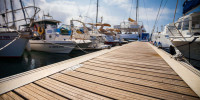
How Much Does it Cost to Dock a Boat for a Year?

How Much Do New Sails Cost?
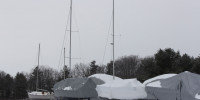
The Average Cost to Shrink Wrap a Boat (per foot)
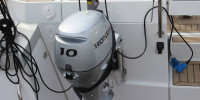
The Cost of a Boat Engine Replacement

How Much Does a Boat Cost in 2024? (With Ownership Costs)
Residents all across the US are buying more boats than ever before. From kayaks and canoes to the most luxurious and opulent yachts, manufacturers are struggling to keep up. But with so many potential buyers being first-timers, the question will inevitably come up, “roughly how much does a boat cost?”
How Much Does a Boat Cost?
What determines boat price, renting vs. buying a boat, cost of owning a boat, total cost of boat ownership.
An average 20’ boat used can often be found for between $10,000 and $20,000. The same boat bought new would likely be $40,000 to $60,000. One of the biggest factors that will impact the price is the style of the boat, with the length of the boat figuring heavily as well.
Buying used boats will always save you money getting the boat into your hands initially, but they will almost always cost more in maintenance and repairs during the term of ownership.
All boats, though, will require maintenance and additional costs associated with ownership. Below is a quick rundown of common boat types and what they can be found for new and used where applicable.
| Boat Type | Common uses | Size | Used Price | New Price | Popular Model |
| Bowrider boats | Watersports, cruising, fishing | Under 20’ | $10,000-$25,000 | $15,000-$30,000 | |
| Pontoon Boats | Leisure, fishing | 18’-25’ | $8,000-$12,000 | $19,000-$65,000 | |
| Fishing Boats | Fishing | 16’-25’ | $5,000-$10,000 | $30,000+ | |
| Cabin Cruisers | Cruising, leisure | 25’-45’ | $100,000 | $250,000+ | |
| Speedboats | Watersports | 20’-30’ | $20,000 | $30,000+ | |
| Cuddy Cabins | Cruising | 18’-28’ | $20,000-$30,000 | $50,000 | |
| Sailboats | Cruising, leisure | 30’-35’ | $20,000 | $80,000+ | |
| Yachts | Leisure, cruising | 30’-100’+ | $150,000 | $250,000+ |
There are several factors that will affect the cost of a boat. Firstly you will need to determine what type of boat you are buying after which it will be a choice between buying used or new. Each will have its own benefits and drawbacks, both short and long term.
The boat price range will also depend on the time of year during which you buy. The same boat, priced at off-season and during full-swing boating season, may have a price that differs by 5%-15%. This can mean a difference of thousands, depending on what type of boat is being shopped.
Other factors that influence the pricing for boats will be the age, the features, the condition, and whether it is being bought from a dealer or a private party. All other things being equal, a boat will generally be cheaper when bought from a private party than from any sort of dealer or marina.
Used vs. New Boats
Many first-time boat buyers find themselves wondering if they should buy a new boat or a used boat. There are several benefits as well as drawbacks for both. Depending on your time and resources, there may be a clear-cut best choice for you, or you may still have to do some thinking.
While the used boat market will definitely save you money initially, which can be incredibly powerful when shopping, you may ultimately find that the boat maintenance cost that you experience is more than initially expected.
This will fluctuate in accordance with the level of care that the previous owner or owners maintained. If you are more budget-conscious, however, a used boat may be best since you can save later by doing your own repairs.
If you have more money than time or patience, the new boat cost may not be that offputting, since it may ultimately mean less repair cost and shop time during the term of ownership. Bear in mind, however, that buying a new boat will not relieve you of routine maintenance like oil changes.
Size and Style
Just like with other vehicles, boats come in different sizes and styles , which affects the boat price. If you are looking for a fishing boat, expect to spend more than a canoe. If you really like the 24’ model over the 22’ model, understand that your sticker price will likely be higher for a base model.
Before you make any final decisions about the size and style of boat you are going to start shopping for, make sure you think hard about how it will be used in the future.
If you plan to take a lot of guests out, make sure you have the capacity for that. If you will only ever take out a maximum of 3 or 4 people, there’s no need to spend a robust sum on something that has 8 seats, when a medium-sized boat will suffice.
Always remember not to buy beyond your experience level. If you are a new boat owner, ideal boats are most likely going to be 15’ to 18’ in length and have a modest engine.
If you get a boat that you aren’t ready to operate in the hopes that you’ll “grow into it” you can be putting yourself in a dangerous situation. Bigger boats also mean increased boat mooring costs.
One of the things that will have the biggest impact on the price of a boat is the feature set that it is equipped with. Boats can have a surprising amount of features, upgrades, and tech gadgets that can add significantly to the cost.
Some of the features that affect the average boat price include cutting-edge chartplotters, built-in media systems, specialty (often LED) lighting, battery chargers and maintainers, swim or diving platforms, hydraulic steering , autopilot functionality, and GPS position holding.
Higher-end boats may even feature additional comfort or even luxury features that greatly increase the boat cost.
This can include things like joystick steering controls, vacuum head systems, custom flooring, countertops, or finishes, satellite weather systems, and even climate-controlled cockpits and cabins.
In many areas, particularly those that incorporate leisure watersports or sport fishing, rental boats may be available. This can be very convenient for those who do not own a boat and can allow you to get out on the water with only the most minimal investment in boat costs.
Some of the upsides to renting a boat include never having to worry about the costs of owning a boat or the time investment of maintenance that the boat will require. This is the perfect option for those who may only get out on the water a couple of times per year, and it removes the burden of off-season storage.
There are some downsides to renting, however. With rentals, don’t have to pay for the cost of boat ownership, but you may not be guaranteed to get the boat that you want, even with reservations. You also generally rent very basic boats that are limited in range and ability. Some rental locations also do not allow nighttime navigation, which can be restrictive.
Boating costs $1,000 to $6,000 in expenses yearly, on average. The costs of owning a boat don’t end with the price of the boat and the first tank of gas. There are significant costs associated with owning a boat, some are costs like taxes and registration that you would have on any vehicle, and some are going to be unique to boating.
If you don’t plan ahead for a lot of the boat ownership costs it can end up costing you more in the long run. Some of the additional things that many beginners don’t think about include:
- Boat fuel cost
- Marina costs
- Boat launch fees
- Seasonal maintenance
- Boat repair costs
- Seasonal storage
- Transportation, in the case of some larger boats
Boater education is incredibly important for the safety and enjoyment of your boating experience. Taking a formal boater education course ensures that you have the foundational knowledge needed to safely and effectively operate your boat. It can also save you a bit on your boat insurance.
Too many first-time boat owners assume that if they buy the boat and are exempt or not required to have a license, that they can just go out and boat.
Many states do not require boater education, but there are also many that do, and if you test and get certified by a NASBLA body, you can use the certificate anywhere.
Requirement : Essential for safe operation Frequency : One time Cost : <$100-$500
Just like your other vehicles, you’ll need to register or license your boat . The fees and process will vary greatly by state, but the fees range from around $20 up to over $200. They will often be determined by the type of vessel and its length, as well as the length of time that the boat is registered for.
Once registered, you will receive some type of registration proof to keep with your vessel. You will also be assigned a registration number that you will need to affix to the bow of your boat with reflective stickers.
Requirement : Required for all powered boats Frequency : Varies by location, from yearly up to lifetime Cost : $20 to $200
Just like everything else in life you will need to pay taxes on your boat. The severity of this tax obligation will depend heavily on where you live. The feds won’t take a cut, but you will need to pay the state as well as any local taxes owed.
The sales tax will only be paid once, and that will happen at the point of sale. The other types of tax that may apply are a use tax, if you somehow avoided paying sales tax, this will be paid to the jurisdiction where the boat is most often used. The personal property tax is the one that will hit you every year, just like any other vehicle.
Requirement : Mandatory for all boats Frequency : Yearly Cost : Varies by location
Maintenance Cost
All boats will need maintenance , which should be expected as part of the cost of owning a boat, regardless of the size or type. However, maintenance costs are one of the costs that can be largely avoided by renting.
If you own your own boat, you will need to plan for maintenance items to be taken care of before and after each outing, some maintenance that will only need to be done a few times per year if you are really active boaters, and some maintenance that is only going to be needed on a seasonal basis.
You will need fresh water flushes, oil changes, steering system inspections and maintenance, deck and seat cleaning and maintenance, hull inspections, propeller inspection and replacement, potential anchor replacement, and more.
Good operation and preventative measures can minimize abnormal maintenance costs.
Requirement : Required on all boats Frequency : Routine and seasonal Cost : $1,000-$6,000
Fuel cost is something that can creep up on you if you don’t stay aware of your boat’s fuel situation. Operating a boat uses fuel, just like any other vehicle. The fuel cost for your boat will be measured in a similar fashion to your car or truck.
Some small, single-person boats can keep an angler on the water all day on just 1-2 gallons of gas or less. Small rental fishing boats may have a 5-gallon tank which is more than enough for them, while the same amount of gas in a boat meant for towing waterskiers or tubes will burn that gas much faster.
Estimate your fuel cost ahead of time by making sure that you are familiar with the consumption rate of your boat. You can also save gas by keeping the revs lower and learning how to properly adjust your trim. Fuel costs may be included in your monthly marina cost as well if you lease space with one.
Requirement : Required in all powered boats Frequency : As needed Cost : Current gasoline market value, plus oil depending on the engine
Boat Trailer and Tow Vehicle
When you own a boat, unless it’s a relatively large boat that cannot be transported personally, you will need a vehicle to tow it and a trailer to put it on. These are essential for nearly all boat owners, though many will not buy a boat if they have to way to move it.
Your trailer must be capable of carrying the weight of the boat and any other cargo on the boat at the time of loading. Trailers must also be frequently inspected to ensure safety and functionality, and in most states, your trailer must be registered just as any vehicle, which can be its own annual expense.
Requirement : Required for all powered boats Frequency : Once Cost : Varies, some boats include, otherwise avg. $3,000
Requirement : Requirement Frequency : Once Cost : N/A
Boat Insurance
When you own a boat you need to protect it, and that means taking out an insurance policy on it. This ensures that if something were to happen to the craft that it would be covered. It is generally illegal to operate a boat without current insurance on it.
Getting insurance on a boat can be a relatively cheap task, particularly if you’ve taken the time to finish a boater safety course and obtain your safety certificate. Most insurance policies for boats will only cost between $20 and $50 per month for average vessels.
Insurance is also vital protection in the event that someone else is injured on your boat. Without insurance, you could face personal liability in the event that something were to happen while passengers were aboard.
Requirement : Required Frequency : Monthly/Quarterly/Yearly Cost : $20-$50 per month
Winter Storage
In most areas, the boating season is only so long and when the weather starts to get cooler it’s often seen as the time to get the boat ready for storage. In many cases with smaller boats, they can be easily over-wintered in the owner’s garage if proper precautions are taken.
Boat owners can also rent an off-season storage space in a facility that will keep them secure and tended. Boats have batteries that must be maintained with charging, and unattended boats are the perfect place for pests and vermin to start to gather.
Having someone manage that for you can take a lot of stress and clutter out of your garage or storage unit. Indoor storage is often more than $50 per square foot of space needed, while outdoor storage can run about half of that.
Requirement : Required in all but equatorial regions Frequency : Yearly Cost : $525-$200 per square foot
Mooring and Marina Fees
This is essential for those who live in areas where you will be boating often and will not want to trailer your boat from storage to the launch each time. If there is a marina nearby, you can often rent or lease a boat slip to park your boat in during the season.
They frequently charge by the size of the boat and the amenities requested, like charging or freshwater supply. Not only do they allow you to keep your boat ready to go out at a moment’s notice, but they often are well-secured and safer than other storage locations.
Requirement : Optional Frequency : Monthly/Yearly Cost : $50-$1,000 per month
Equipment and Accessories
When planning to buy a boat, safety gear should always be considered part of the overall purchase cost.
Paddles, life jackets, signal flares, a horn, and many other things are important to have onboard before you hit the water in your boat for the first time.
In fact, there are some items that are required for you to have at all times.
Required safety equipment:
- Fire extinguishers
- Life jackets and wearable personal floatation devices
- Throwable flotation devices
- Visual signaling devices
- Sound signaling devices
Additional accessories, like lighting, watersports equipment, and stereos are a fun addition to your boating experience, although they aren’t required. If your equipment budget is limited for now, you can always purchase the necessities and add exciting upgrades as you are able to.
Requirement : Some safety equipment is required Frequency : As needed Cost : $500
As you can see, there is a lot more to boat ownership than just buying a boat. The first-time boat buyer, buying a new boat with a trailer for a modest $15,000, and towing it with their existing vehicle, can still expect to spend more than an additional $5,400 the first year alone, expecting minimal maintenance on a new boat.
Buying a used boat may save you on the initial purchase price, but depending on how the last owner treated her you may be in for a lot of shop time.
If you are not a first-time boat owner and you’re looking to try and estimate your yearly ownership costs on a bigger, more expensive boat, there are a few ways you can ballpark that estimate. The most popular is a yearly cost of ten percent of the purchase price, before adding in seasonal storage, which can easily double that number.
Boat price: $15,000 Education: $100 Licenses: $100 Taxes: $30 Maintenance: $1,500 Fuel: $200 Trailer: $0 Towing vehicle: $0 Insurance: $300 Winter storage: $2,500 Mooring: $240 Equipment: $500
How much does a boat cost per month?
If your annual boat maintenance costs you $2,400, for example, that would make your monthly burden about $500.
How much does a boat cost to rent?
You can frequently rent a simple fishing boat for around $400 per 8 hour day, while a pontoon boat may run twice as much, plus fuel.
How much does it cost to dock a boat?
If you rent a boat slip from a marina, you can expect to pay between $100 and $1,000 per month, depending on your boat.
How much does it cost to maintain a boat?
Your maintenance costs will vary depending on boat use, but it will be a significant portion of the yearly cost of ownership.
How much does it cost to own a boat?
The average cost of boat ownership for most fishing or pleasure crafts will be between $1,000 and $6,000 per year.
How much does it cost to own a yacht?
Plan on a yearly cost of around 10% of the value of the boat, so a $10 million dollar yacht will cost about one million per year.
How much does a used boat cost?
Some used boats can be on your trailer heading home with you for a couple of hundred bucks, some others a couple of thousand.
How much does a big boat cost?
Some of the biggest private boats, like large yachts, can cost more than $1,000,000 for every foot of total boat length.
How much does a small boat cost?
Small boats, like jon boats or small bass boats, may only cost a few hundred if bought used on the private market.
How much does a new boat cost?
This will depend greatly on what type of boat you want and what it’s going to be for, the basic boats start around $1,000.
How much does a riverboat cost?
Depending on what you’re looking for in your riverboat you may be able to pay as little as $12,000, though they do go for $40,000 or more in some cases.
How much does a speed boat cost?
A speedboat can frequently be found used for around $30,000 without a cabin. Larger or more powerful boats may have a cockpit.
How much does a motorboat cost?
A run-of-the-mill motorboat will cost you, on average, between $10,000 and $20,000 with more extravagant models going for much more.
How much does a cabin cruiser cost?
The average mid-range cabin cruisers will cost about $250,000 and budget models at about half that amount.
How much does a fishing boat cost?
Fishing boats can commonly be found for around $10,000, increasing significantly with features and options.
How much does a ski boat cost?
The average ski boat will set you back about $150,000, for a common and relatively basic model with average features.
How much does a sailboat cost?
Sailboats range quite a bit in their price, being found on the used market for $20,000 while new ones can cost $80,000 or more.
How much does a yacht cost?
Some basic yachts can be found for $250,000, though most new luxury yachts will cost up to $1 million per foot in length.
How much does a bass boat cost?
Bass boats can range in cost greatly, from budget models starting around $10,000 to high-end tournament fishing boats for $70,000.
How much does a bay boat cost?
If you are looking for a bay boat, you can reasonably expect to pay at least $10,000 for a relatively capable craft.
How much does a bowrider cost?
Some of the more basic bowrider boats will cost $15,000 new, with longer boats or more feature-dense crafts reaching $50,000 or more.
How much does a center console boat cost?
Used center console boats are available on the private market for around $10,000, while premium models and features can cost tens of thousands more.
How much does a convertible boat cost?
New convertible boats can be obtained for as little as $14,000-$15,000, while some models and options packages will push the price well over $50,000.
How much does a power cruiser cost?
The market for power cruisers isn’t cheapest by any means, and a new power cruiser will often be around $100,000 for a relatively basic vessel.
How much does a cuddy cabin cost?
Even the most basic cuddy cabin bought new will cost around $50,000, with options and features boosting the price from there.
How much does a deck boat cost?
Buying a new deck boat will cost you at least $20,000 for basic models, with more powerful or extravagant models pushing $60,000 and more.
How much does a flat boat cost?
Most flats boats can be found for around $25,000-$30,000 from major names, with some being under $10,000.
How much does a high-performance powerboat cost?
New performance powerboats have an average price of around $80,000, however, the average used boat prices are far lower and hover around $30,000.
How much does a house boat cost?
The average cost of a houseboat is usually around $50,000, but you should double-check the marina policies to ensure houseboats don’t incur larger docking costs.
How much does an inflatable boat cost?
For more robust inflatable boats, the average cost is going to be about $1,000, with a range of a few hundred dollars to either side, usually.
How much does a jon boat cost?
If you like cheap boats, a jon boat is perfect and you can usually buy one used for around $500, with brand new boats going for around $1,000 or more.
How much does a pontoon boat cost?
If you are looking for brand new boats, the average boat cost for a pontoon boat will be between $18,000 and $50,000 in most cases.
How much does a catamaran cost?
If you’re looking for a catamaran the average cost of a boat that has been used is around $35,000, and upwards of a million for more serious crafts bought new.
How much does a runabout boat cost?
Runabout boats are incredibly popular and they can start at around $12,000 for a basic starter and up to $80,000 for more opulent crafts.
How much does a trawler boat cost?
Lots of people considering buying a new boat are looking into trawler-type boats and even used they can cost around $13,000.
How much does a walkaround boat cost?
If you are in the market for a walkaround boat, you can plan to spend about $8,000 for a used one on the open market.

Robert Owens is the Chief of Content of Quicknav. Robert has been boating for over ten years and loves to share his experience on the water. His first boat was a dirt-cheap moderately beat up 2003 Bayliner 175, where he learned a tremendous amount about trailering, launching, docking, operating, and maintaining. He currently owns a Cruiser Yacht and is eyeing a sailboat.
Similar Posts
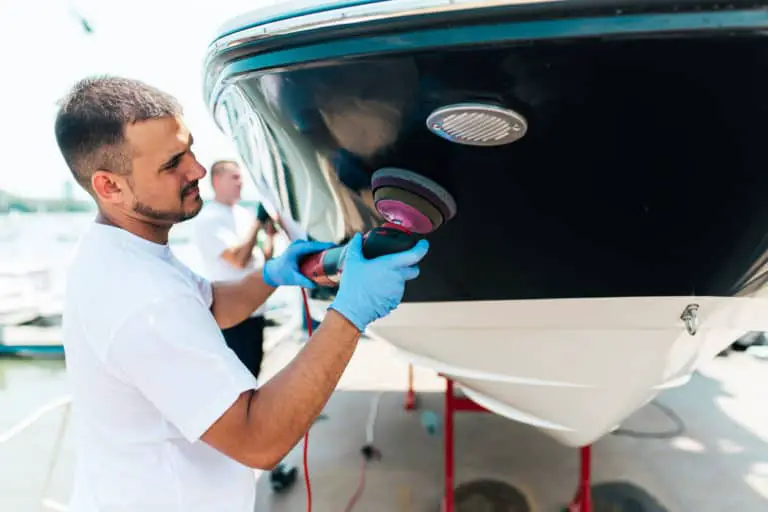
Boat Maintenance: The Definitive Guide (2024)
Many new boat owners are a little intimidated by the thought of the boat maintenance that they need to do….
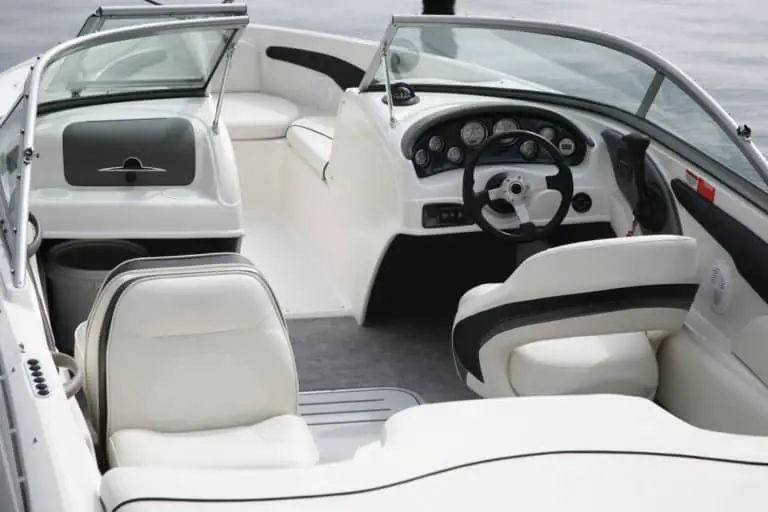
How to Clean Boat Seats? (a Practical Guide)
So you’ve bought your first boat and while you think you can master most of it with ease, you keep…

How to Get a Marine Radio Operator Permit in 2024?
Obtaining your marine radio operator permit from the FCC is only a necessity under certain circumstances (1), but they allow…
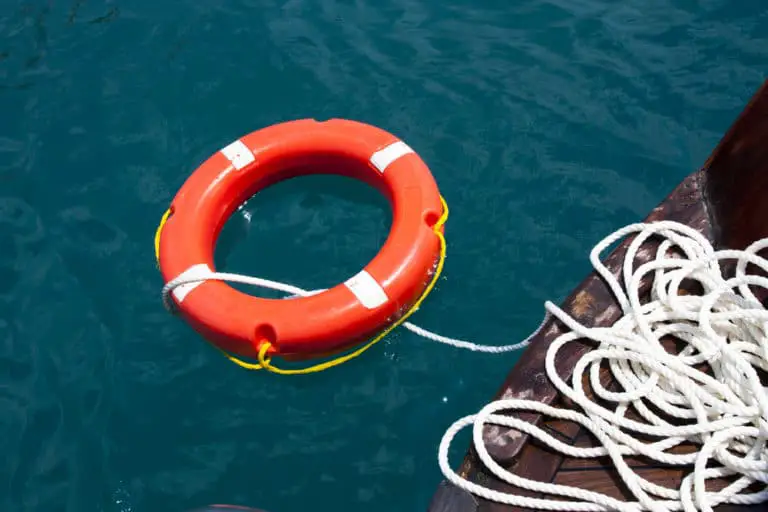
8 Best Online Boating Safety Courses (2024)
Boating can be one of the most enjoyable pastimes, but it can also be deadly. Being familiar with all aspects…
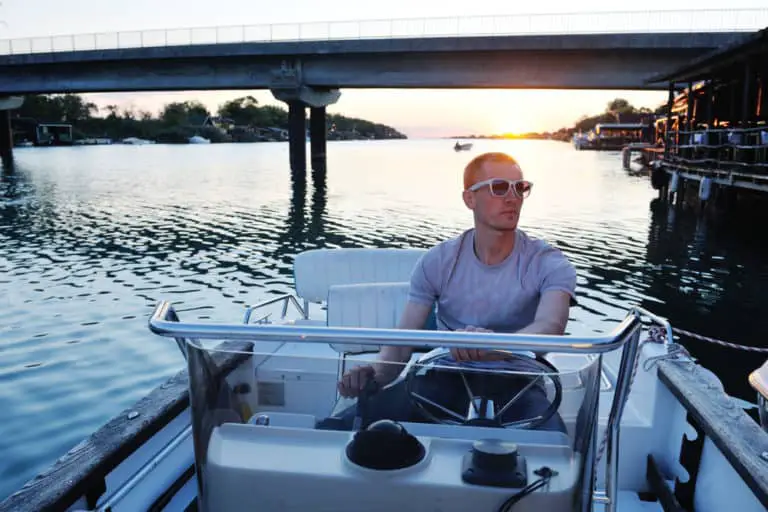
12 Practical Tips to Learn Boating Fast (2024)
For someone who wants to learn boating, it can be a bit intimidating looking from the outside in. You might…
![cost of owning a 30 foot sailboat 15 Tips for Boating at Night [for Safety & Navigation]](https://quicknav.com/wp-content/uploads/2021/09/Depositphotos_272396036_s-2019-768x510.jpg)
15 Tips for Boating at Night [for Safety & Navigation]
As a new boat owner, one of the activities you may be most excited about is your opportunity to experience…
Visit our Popular Forums
- Monohull Sailboats
- Multihull Sailboats
- Powered Boats
- General Sailing
- Antares Yachts
- Fountaine Pajot
- Lagoon Catamarans
Cruising Business
- Boat Classifieds
- General Classifieds
- Crew Positions
- Commercial Posts
- Vendor Spotlight
Life Aboard a Boat
- Provisioning: Food & Drink
- Families, Kids, & Pets Afloat
- Recreation, Entertainment, & Fun
- Boat Ownership & Making a Living
- Liveaboard's Forum
Seamanship, Navigation & Boat Handling
- Seamanship & Boat Handling
- Training, Licensing, & Certification
- Health, Safety, & Related Gear
- Rules of the Road, Regulations, & Red Tape
Engineering & Systems
- Const. / Maint. / Refit
- Product / Service Reviews
- Electronics: Comms / AV
- Electrical: Batts / Gen / Solar
- Lithium Power Systems
- Engines & Propulsion
- Propellers & Drive Systems
- Plumbing / Fixtures
- Deck Hdw: Rigging / Sails
- Aux. Equipment & Dinghy
- Anchoring & Mooring
Photo Categories
- Member Galleries
- Life Onboard
- Sailing in the Wind
- Power Boats
- Cruising Destinations
- Maint. & Boat Building
- Marine Life
- Scuba Diving & Divers
- General Photos
Recent Photos

Listing Categories
- African Cats
- view more »
- Crew Wanted
- Crew Available
- Enhance Your Account
- Meet the Mods
- Meet the Advisors
- Signup for The Daily Cruiser Email







IMAGES
COMMENTS
What Does it Cost to Buy a Sailboat? The average price of a new sailboat per foot in USD: under 30 ft: $2,400 per ft. 30 - 50 ft: $5,700 - $8,500 per ft. over 50 ft: $11,900 - $65,400 per ft. On average, second-hand sailboats go at 1/3 - 1/4 of the cost of a new boat: under 30 ft: $815 per ft. 30 - 50 ft: $3,020 per ft.
The price of owning a sailboat may vary depending on several factors such as the size of the sailboat, its model, whether it's new or used, and how often you use the sailboat. For example, a new Islander 36' can cost nearly $150,000 while a used one can cost you around $40,000. Again, the price of a new 26' Catalina can cost you around $80,000 ...
The average price of used sailboats under 30 ft on Craigslist has gone up 30% (from $8,500 to $11,000). Sailboat prices research archive. ... So let's take a quick look at the costs for owning a sailboat. One-time costs: Registration: costs of registration differ per state, but usually run anywhere from $3 ...
30-34ft: $183,000: $66,000: 35-39ft: $251,000: $111,000: 40-44ft: $326,000: $150,000: 45-49ft: ... Docking at $25/ft $ 0. Insurance at 1.5% $ 0. Taxes varies ... If you want to read a more in-depth exploration of sailboat ownership costs, I recommend you read our guide. Also read: How Much Sailboats Cost On Average (380+ Prices Compared) We ...
The boat cost of ownership calculator includes a boat loan calculator, estimates boat financing, boat insurance average cost, boat maintenance and docking costs. Home Explore boats Sign Up Log In Help Add Boat. Text +1 910-447-2456. Call +1 910-447-2456. Toggle navigation. Sailo logo icon Sailo logo text. Explore boats; Sign Up ...
Mooring is going to cost you plenty. Fortunately, it's a fixed cost from year to year, and that makes it easy to plan for. Decide where you'd like to be based, get a quote, and do the math. But don't forget to include off-season hauling and storage costs, if you live in an area where boats come out of the water during the winter months.
The Cost of Owning a Boat: Budgeting and Financial Planning. ... Diesel engines - 20 to 30 years; Electrical - 20 to 30 years; Exterior vinyls and upholstery - Five to 10 years ... Five Affordable Trawlers Under 40 Feet. 3. What Hull Shape is Best? 4. Best Boat Brands. 5. What Type is Right for You? Top 10 Choices for Boaters
A class-legal sail for a small dinghy like a Laser cost $600-$700, but you can buy a practice sail you can't race with for a fraction of that. A carbon fiber load-path laminate sail for a forty-foot race boat can run $5,000 to $8,000. Sail prices increase rapidly with size.
Owning versus renting. The cost of sailboat ownership can sometimes be 20% or more of the initial purchase price. So, for a $100,000 sailboat, expect to spend another $20,000 annually for its management. Another way to go boating is to charter or rent. You enjoy sailing for a week or day at a time at much-reduced costs.
Dock lines ($30 to $100 each) - Sized to your boat, four to six lines required. Fenders (also called bumpers) - To protect the boat from the dock ($20 to $60 each) sized to your boat, two to four required. Launch fees - Usually charged at most public ramps, and varies at about $5 to $15 per launch.
The cost of a small boat, 6-10 feet, can cost anywhere from $500 to $800. If you're looking for brand-name superyachts, prepare to spend millions of dollars from the start. Style: If you care much about the style of your boat, recognize that the most stylish ones will cost more. Higher-end boats will cost more than less elegant ones.
You can expect that a $20,000 boat will cost between $2,656 - $3,000 dollars a year or more in ongoing expenses. These boat ownership costs include maintenance, insurance, registration fees, docking fees, and gear necessary for the operation and safety of the vessel and its passengers.
Related Posts: Guide to Boat Buying Live Seminar Fri, Oct 11 - Don't miss out on the exclusive opportunity to learn from seasoned sailors, Jamie and Behan Gifford, at this live seminar during the 2024 Annapolis Sailboat Show. Discover the secrets of circumnavigation so that you can sail away from coastal confines and embark on the… Captain Stefan Yacht Charters & Sailing School St Petersburg ...
For example, a 22-foot sailboat may be close to $30,000 brand new, ... Considering all these additional expenses, the true annual cost of owning a sailboat can range from $3,000 to $7,000 ... For larger boats of 30 feet and up, these costs can increase significantly, potentially reaching $7,000 or more when considering additional expenses like ...
A 10-year-old J/105, a more capable sailboat, is right around $70,000. Not surprising, the age of the boat has as much to do with the asking price as its condition and how well it is equipped. A 1977 Catalina 30 can be purchased for $15,000, while a five-year-newer boat is listed for $25,000. A Catalina 30 built in 1993 is asking $29,000.
The average price of used sailboats is around $21,000, but new boats cost $60,000 on average and upwards. Some used boats can be purchased for less than $10,000, depending on their age, size, and condition. This is because pre-owned sailboats have about 80 percent of the market share. You will find models from the early 1960s still racing ...
Fact #5: Add a bowsprit and a bumpkin to your 30-foot sailboat and the marina will now charge you for a 40-footer. Having got those out of the way, and before analysing a 'real-life' example based on a 36-foot cruising boat, let's take a look at the annual components of cost (items 1 to 7 below) that go to make up the true cost of boat ownership.
On average, a new cruising sailboat can cost anywhere from $100,000 to over $1 million. Some popular brands, such as Beneteau and Jeanneau, offer models in the $200,000 to $400,000 range. Luxury cruising sailboats from well-known brands like Hanse or any catamarans can easily exceed $500,000. Of course, the cost will also depend on the size and ...
The average annual maintenance cost of sailboats is between $2,000 - $3,000. However, larger boats of 30 feet and up will cost considerably more. The actual total annual cost is $3,000 to $7,000, due to other recurring costs like docking and insurance fees. However, what you'll actually pay really depends on the type of boat you have and what ...
Jeanneau Sun Odyssey 42DS sailboat price. Price: $120,000-$180,000, used. Type: monohull, coastal liveaboard. The Sun Odyssey 42DS is a popular model designed with a cruiser's comfort in mind. If you're looking for a modern boat for coastal sailing that is also affordable, this one fits the bill.
An average 20' boat used can often be found for between $10,000 and $20,000. The same boat bought new would likely be $40,000 to $60,000. One of the biggest factors that will impact the price is the style of the boat, with the length of the boat figuring heavily as well. Buying used boats will always save you money getting the boat into your ...
Sail material and construction technique can double the basic sail price. Our genoa is 14 years old and in good condition after $350 of repairs - replacement cost would be $3,000 at low end and $8,000 at high end. Our mainsail was in bad shape after 13 years and had to be replaced. Costs were $3,200 to $8,500.
The cost of maintaining a boat is going to depend on the age of the boat. Older boats are going to require more maintenance as systems, sails, and rigging are ready for replacement. Lets take a newer boat as an example and take the length of the boat and multiply it by $10. This says a 35′ sailboat will cost an average of $350 month in ...
The new Xquisite 30 Sportcat looked like a drag racer, tugging at her dock lines at the Annapolis sailboat show. At 30 feet, she was by far one of the smallest boats in the water, but this carbon speedster looked like she'd give the big boats a run for their money. She was, in a word, enticing.
To reduce the cost of owning a boat, consider buying a used boat in good condition. For instance, a new current-year Tahoe T16 bowrider is about $27,000. The same model a few years older is about ...
The boat had 10 crew and 12 guests ... told reporters he used his motor to maintain control of his own vessel and to avoid a collision with Bayesian when the weather hit. ... 30-metre vessel made ...
Rescuers were on Monday searching for six people missing after a luxury yacht was hit by a tornado and sank off the coast of Sicily, killing one of the 22 people on board.
Only dozens of cushions from the boat's deck and a gigantic radar from its mast floated on the surface of the sea, fishermen said. In all, 22 people were on board, 15 of whom were rescued.
Launched in 2008 by Perini Navi, Bayesian is one of the 50 largest sailing yachts in the world and her mammoth mast supported a total sail area of almost 32,000 sq ft.